The Baguette
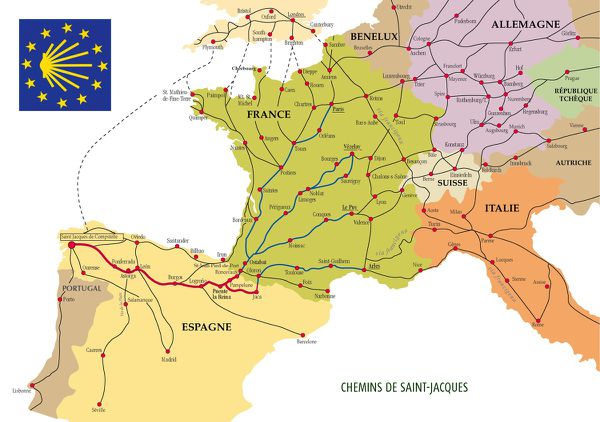 Today I am leaving for Bordeaux and the southwest of France for a week before beginning my pilgrimage to Santiago de Compostela in Spain. I plan on walking the 800 km route for about 40 days and so I won't be posting anything here unless I have access to the internet somewhere along the way. For anyone interested, here is a map of the popular routes. I leave from St-Jean-Pied-de-Port on the 11th. Take care and God bless.
Today I am leaving for Bordeaux and the southwest of France for a week before beginning my pilgrimage to Santiago de Compostela in Spain. I plan on walking the 800 km route for about 40 days and so I won't be posting anything here unless I have access to the internet somewhere along the way. For anyone interested, here is a map of the popular routes. I leave from St-Jean-Pied-de-Port on the 11th. Take care and God bless.
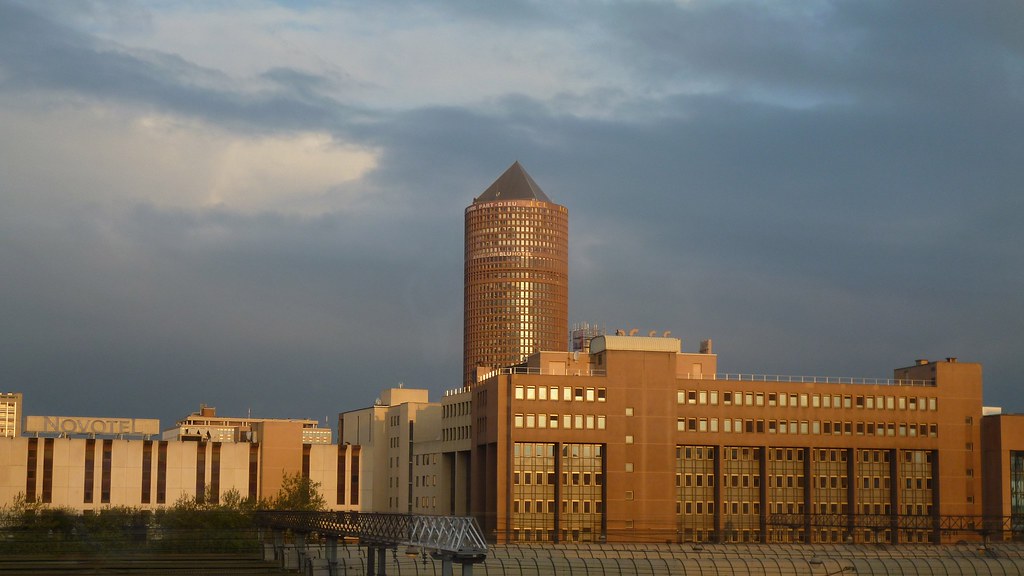 Looking out from my hotel window I could see one of Lyon’s most famous landmarks, the LCL-Tour Part Dieu, affectinaltly known as “Le Crayon” (the pencil), by most locals and tourists. It was the first skyscraper to be built in Lyon in 1977. It currently stands as the ninth-tallest building in France. Before checking out of the hotel, I decided to leave my bags with reception and stroll around perhaps one of the most beautiful green spaces I’ve ever seen, the Parc de la Tête d'Or.
Looking out from my hotel window I could see one of Lyon’s most famous landmarks, the LCL-Tour Part Dieu, affectinaltly known as “Le Crayon” (the pencil), by most locals and tourists. It was the first skyscraper to be built in Lyon in 1977. It currently stands as the ninth-tallest building in France. Before checking out of the hotel, I decided to leave my bags with reception and stroll around perhaps one of the most beautiful green spaces I’ve ever seen, the Parc de la Tête d'Or. 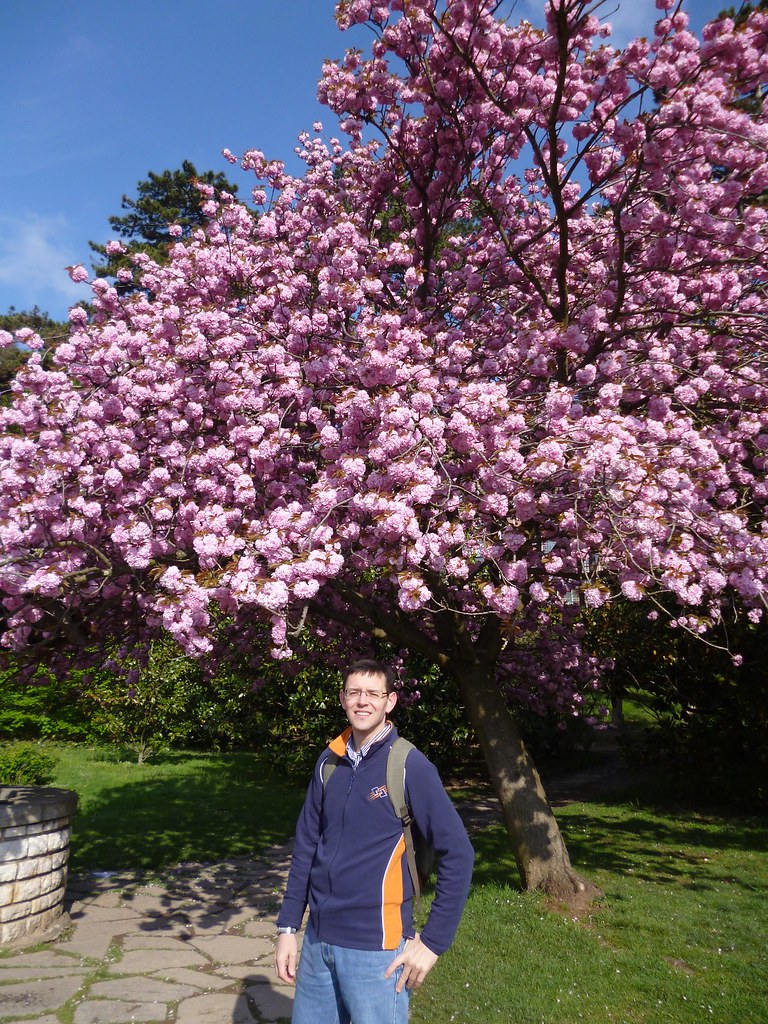 This magnificent park is Lyon’s main “breathing space” at 290 acres. The name of the English-style gardens derives from local folklore, which claims that a golden head of Christ is buried here.
This magnificent park is Lyon’s main “breathing space” at 290 acres. The name of the English-style gardens derives from local folklore, which claims that a golden head of Christ is buried here. 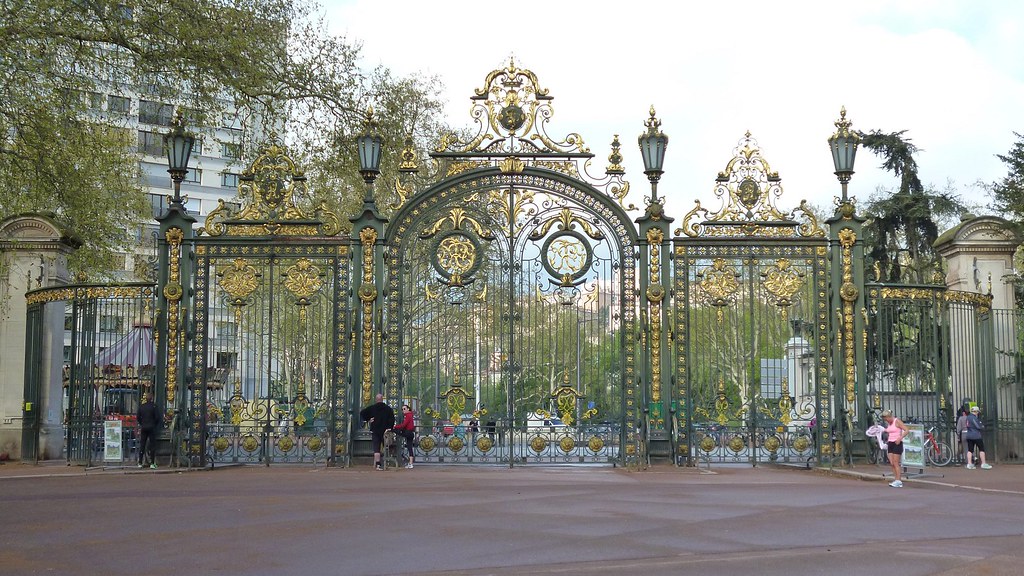 Huge wrought-iron gates known as the Porte des Enfants du Rhône mark the entrance. The park was originally planned for during the 18th century but was not built until 1856.
Huge wrought-iron gates known as the Porte des Enfants du Rhône mark the entrance. The park was originally planned for during the 18th century but was not built until 1856. 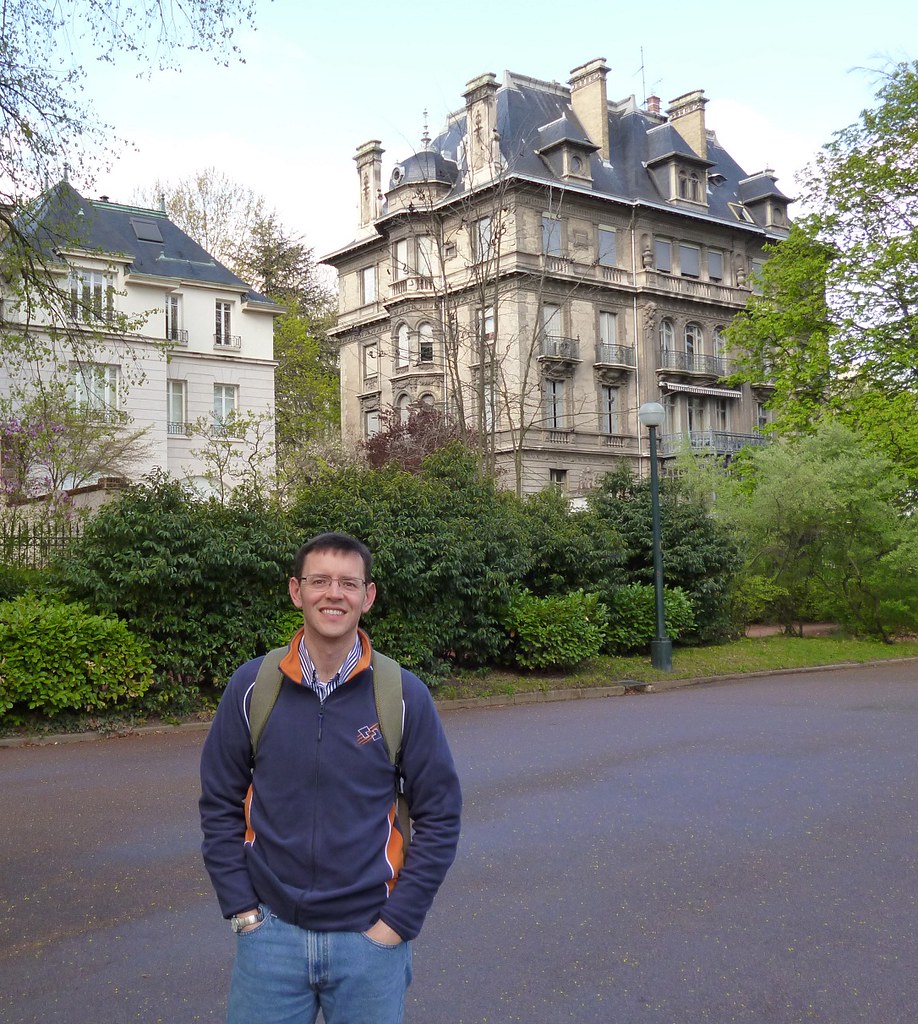 The prefect Claude-Marius Vaïsse entrusted the task to Joseph-Gustave Bonnet, the city’s chief engineer. He was responsible for creating a nature area, intended to be healthier than the lowly “guinguettes” along the waterfront and to give the bourgeoisie a place to parade their carriages and finery, in imitation of the Bois de Boulogne outside of Paris.
The prefect Claude-Marius Vaïsse entrusted the task to Joseph-Gustave Bonnet, the city’s chief engineer. He was responsible for creating a nature area, intended to be healthier than the lowly “guinguettes” along the waterfront and to give the bourgeoisie a place to parade their carriages and finery, in imitation of the Bois de Boulogne outside of Paris. 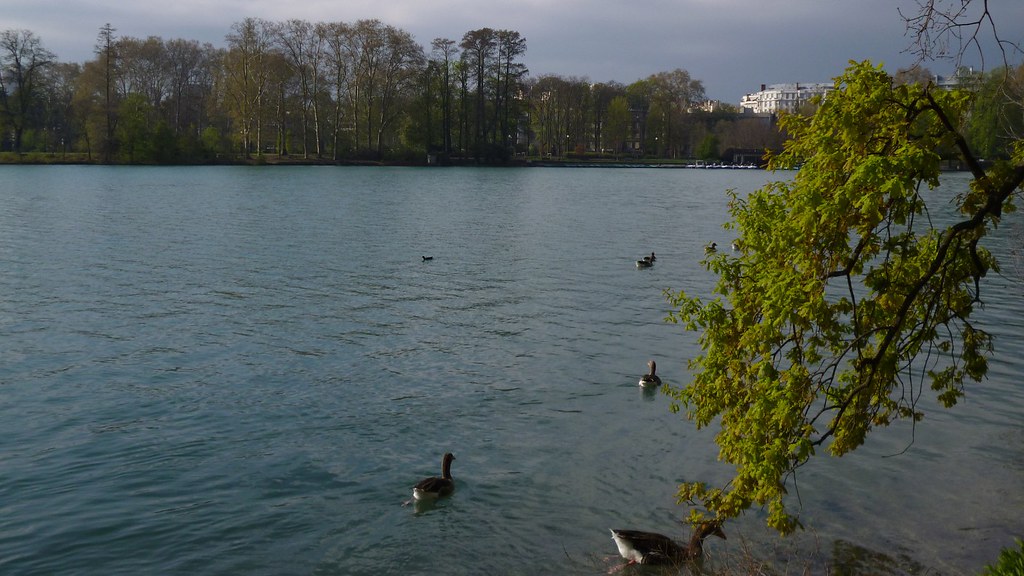 The Swiss landscape designers Eugene and Denis Bulher spent five years trying to tame the swampy terrain and built a dam creating a huge lake with an island in the middle known as Swan Island.
The Swiss landscape designers Eugene and Denis Bulher spent five years trying to tame the swampy terrain and built a dam creating a huge lake with an island in the middle known as Swan Island. 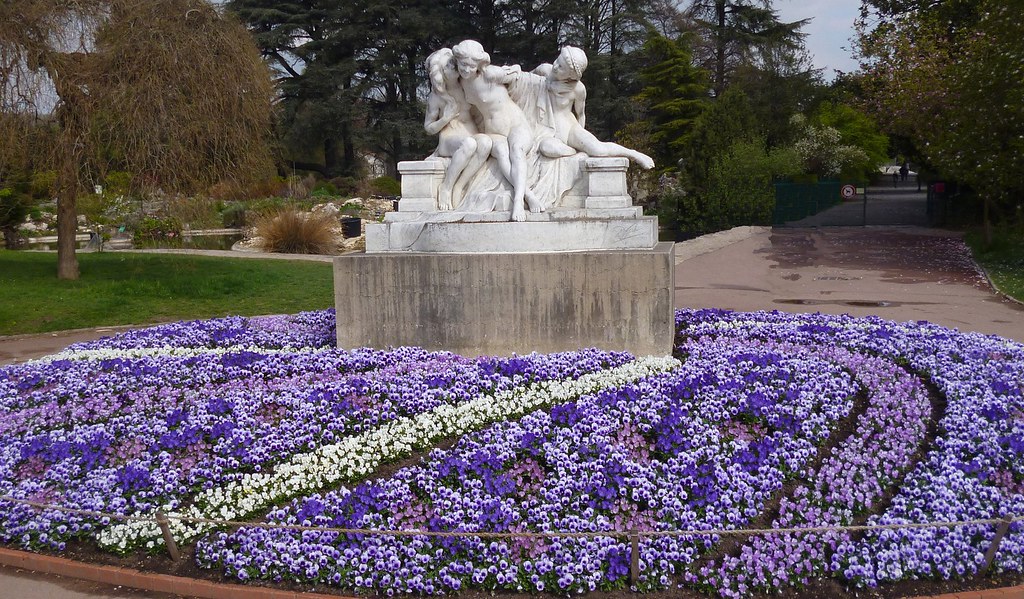
 Although not finished, the park opened in 1857 to the public, but the great greenhouse, the chalet restaurant, the dairy farm and the zoo were not completed until 1862.
Although not finished, the park opened in 1857 to the public, but the great greenhouse, the chalet restaurant, the dairy farm and the zoo were not completed until 1862. 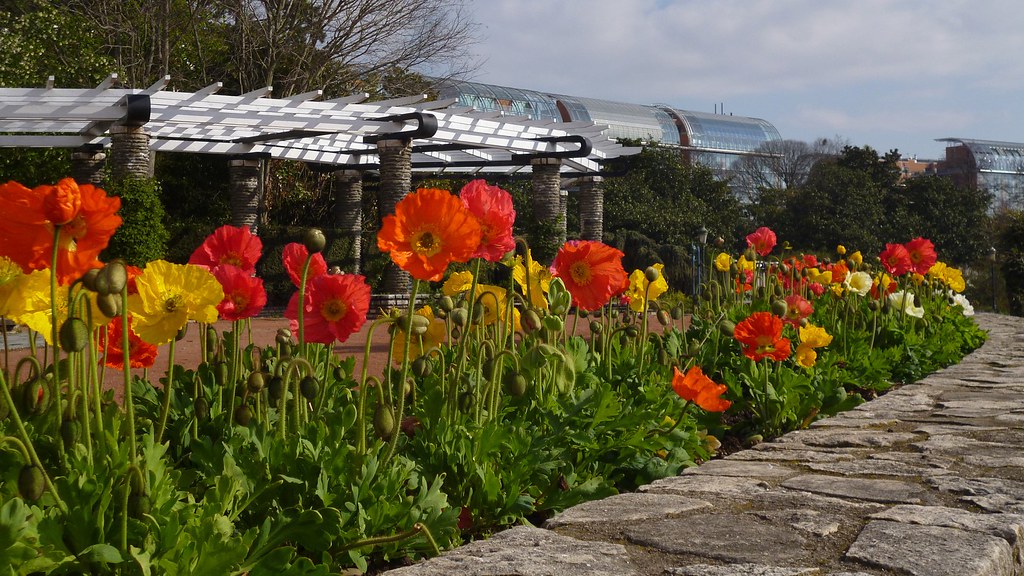
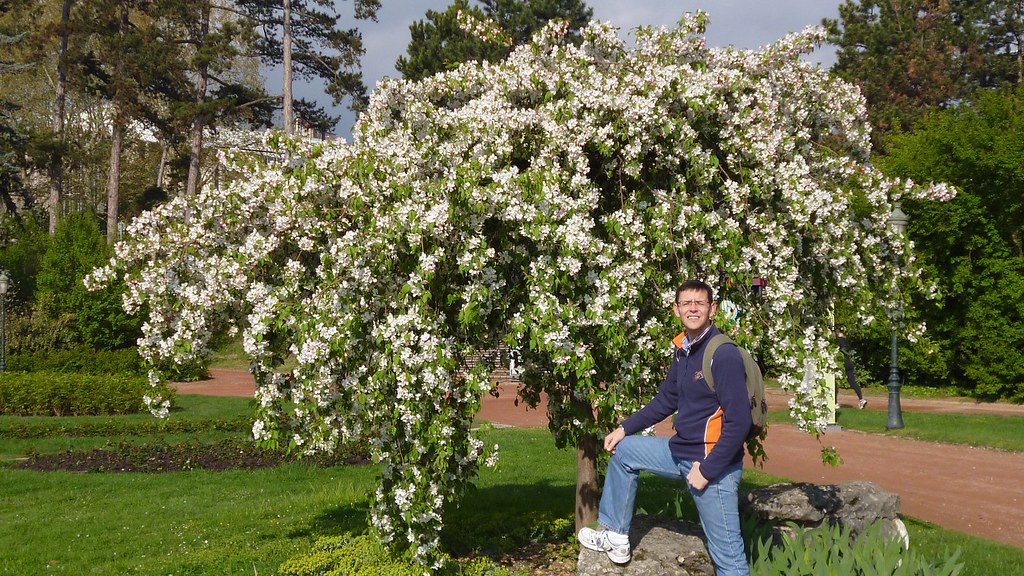 Today, the Parc de la Tête d'Or has four rose gardens and a botanical garden with 15,000 listed plants. The zoo has about 1000 animals, including 300 farm animals, 700 wild animals (250 mammals, 300 birds, 80 reptiles, 70 fish) the most popular being the Atlas lion.
Today, the Parc de la Tête d'Or has four rose gardens and a botanical garden with 15,000 listed plants. The zoo has about 1000 animals, including 300 farm animals, 700 wild animals (250 mammals, 300 birds, 80 reptiles, 70 fish) the most popular being the Atlas lion. 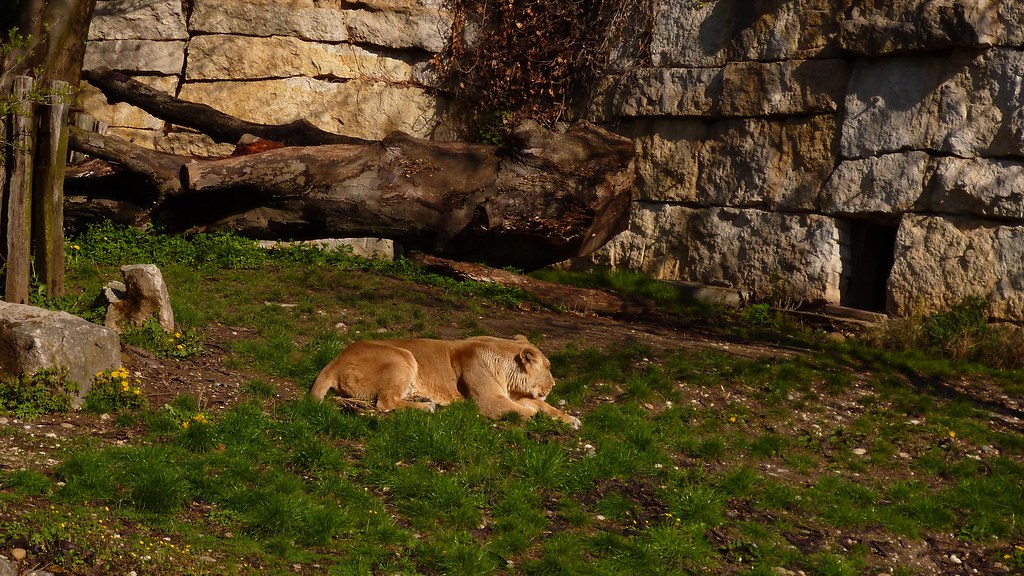
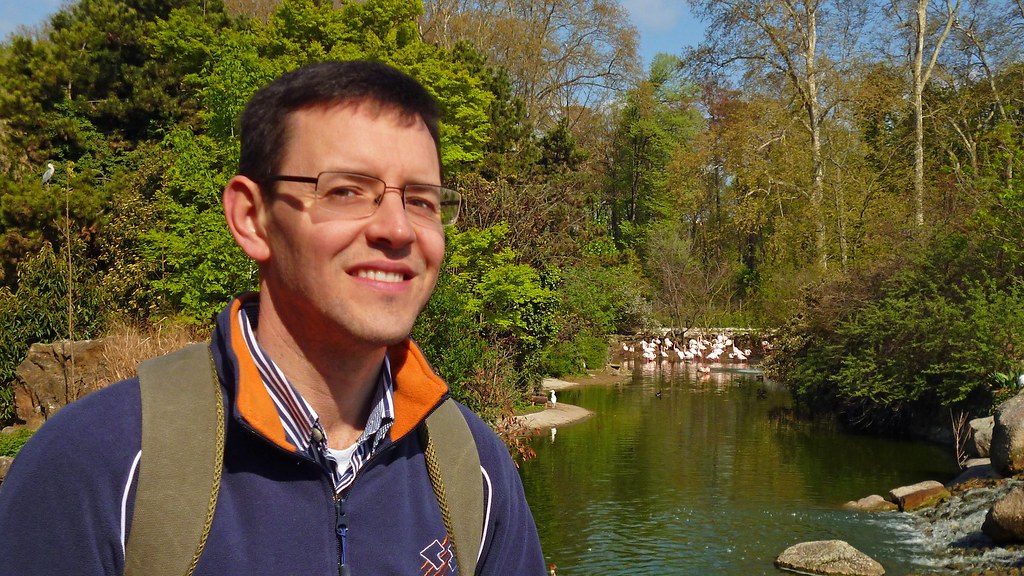
 Personally, I liked the flamingo pond, the monkey cages and the turtle sanctuary. There are several monuments placed throughout the park including the Espace droits de l'homme in the northern part of the park.
Personally, I liked the flamingo pond, the monkey cages and the turtle sanctuary. There are several monuments placed throughout the park including the Espace droits de l'homme in the northern part of the park. 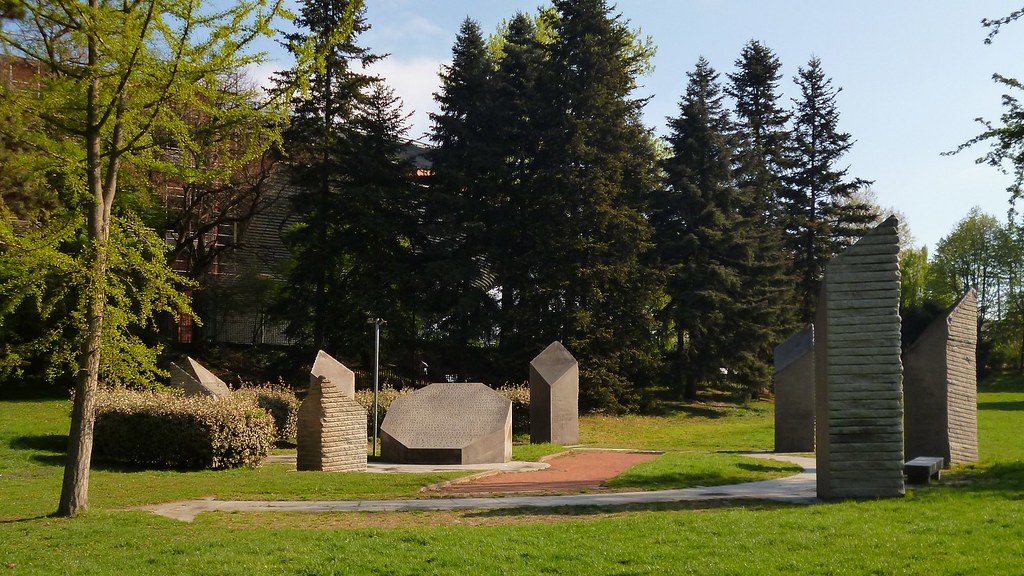
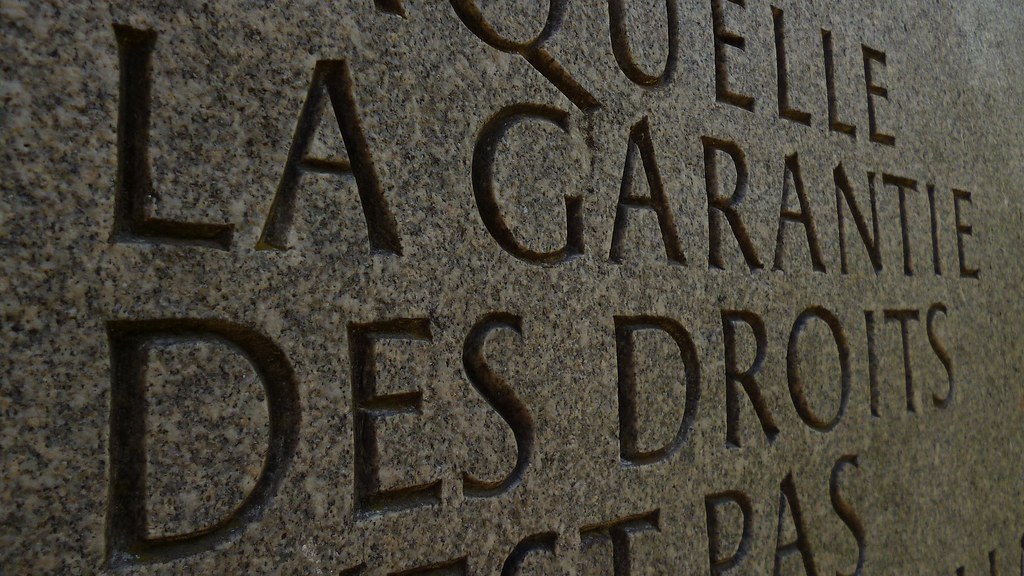 Monoliths erected around the site contain the text of the famous statement. Another, more recent monument is the sculpture Ensemble pour la Paix et la Justice, made up of bronze and stone.
Monoliths erected around the site contain the text of the famous statement. Another, more recent monument is the sculpture Ensemble pour la Paix et la Justice, made up of bronze and stone. 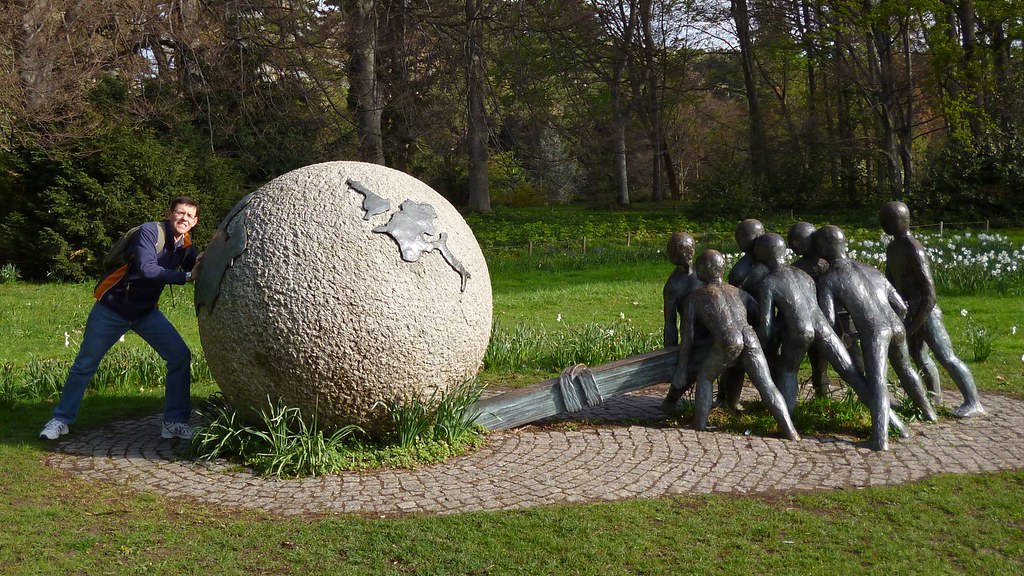
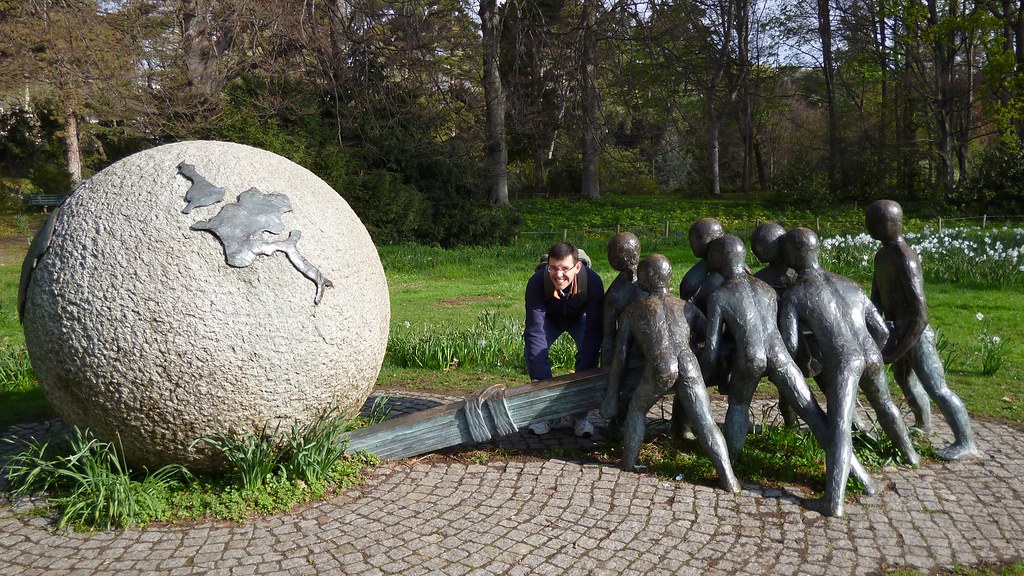 It was created in 1996 by Xavier de la Fraissinette to commemorate the meeting of the G7. The most elegant part of the park in my opinion was the botanical gardens with its greenhouses.
It was created in 1996 by Xavier de la Fraissinette to commemorate the meeting of the G7. The most elegant part of the park in my opinion was the botanical gardens with its greenhouses. 



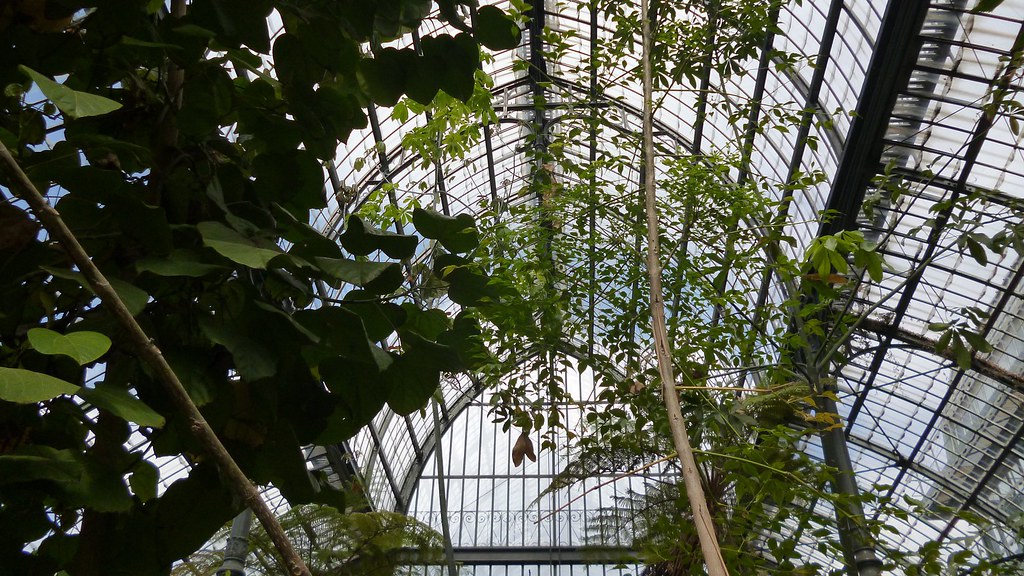 They enclose a total of 6,500 m² in area, and include a central pavilion for tropical plants including camellias over a hundred years old; a greenhouse-aquarium with Amazonian water lilies; a Dutch greenhouse containing carnivorous plants; small greenhouses with orchids; and small cold greenhouses with azaleas and cacti.
They enclose a total of 6,500 m² in area, and include a central pavilion for tropical plants including camellias over a hundred years old; a greenhouse-aquarium with Amazonian water lilies; a Dutch greenhouse containing carnivorous plants; small greenhouses with orchids; and small cold greenhouses with azaleas and cacti. 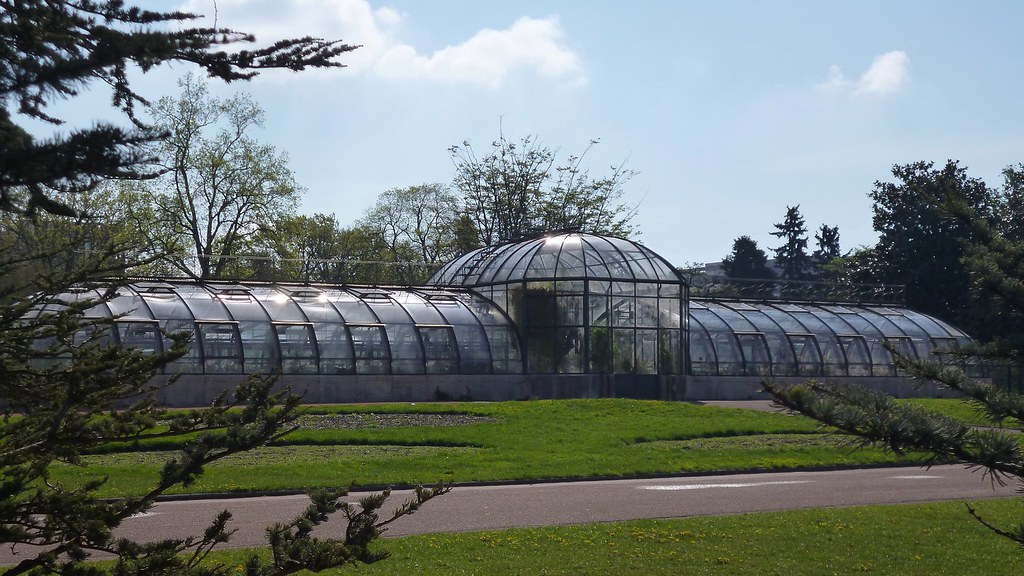
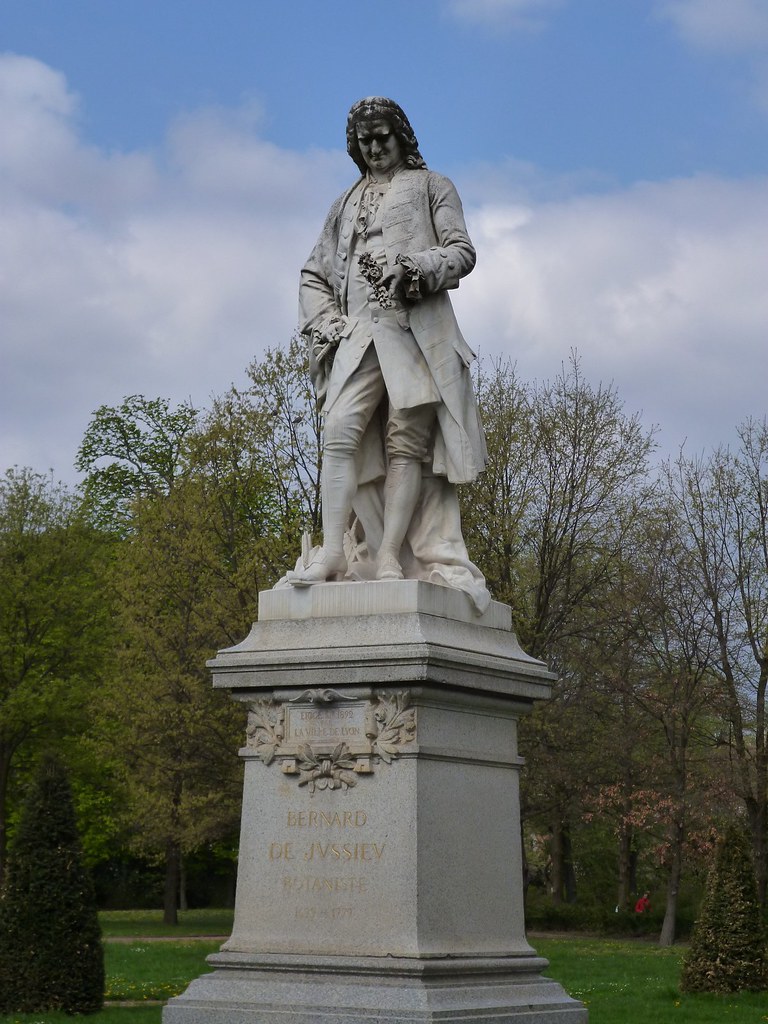 A statue of Bernard de Jussieu, the botanist who in 1759 arranged and classified the plants in the royal garden of the Trianon at the Palace of Versailles guards the entrance to the large greenhouses. With time to spare I decided to visit another of Lyon’s wonderful churches.
A statue of Bernard de Jussieu, the botanist who in 1759 arranged and classified the plants in the royal garden of the Trianon at the Palace of Versailles guards the entrance to the large greenhouses. With time to spare I decided to visit another of Lyon’s wonderful churches. 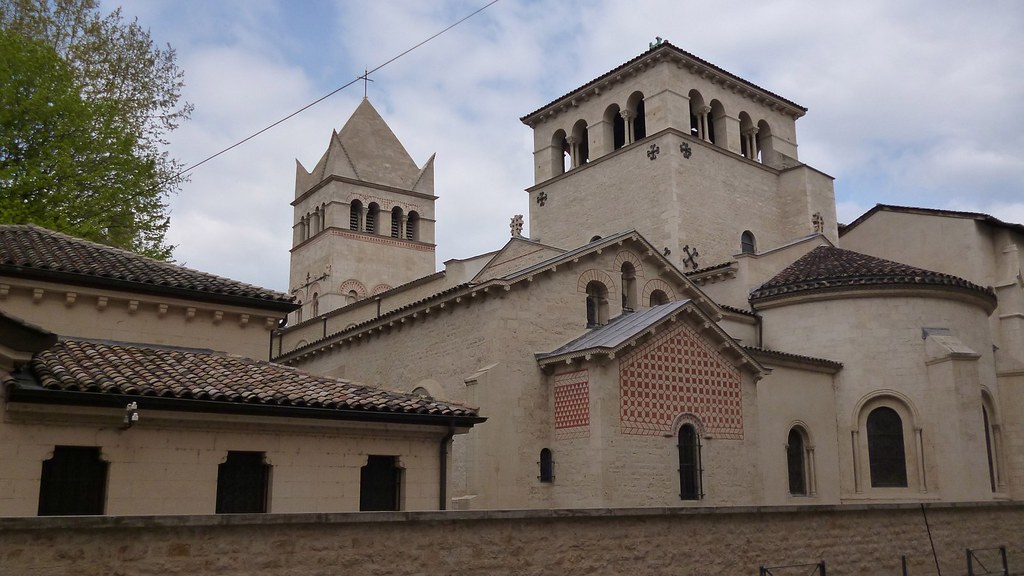 Located in the in the Presqu'île district, the Basilica of Saint-Martin d'Ainay started out as a Benedictine priory in 859. The abbey church was built at the end of the 11th century, consecrated in 1107 and dedicated to Saint Martin of Tours by Pope Pascal II.
Located in the in the Presqu'île district, the Basilica of Saint-Martin d'Ainay started out as a Benedictine priory in 859. The abbey church was built at the end of the 11th century, consecrated in 1107 and dedicated to Saint Martin of Tours by Pope Pascal II. 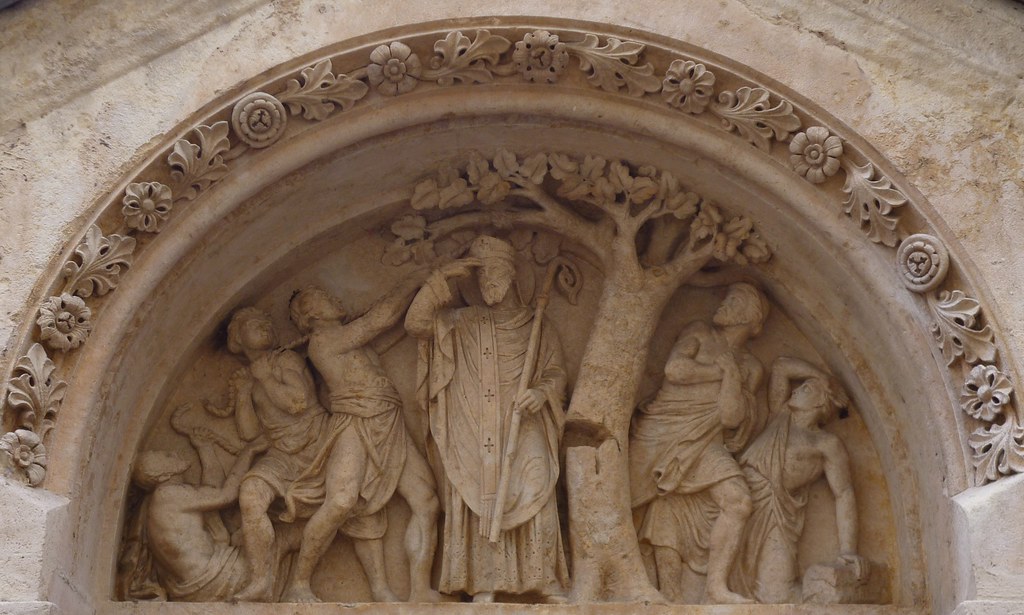
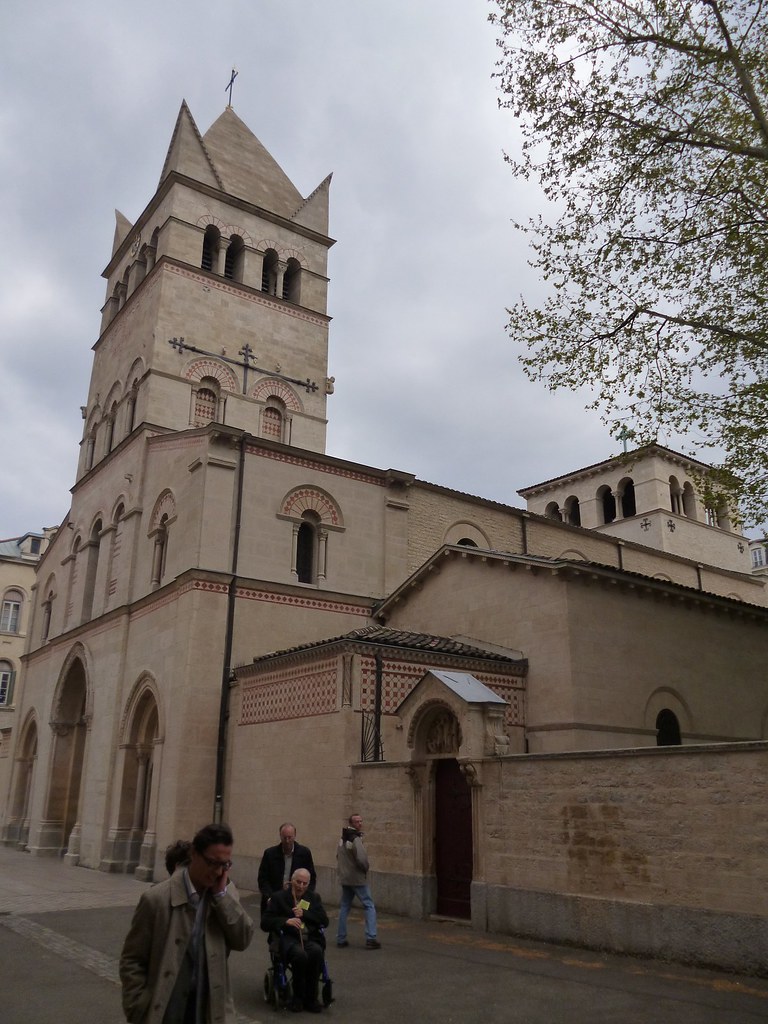

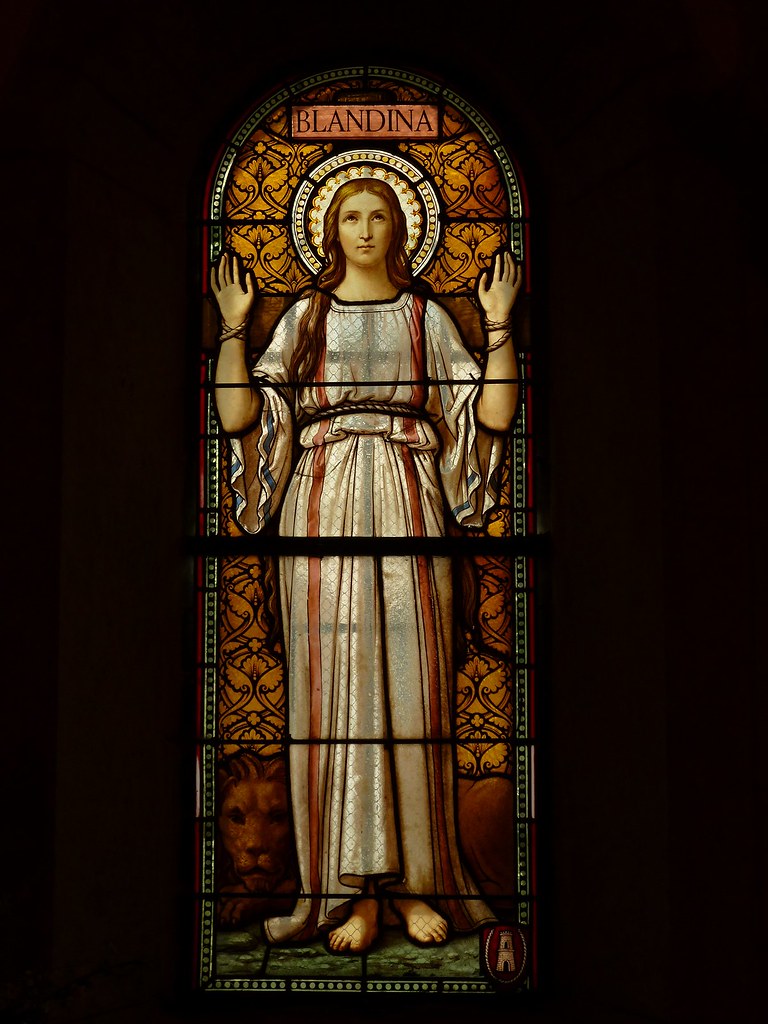
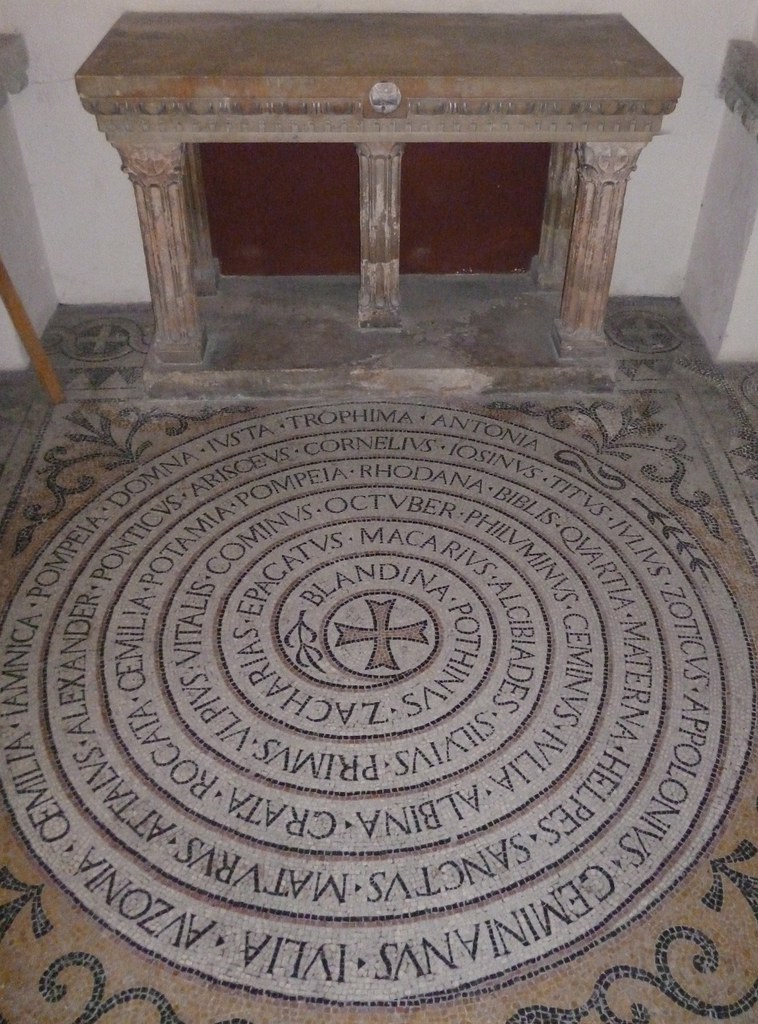 It is one of the rare Romanesque churches still extant in Lyon. The basilica at Ainay contains several architectural styles: the chapel of Saint Blandina is pre-Romanesque; the principal structure is Romanesque; the chapel of Saint Michael is Gothic; and the overall restoration and enlargement of the 19th century is Romanesque Revival.
It is one of the rare Romanesque churches still extant in Lyon. The basilica at Ainay contains several architectural styles: the chapel of Saint Blandina is pre-Romanesque; the principal structure is Romanesque; the chapel of Saint Michael is Gothic; and the overall restoration and enlargement of the 19th century is Romanesque Revival.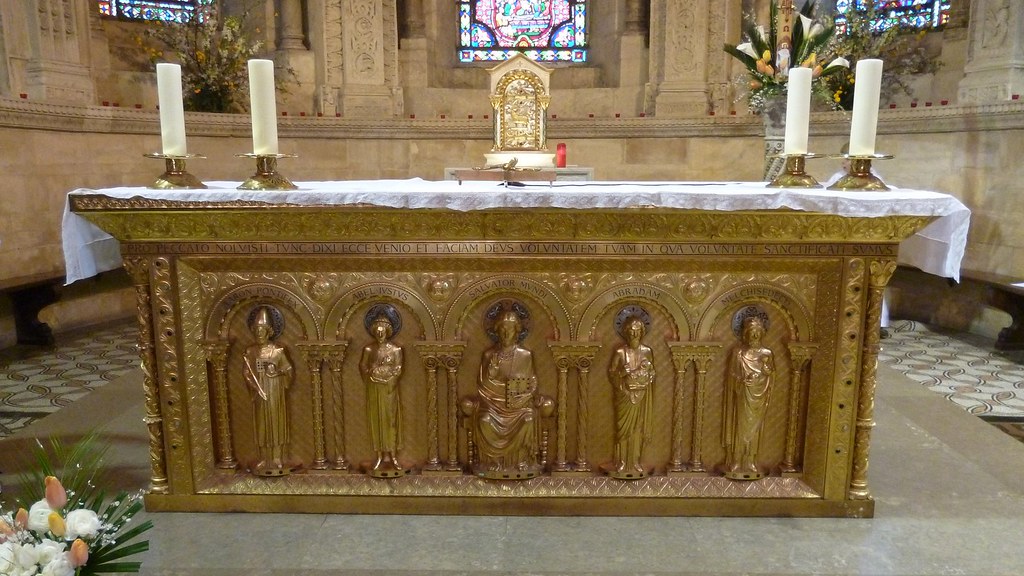
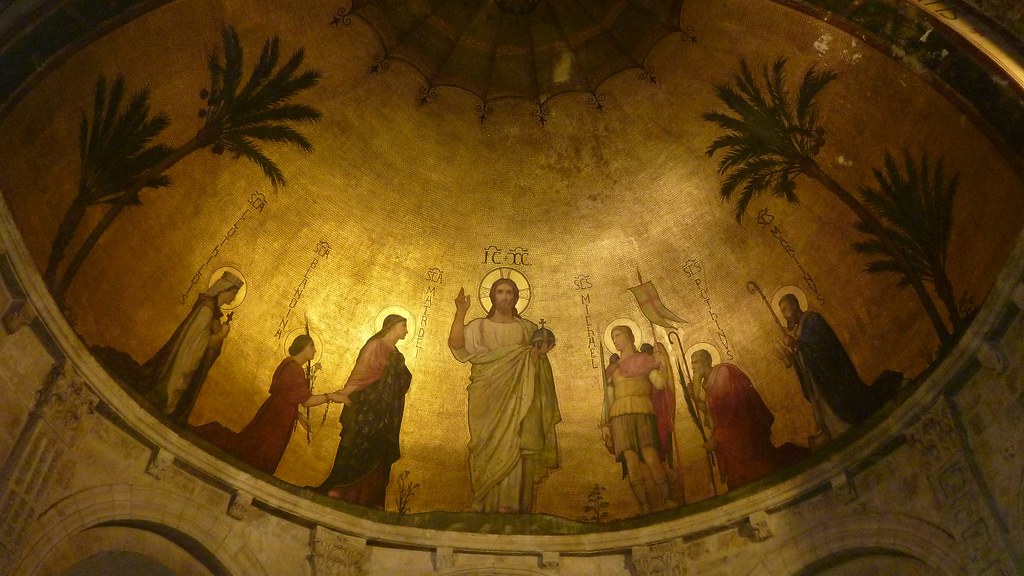
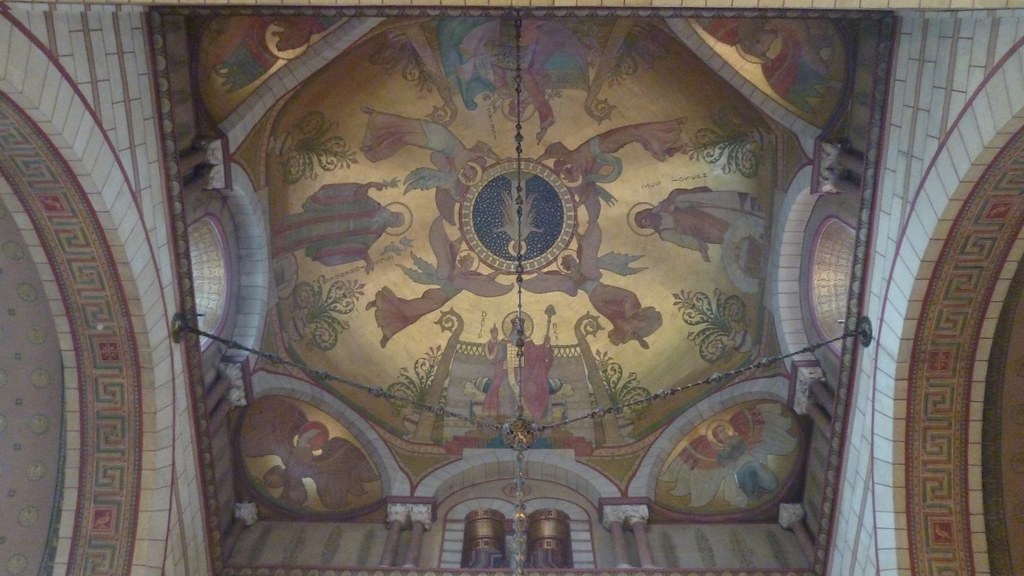
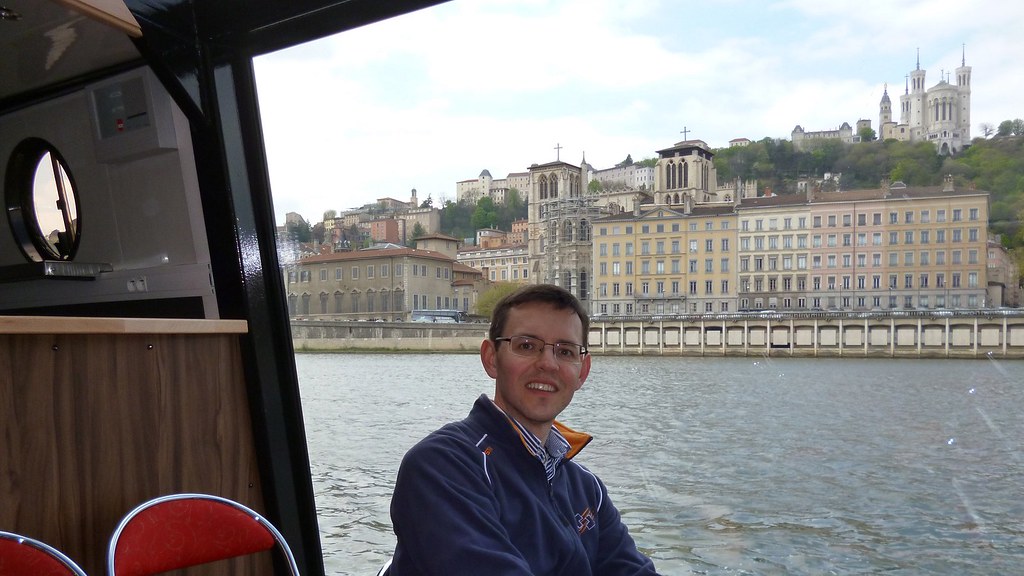 Purchasing a City Pass allowed us to have unlimited access to all forms of city transportation, granted us entry into nearly all of the museums, join any guided tour sponsored by the tourist office and even allowed us to take a boat cruise along the Saône.
Purchasing a City Pass allowed us to have unlimited access to all forms of city transportation, granted us entry into nearly all of the museums, join any guided tour sponsored by the tourist office and even allowed us to take a boat cruise along the Saône. 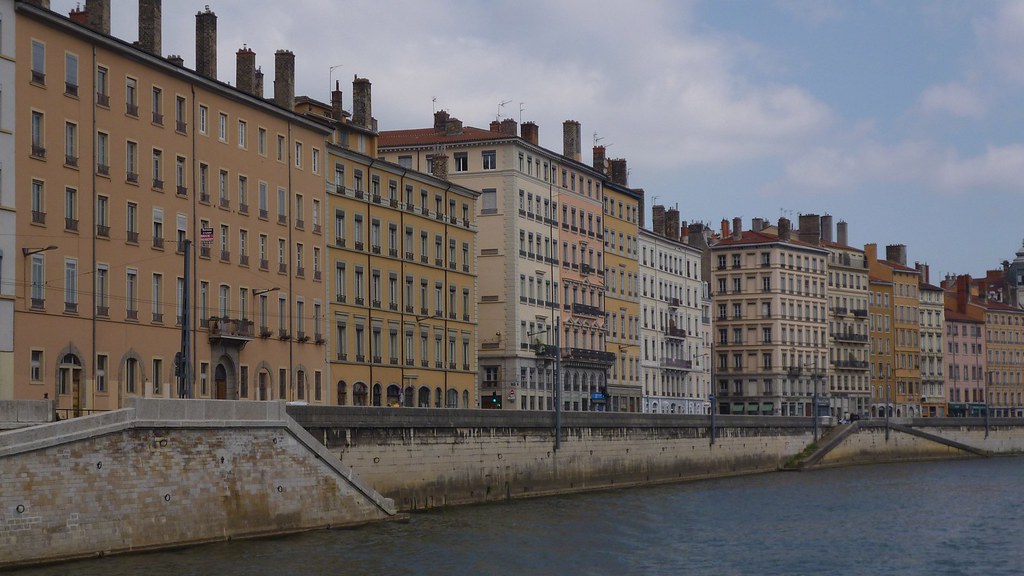 Our guide told us all about the old buildings that we could see from the ship, including the new home of the École Nationale des Beaux-Arts along the quay St-Vincent within the walls of an 18th century convent.
Our guide told us all about the old buildings that we could see from the ship, including the new home of the École Nationale des Beaux-Arts along the quay St-Vincent within the walls of an 18th century convent. 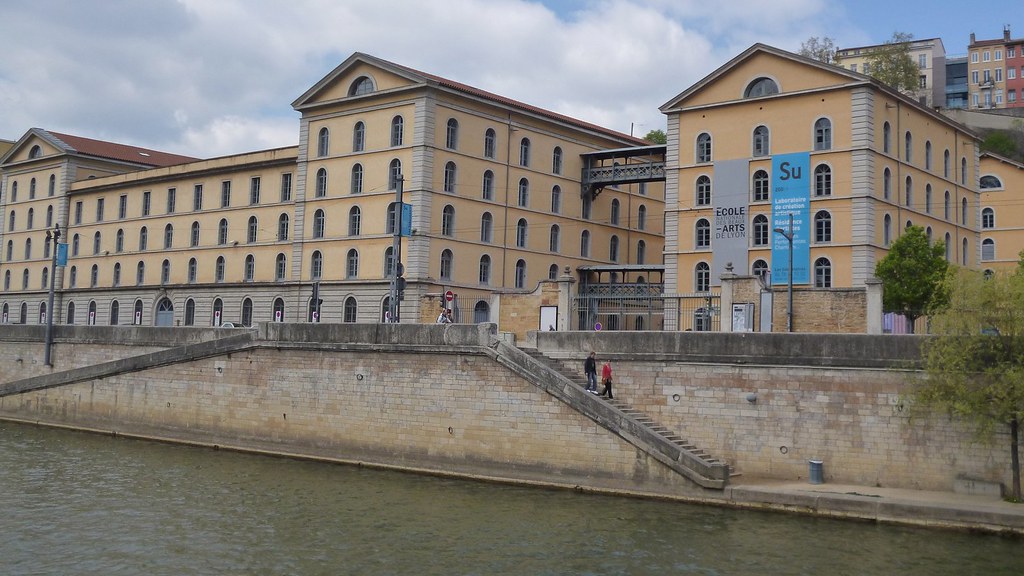 Confiscated during the French Revolution, it became a granary and eventually a factory for the French military where food rations were packaged.
Confiscated during the French Revolution, it became a granary and eventually a factory for the French military where food rations were packaged.  Further along the river is the Grenier d'abondance built between 1722 and 1728 as a storage area for corn and other grains. Eventually it became a military barracks and arsenal for the Gendarmerie nationale until 1987.
Further along the river is the Grenier d'abondance built between 1722 and 1728 as a storage area for corn and other grains. Eventually it became a military barracks and arsenal for the Gendarmerie nationale until 1987.  The Fort of Saint-John is located right beside the Grenier d’abondance and was originally built as a stronghold against the walls of the Croix-Rousse district in the early 16th century to protect the inhabitants from the Swiss. It was finally completed in the early 18th century but converted into a regional pharmacy for the Army Health Service in 1932. In 1984 the Army Veterinary Service occupied it. Since its renovation in 2001, it has been the home to the École nationale des Contrôleurs du Trésor Public.
The Fort of Saint-John is located right beside the Grenier d’abondance and was originally built as a stronghold against the walls of the Croix-Rousse district in the early 16th century to protect the inhabitants from the Swiss. It was finally completed in the early 18th century but converted into a regional pharmacy for the Army Health Service in 1932. In 1984 the Army Veterinary Service occupied it. Since its renovation in 2001, it has been the home to the École nationale des Contrôleurs du Trésor Public. 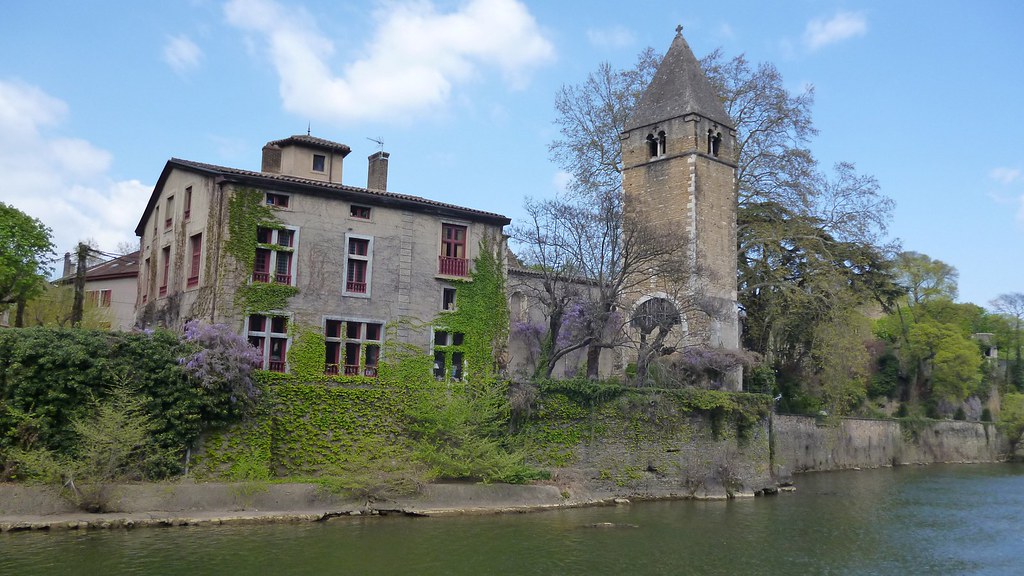 The boat turned around once it reached l'île Barbe, an island in the middle of the river. An abbey was founded on this island in the 5th century and was the first monastic establishment in Lyon and one of the oldest in Gaul. Charlemagne endowed it with a fine library. Sadly, it was plundered several times in 676, 725 and 945. In the 9th century it adopted the rule of Saint-Benedict and gradually gained power before being devastated and burnt down in 1562 by Protestant troops. Today, only the ruins of the Romanesque church of Notre-Dame remain. Private residences populate the rest of the island.
The boat turned around once it reached l'île Barbe, an island in the middle of the river. An abbey was founded on this island in the 5th century and was the first monastic establishment in Lyon and one of the oldest in Gaul. Charlemagne endowed it with a fine library. Sadly, it was plundered several times in 676, 725 and 945. In the 9th century it adopted the rule of Saint-Benedict and gradually gained power before being devastated and burnt down in 1562 by Protestant troops. Today, only the ruins of the Romanesque church of Notre-Dame remain. Private residences populate the rest of the island. 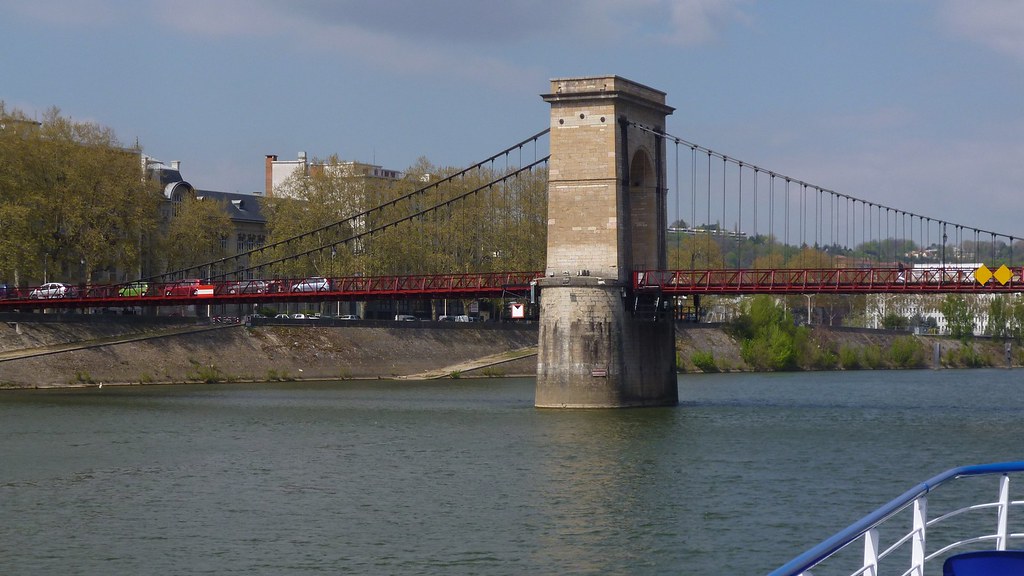 It has a public park accessible by crossing one of the oldest suspension bridges in Lyon built in 1827. After our wonderful boat ride, we went to the Musée des Automates. The museum is devoted to the art of automatons with seven rooms and over 20 animated scenes for visitors to enjoy.
It has a public park accessible by crossing one of the oldest suspension bridges in Lyon built in 1827. After our wonderful boat ride, we went to the Musée des Automates. The museum is devoted to the art of automatons with seven rooms and over 20 animated scenes for visitors to enjoy. 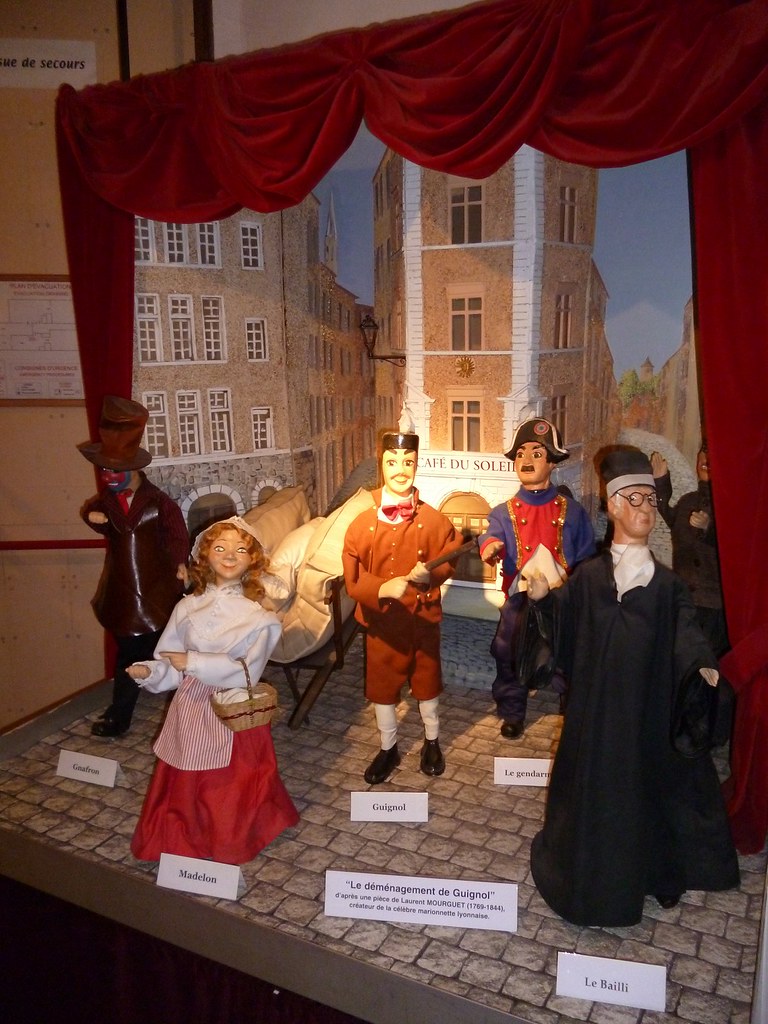
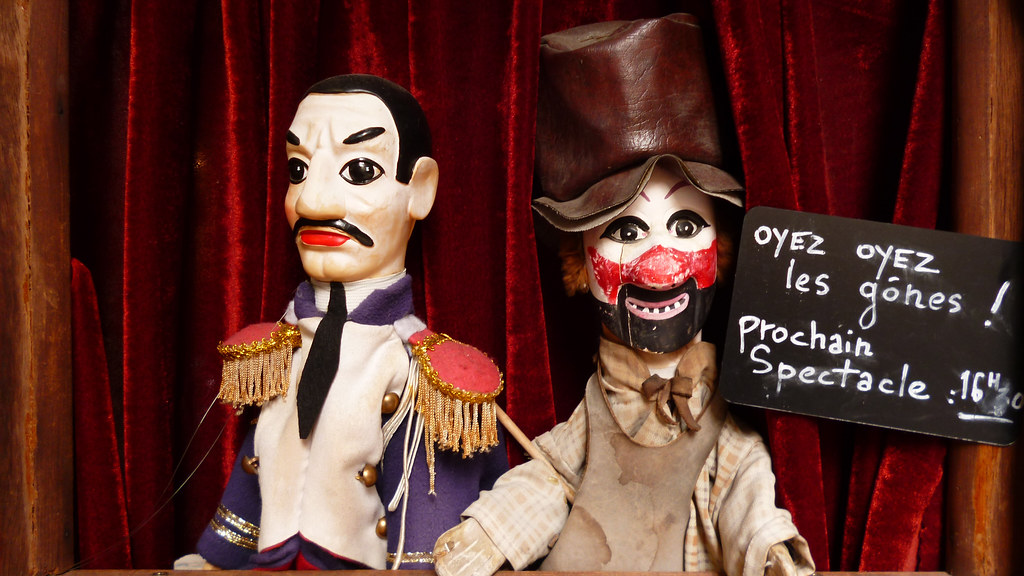 One of the first scenes pays homage to Laurent Mourguet, the creator of Lyon’s famous puppet, Guignol. His friend Gnafron, his wife Madelon and the policeman are common characters in a Guignol puppet show.
One of the first scenes pays homage to Laurent Mourguet, the creator of Lyon’s famous puppet, Guignol. His friend Gnafron, his wife Madelon and the policeman are common characters in a Guignol puppet show. 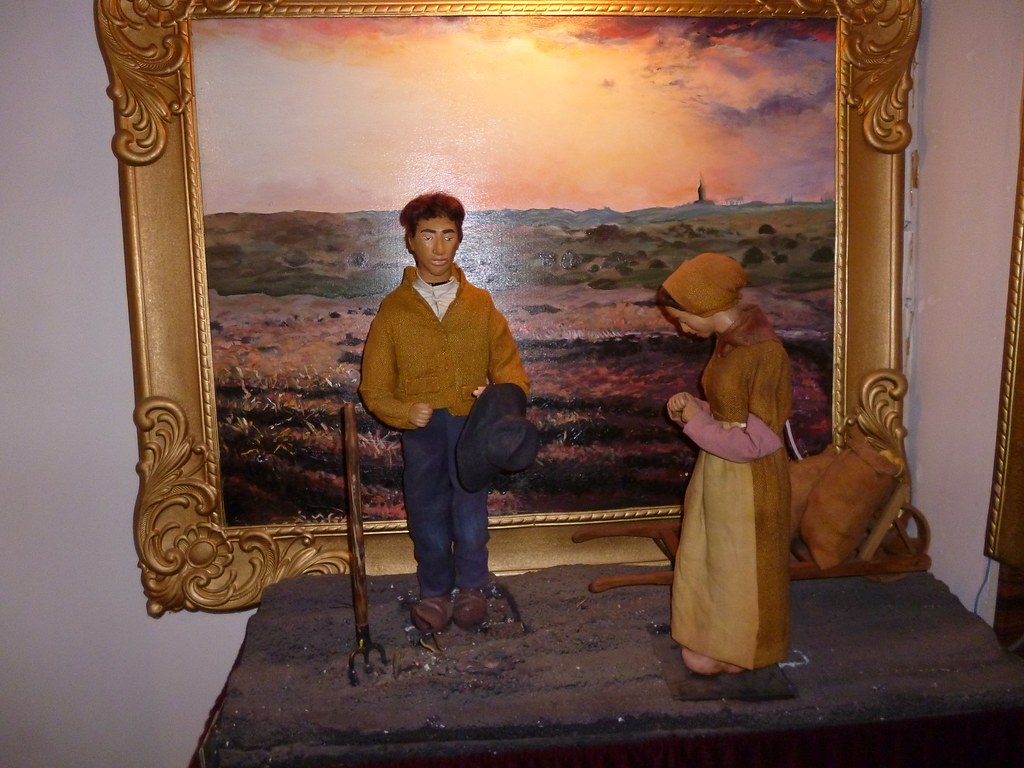
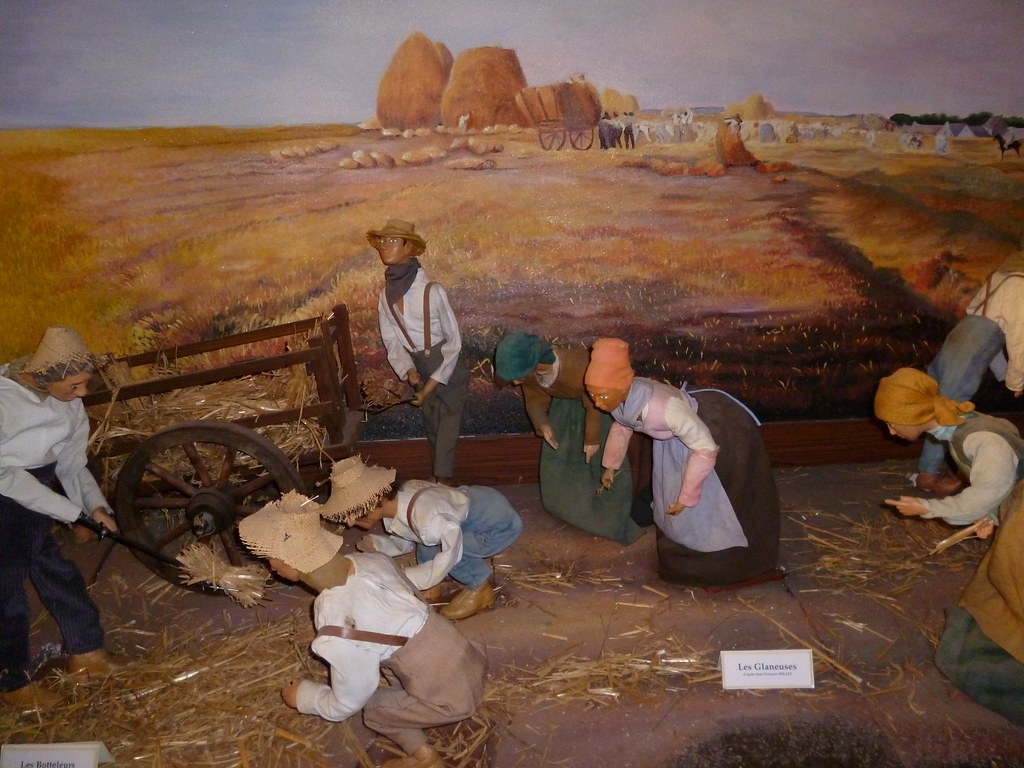
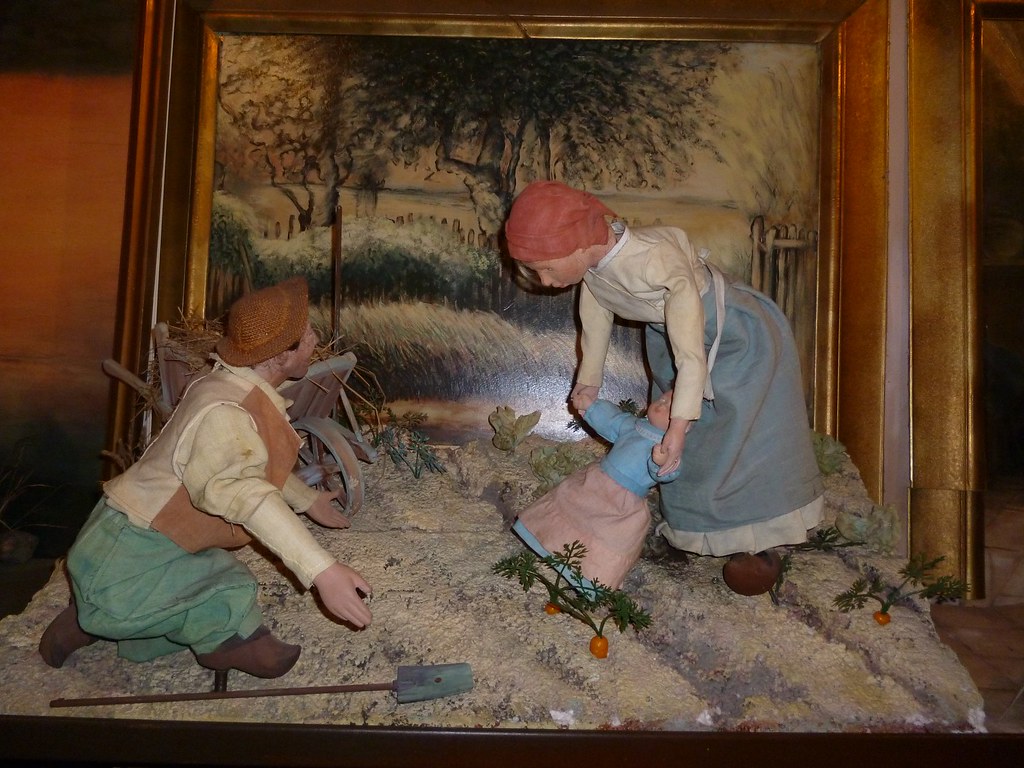
 The next room has several scenes that pay tribute to the painter Jean-Francois Millet who knew so perfectly how to express the hard work of French farmers. The background paintings are copies of Millet masterpieces with working automatons placed in front.
The next room has several scenes that pay tribute to the painter Jean-Francois Millet who knew so perfectly how to express the hard work of French farmers. The background paintings are copies of Millet masterpieces with working automatons placed in front. 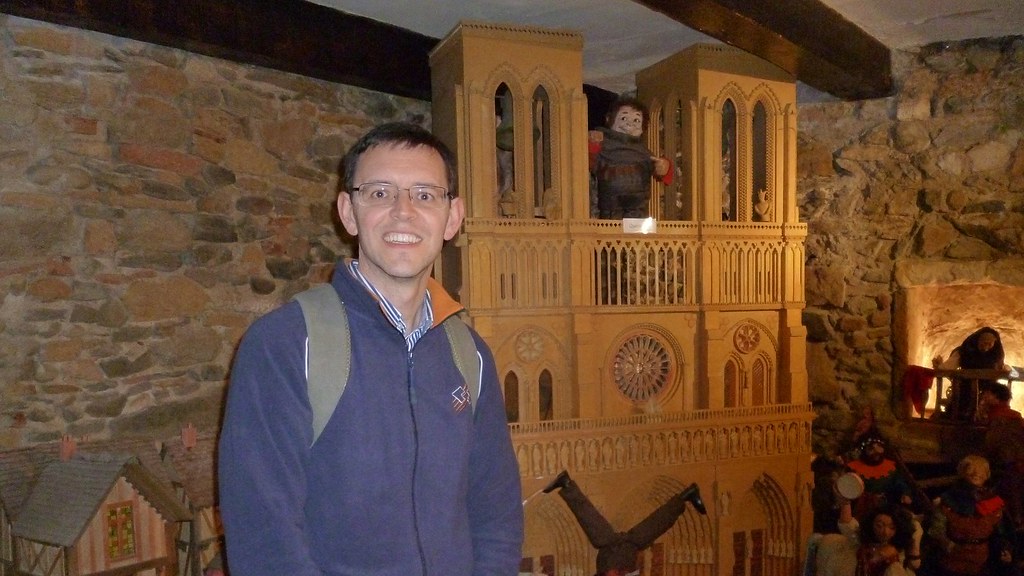 The next room is dedicated entirely to Victor Hugo’s famous novel The Hunchback of Notre-Dame. Quasimodo is the only automaton in the whole museum with moving eyes.
The next room is dedicated entirely to Victor Hugo’s famous novel The Hunchback of Notre-Dame. Quasimodo is the only automaton in the whole museum with moving eyes. 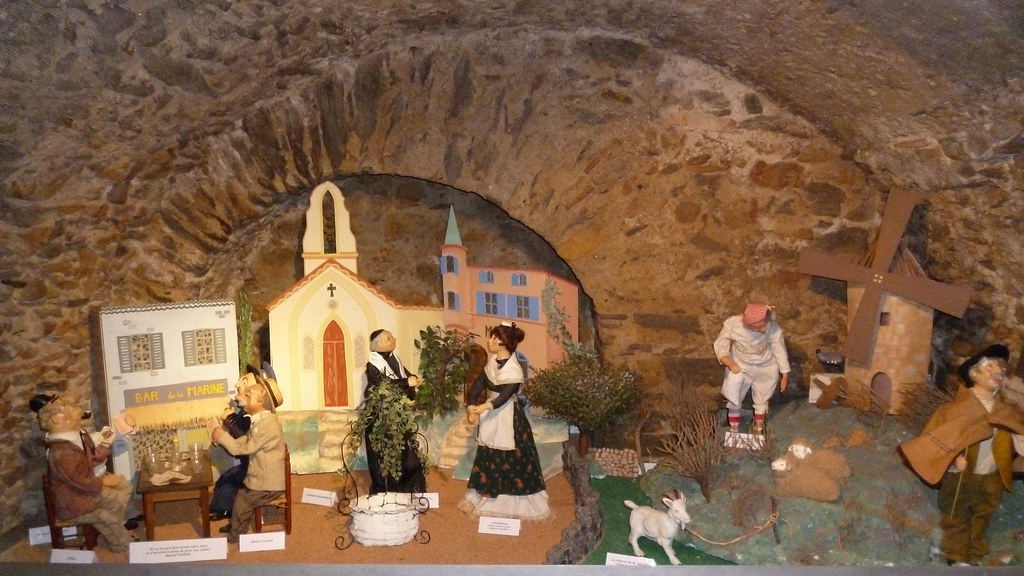 After that comes the depiction of a small village in Provence described so well by Alphonse Daudet in his writing Lettres de mon Moulin.
After that comes the depiction of a small village in Provence described so well by Alphonse Daudet in his writing Lettres de mon Moulin. 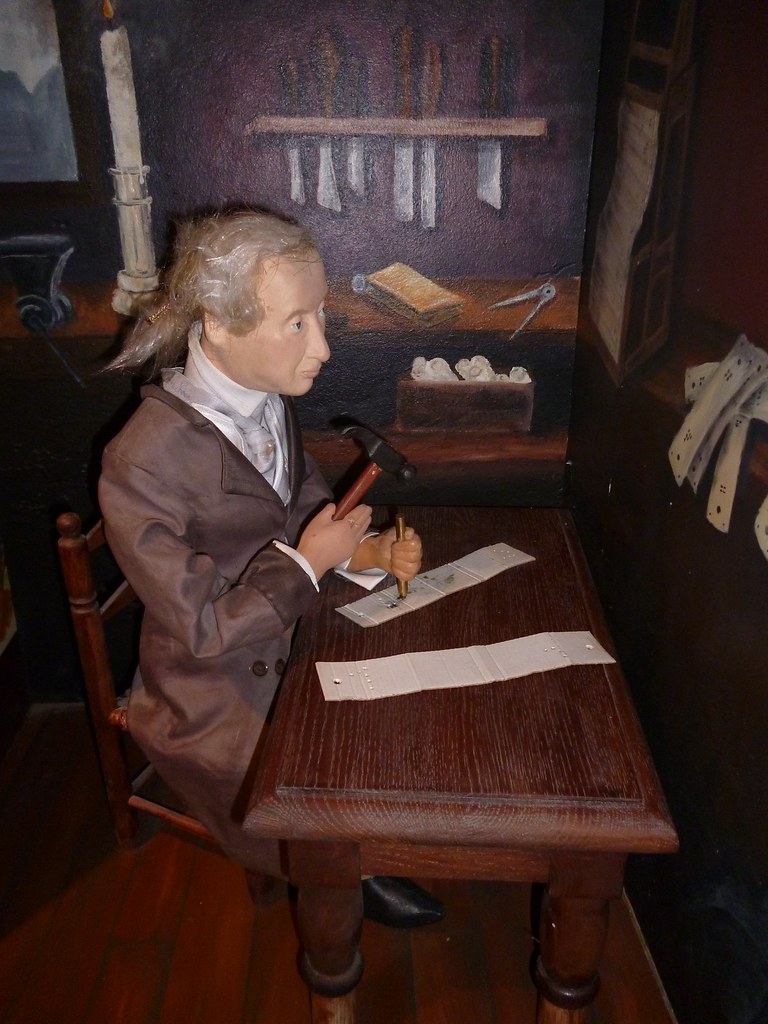 Room number five is a tribute to Joseph-Marie Jacquard, mechanic and inventor in 1800 of the first automated device for the silk weaving loom.
Room number five is a tribute to Joseph-Marie Jacquard, mechanic and inventor in 1800 of the first automated device for the silk weaving loom. 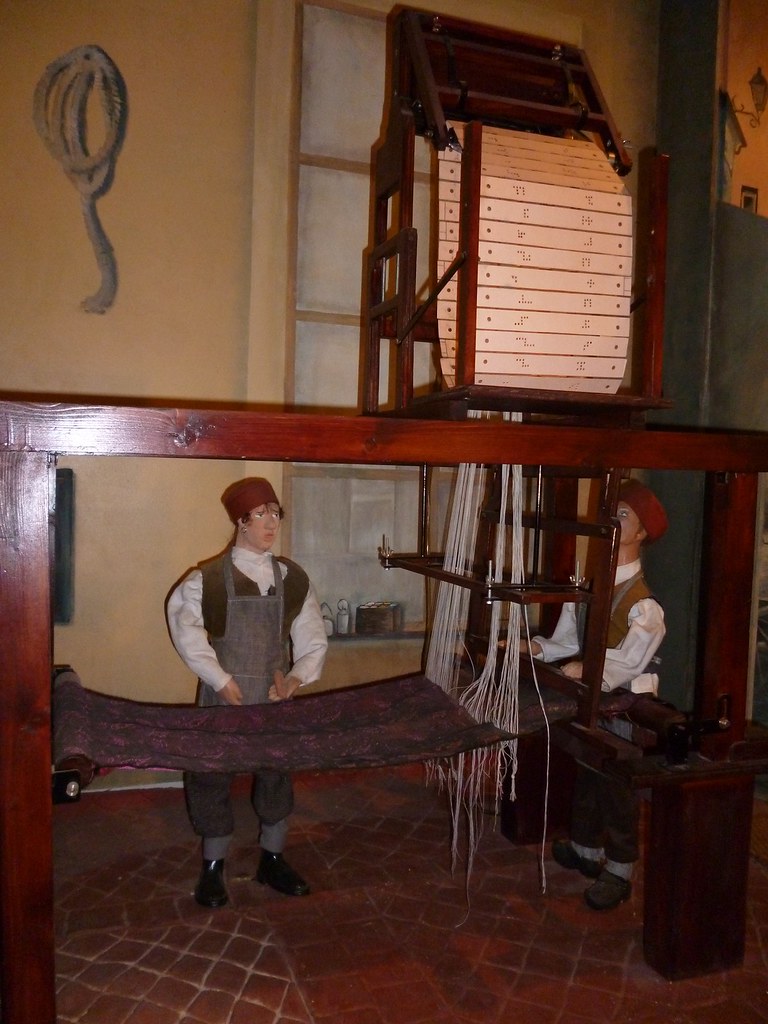
 The scenes depict life in the Croix-Rousse district with its silk workers busy at their trade. Other rooms depict scenes from Peter Pan, Pinocchio, Zorro, 20,000 Leagues Under the Sea, The Magic Flute and finally a scene paying homage to Renaissance writer François Rabelais
The scenes depict life in the Croix-Rousse district with its silk workers busy at their trade. Other rooms depict scenes from Peter Pan, Pinocchio, Zorro, 20,000 Leagues Under the Sea, The Magic Flute and finally a scene paying homage to Renaissance writer François Rabelais  with a scene from his most famous work, Gargantua and Pantagruel, about a giant who must be fed by a huge staff of kitchen workers who hustle and bustle about making all sorts of dishes.
with a scene from his most famous work, Gargantua and Pantagruel, about a giant who must be fed by a huge staff of kitchen workers who hustle and bustle about making all sorts of dishes.
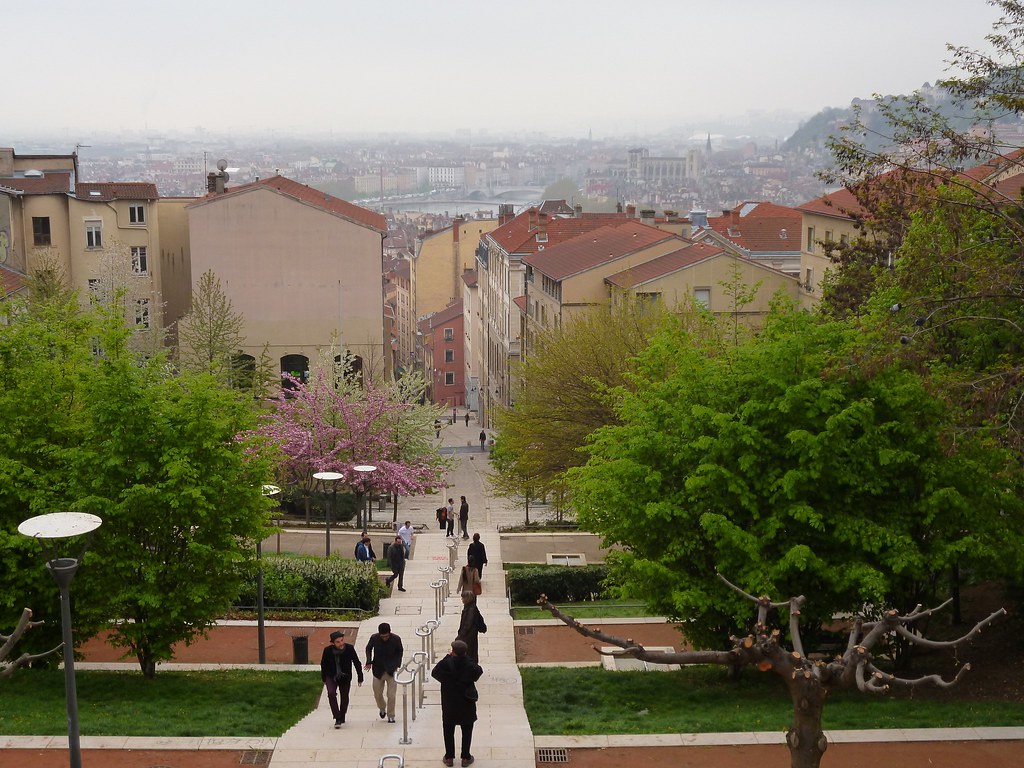 The second English-speaking tour of Lyon that I took was of the Croix-Rousse district. It was here that the silk industry in France really took off. It was silk which, in the 16th century, made Lyon a major industrial city; until then most of the silk fabrics in France had been imported from Italy.
The second English-speaking tour of Lyon that I took was of the Croix-Rousse district. It was here that the silk industry in France really took off. It was silk which, in the 16th century, made Lyon a major industrial city; until then most of the silk fabrics in France had been imported from Italy.  Two main figures dominate the history of this new industry. In 1536 Étienne Turquet, a man from Piedmont in Italy, offered to bring to Lyon silk and velvet weavers from Genoa and set up a factory. François I, who was anxious to stem the flow of money out of the country as a result of purchases of foreign silks, accepted his offer.
Two main figures dominate the history of this new industry. In 1536 Étienne Turquet, a man from Piedmont in Italy, offered to bring to Lyon silk and velvet weavers from Genoa and set up a factory. François I, who was anxious to stem the flow of money out of the country as a result of purchases of foreign silks, accepted his offer.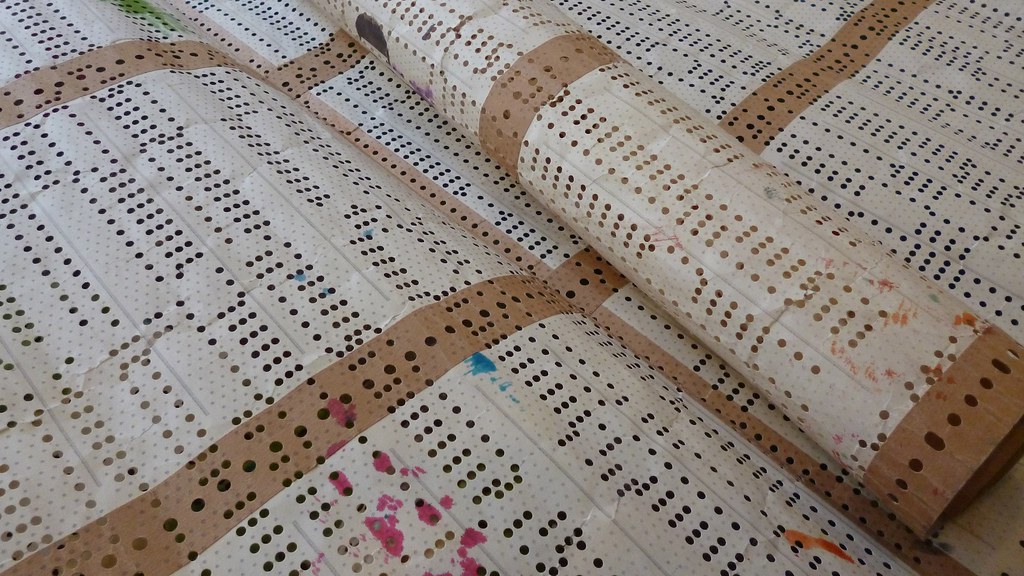
 In 1804 Joseph-Marie Jacquard invented a loom which, by using a system of punched cards, enabled a single worker to do the work of six. A statue of the man can be seen at Place de la Croix-Rousse where we began our tour.
In 1804 Joseph-Marie Jacquard invented a loom which, by using a system of punched cards, enabled a single worker to do the work of six. A statue of the man can be seen at Place de la Croix-Rousse where we began our tour. 
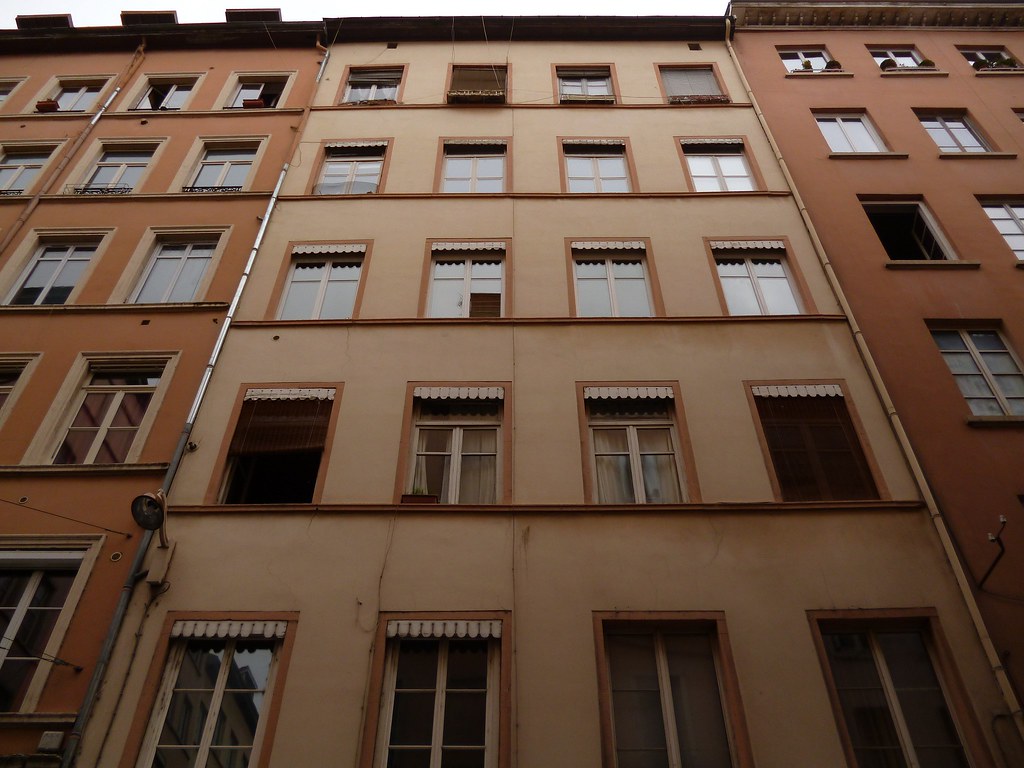
 The Croix-Rousse district is filled with characteristic house-workshops—the upper floors contained the looms on which the workers wove the silk provided by the manufacturer. In 1875 a revolution occurred in the silk industry; the introduction of mechanical looms and the change of fashion away from figured fabrics and brocades quickly reduced the silk-workers to abject poverty. Only a few looms continued to exist in Lyon, capable of producing special fabrics at exorbitant prices. Ordinary silks were made by workers in rural areas where labor was less expensive. Today natural silk imported from Italy or Japan now represents only a minute proportion of the quantities of fabric processed here.
The Croix-Rousse district is filled with characteristic house-workshops—the upper floors contained the looms on which the workers wove the silk provided by the manufacturer. In 1875 a revolution occurred in the silk industry; the introduction of mechanical looms and the change of fashion away from figured fabrics and brocades quickly reduced the silk-workers to abject poverty. Only a few looms continued to exist in Lyon, capable of producing special fabrics at exorbitant prices. Ordinary silks were made by workers in rural areas where labor was less expensive. Today natural silk imported from Italy or Japan now represents only a minute proportion of the quantities of fabric processed here. 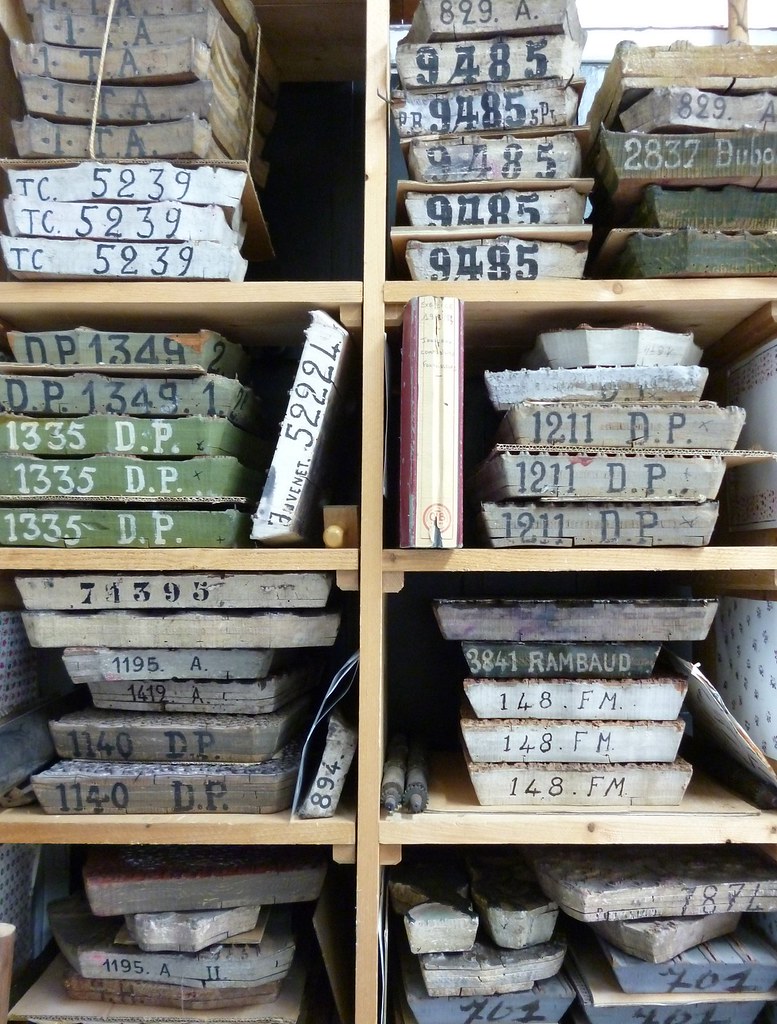
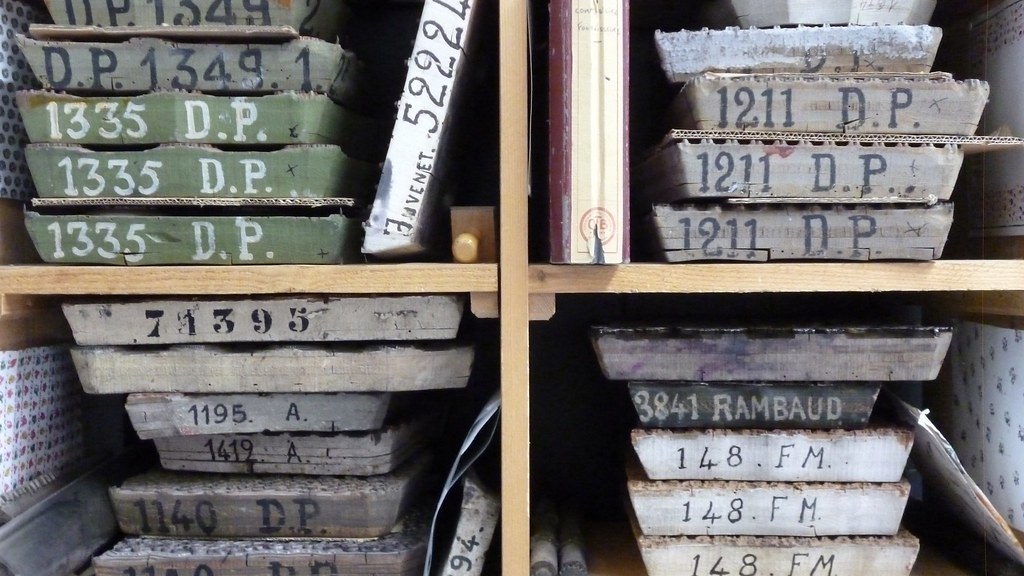
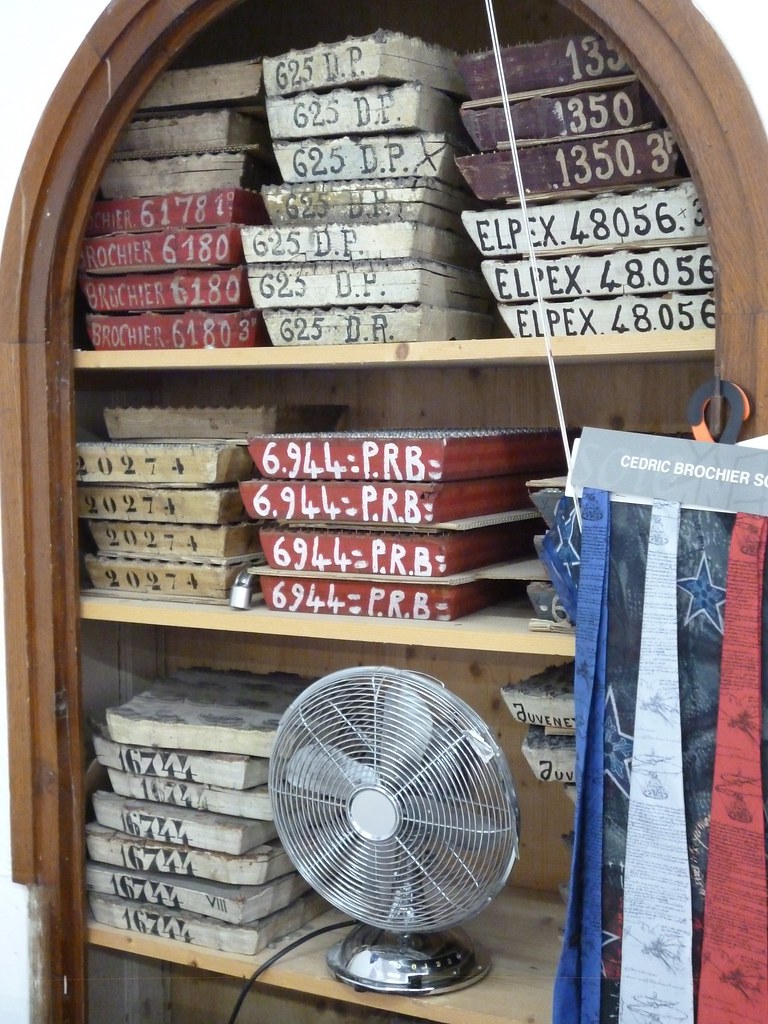 It is subject to extremely meticulous care and attention in the silk workers center, Maison des Canuts as well as L'Atelier de Soierie. It was at L’Atelier de Soierie Vivante that we got a first hand account of the silk screening process as well as the manufacture of figured or watered silks.
It is subject to extremely meticulous care and attention in the silk workers center, Maison des Canuts as well as L'Atelier de Soierie. It was at L’Atelier de Soierie Vivante that we got a first hand account of the silk screening process as well as the manufacture of figured or watered silks. 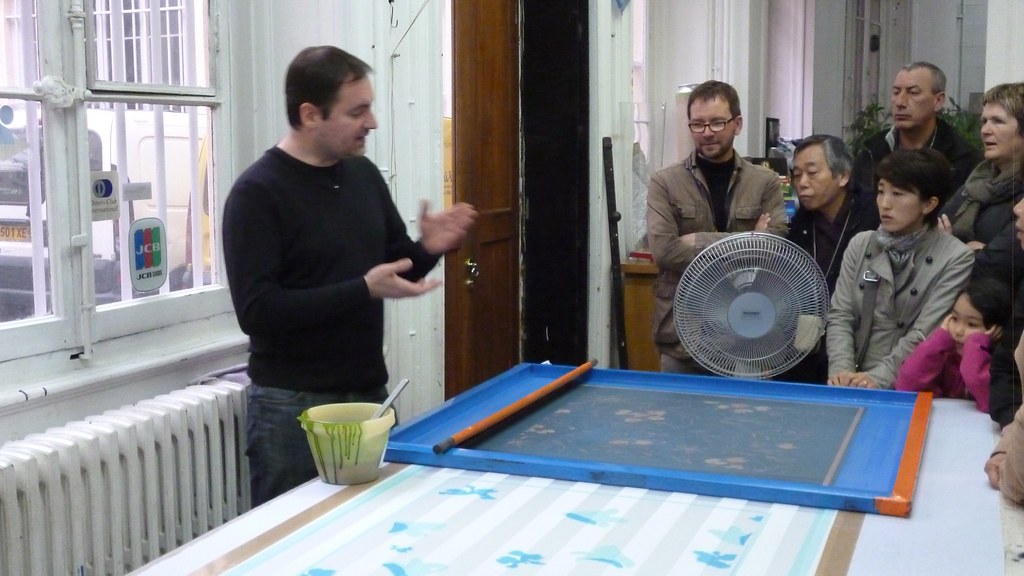
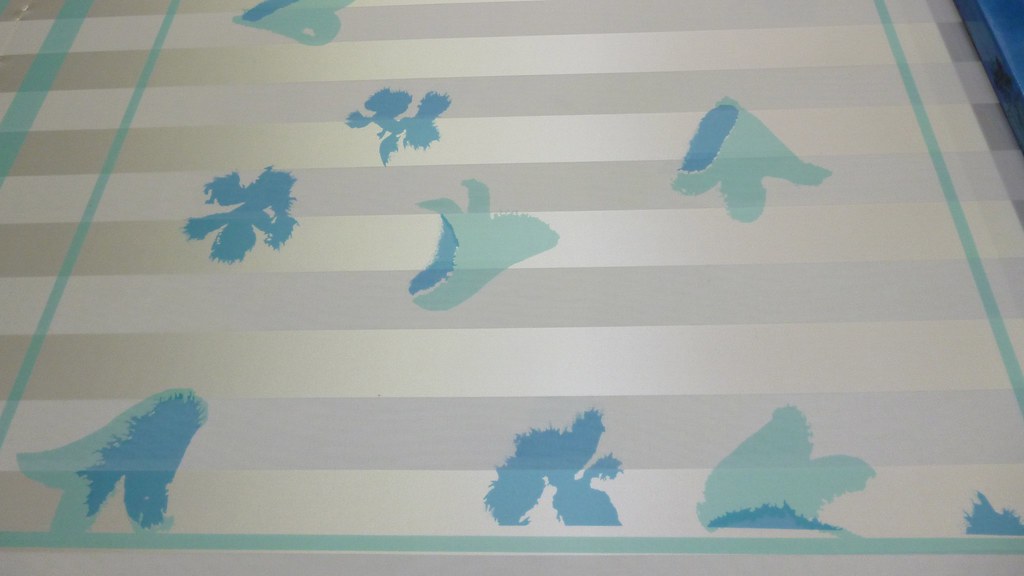

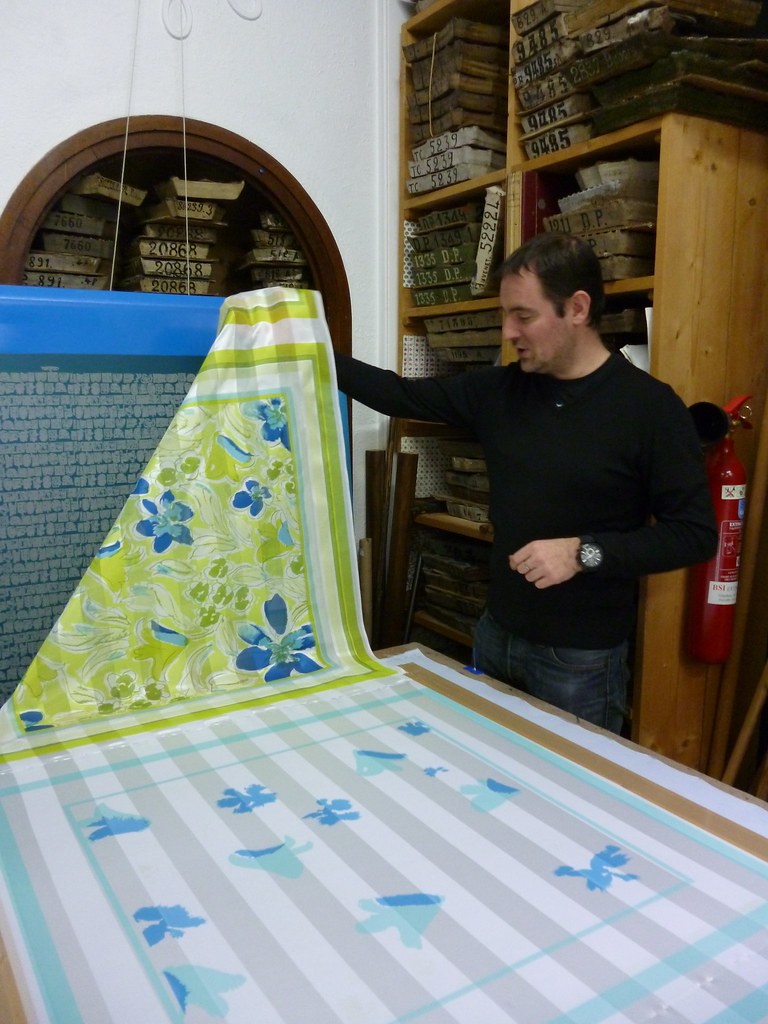

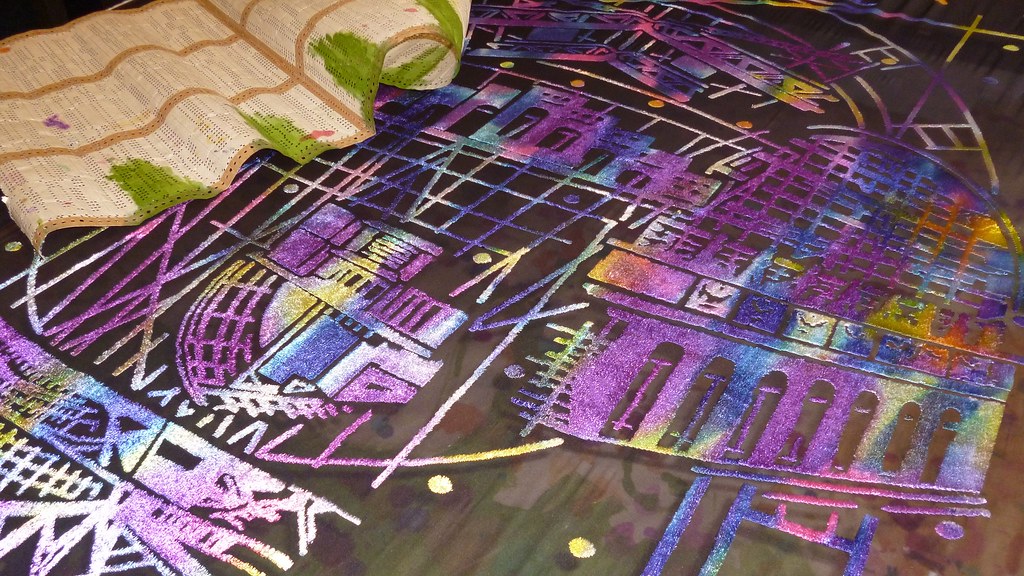 This association was founded in 1993 to protect and promote the heritage of the Croix-Rousse silk working industry. The district still has all the character and flavor of a small village community. The invention of new looms by Jacquard, led the “canuts” or silk workers to abandon the low cottages in the St-Jean district and move to larger ausere buildings with wide windows that let in the light. In the 19th century the streets echoed with the rattle of the hand looms operated by some 30,000 silk workers.
This association was founded in 1993 to protect and promote the heritage of the Croix-Rousse silk working industry. The district still has all the character and flavor of a small village community. The invention of new looms by Jacquard, led the “canuts” or silk workers to abandon the low cottages in the St-Jean district and move to larger ausere buildings with wide windows that let in the light. In the 19th century the streets echoed with the rattle of the hand looms operated by some 30,000 silk workers. 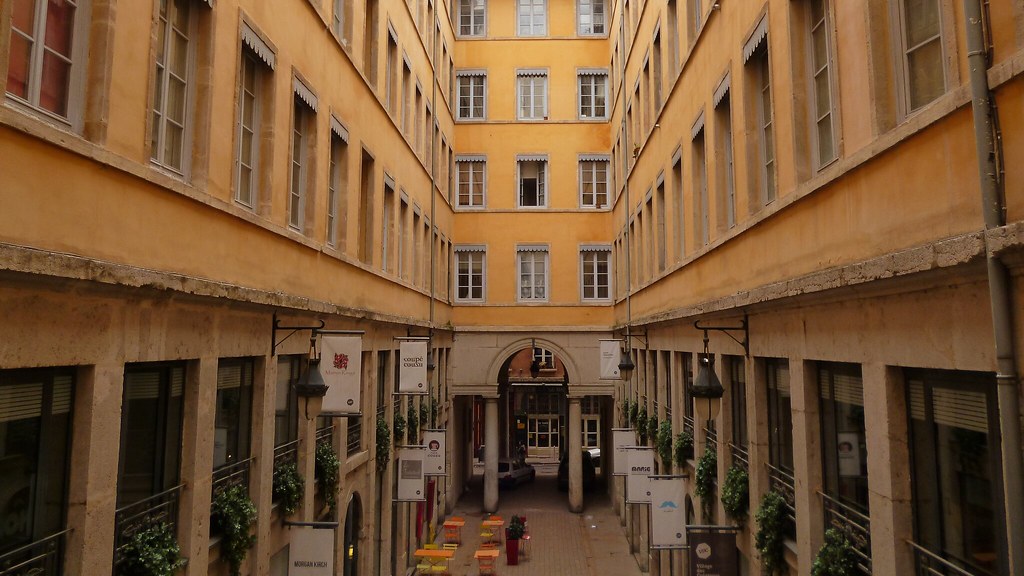 The traboules in La Croix-Rousse follow the lie of the land and include a large number of steps. They were used to move bolts of silk about the district without any risk of damage from inclement weather. In 1831 and again in 1834, they were the scene of bloody uprisings when the silk workers waved black flags symbolising poverty and bearing the famous motto: “Life through work or death through conflict.”
The traboules in La Croix-Rousse follow the lie of the land and include a large number of steps. They were used to move bolts of silk about the district without any risk of damage from inclement weather. In 1831 and again in 1834, they were the scene of bloody uprisings when the silk workers waved black flags symbolising poverty and bearing the famous motto: “Life through work or death through conflict.” 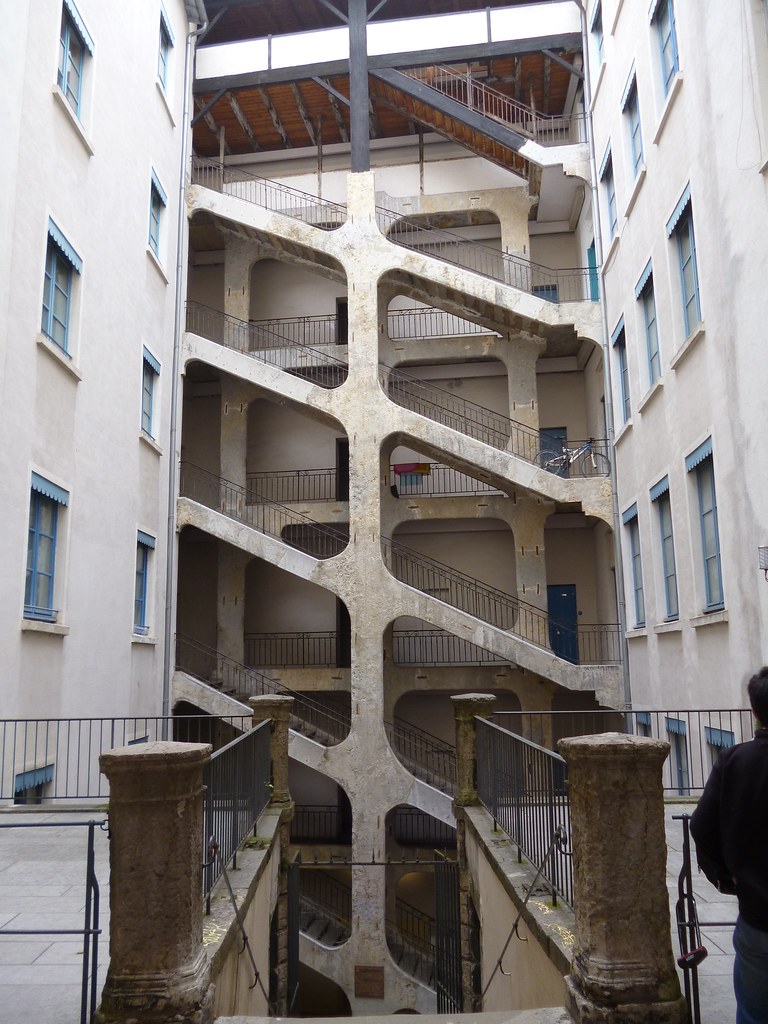 One famous traboule is the found at the Cour des Voraces with its imposing flight of steps. In the 19th century it was the meeting place of a silk workers’ guild known as the Les Voraces (“The Ravenous”). Another very important building in Lyon is the Condition Publique des Soies (Public Silk Packing Works).
One famous traboule is the found at the Cour des Voraces with its imposing flight of steps. In the 19th century it was the meeting place of a silk workers’ guild known as the Les Voraces (“The Ravenous”). Another very important building in Lyon is the Condition Publique des Soies (Public Silk Packing Works). 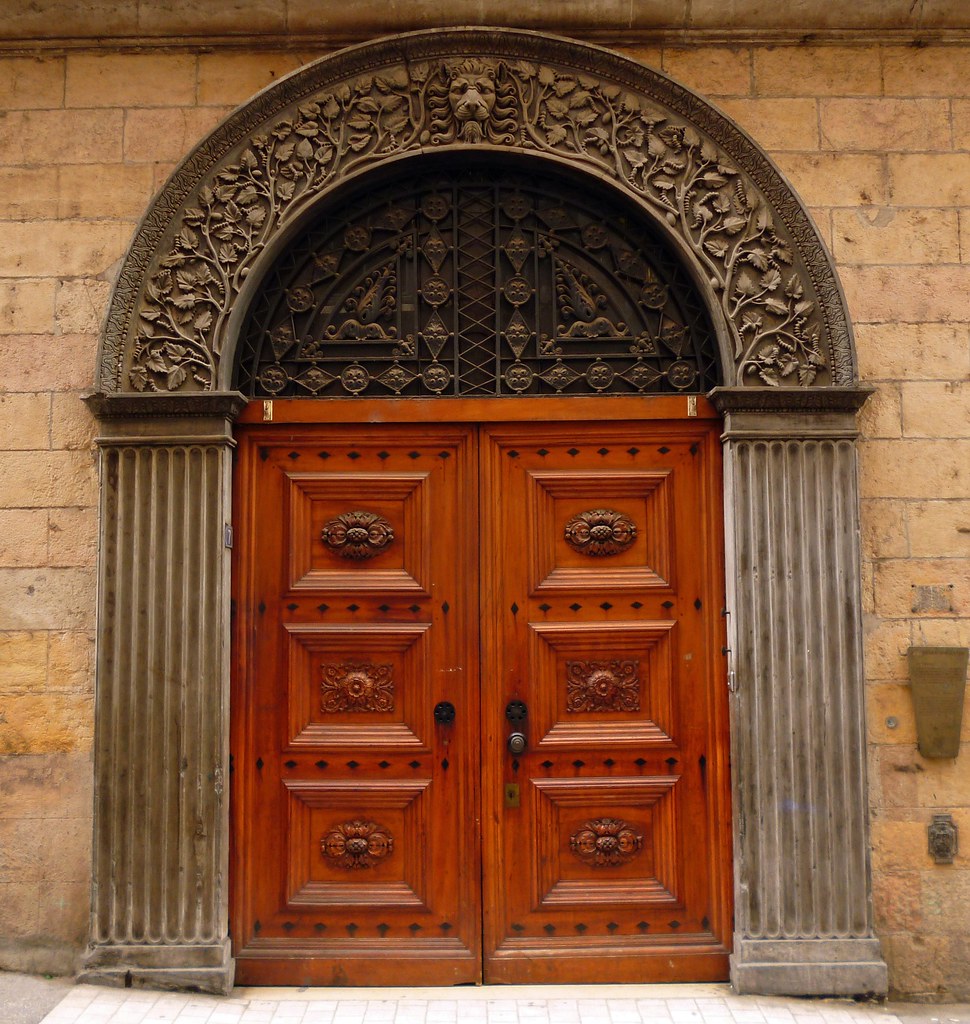 It has a porch in which the upper arch is decorated with a majestic lion’s head and mulberry leaves (the food of the silkworm). The building now houses a cultural and social center but it was on these premises during the 19th century that the hygrometric packing of silk cloth was monitored since, due to the fact that silk can absorb up to 15% of its weight in water, checks had to be made to ensure that the weight of the fabric actually complied with official norms.
It has a porch in which the upper arch is decorated with a majestic lion’s head and mulberry leaves (the food of the silkworm). The building now houses a cultural and social center but it was on these premises during the 19th century that the hygrometric packing of silk cloth was monitored since, due to the fact that silk can absorb up to 15% of its weight in water, checks had to be made to ensure that the weight of the fabric actually complied with official norms.  Along the wall of its façade is a memorial to Louis Pasteur who in the 1860s was asked to help to investigate a serious disease that was ruining the silk industry in southern France. He isolated the bacteria causing the sickness and then taught the silk farmers how to cultivate their silk worms under healthy conditions and keep them disease free. Sadly by this time, the silk industry in France was in tatters and never fully recovered.
Along the wall of its façade is a memorial to Louis Pasteur who in the 1860s was asked to help to investigate a serious disease that was ruining the silk industry in southern France. He isolated the bacteria causing the sickness and then taught the silk farmers how to cultivate their silk worms under healthy conditions and keep them disease free. Sadly by this time, the silk industry in France was in tatters and never fully recovered. 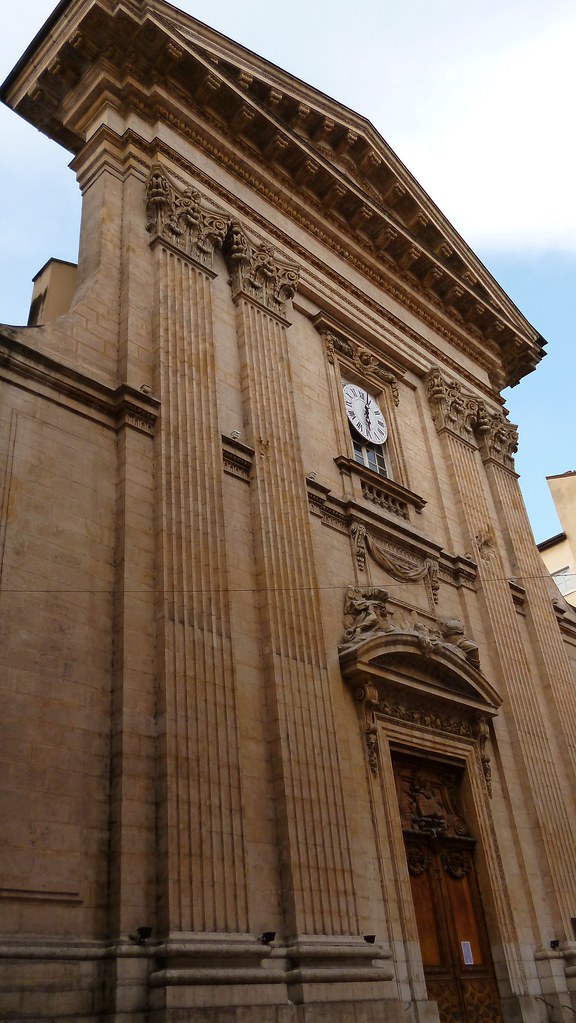 Nearby the Silk Packing Works is the 17th and 18th century church of St-Polycarpe. From here there is a passage that leads up a flight of steps to Place Chardonnet, on which stands a monument erected in memory of Count Hilaire de Chardonnet (1843 – 1924), the inventor of artificial silk.
Nearby the Silk Packing Works is the 17th and 18th century church of St-Polycarpe. From here there is a passage that leads up a flight of steps to Place Chardonnet, on which stands a monument erected in memory of Count Hilaire de Chardonnet (1843 – 1924), the inventor of artificial silk.
Part of my English-guided tour of Old Lyon included stops at the Primatiale Saint-Jean, Place Saint-Paul, Musée des beaux-arts and l'église Saint-Nizier.  In the center of the square in front of Saint-Jean Cathedral is a fountain with four basins topped by a small open-work pavilion containing a sculpture of Christ’s baptism.
In the center of the square in front of Saint-Jean Cathedral is a fountain with four basins topped by a small open-work pavilion containing a sculpture of Christ’s baptism. 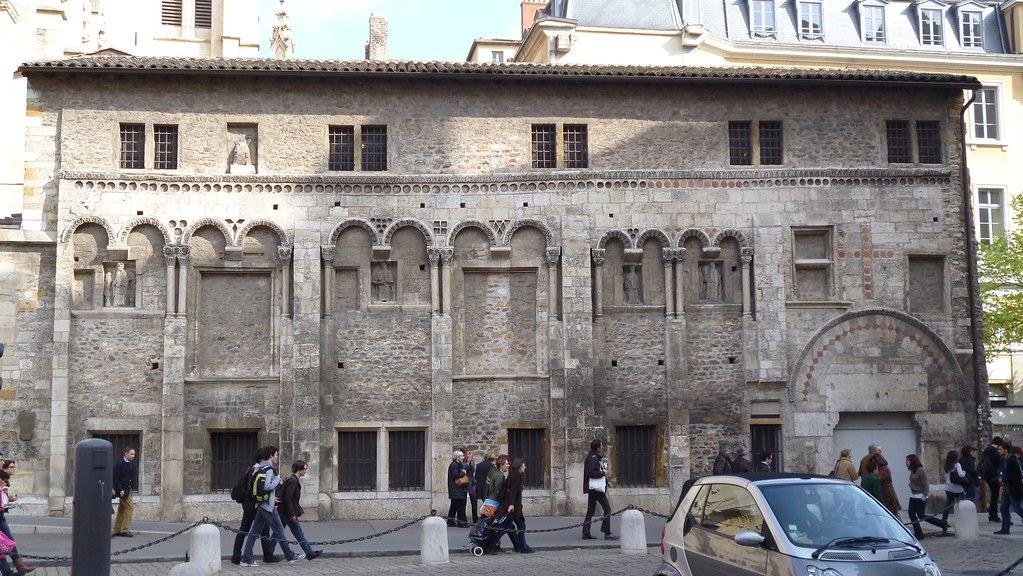 To the east of the square is the Cathedral of Saint-Jean and the choir school also known as the Menécanterie. It is directly to the right of the west front and is the oldest part of the existing building dating from about the 12th century. The front of the building is decorated with a blind story topped by red-brick encrustations, colonnettes and niches containing statues of human figures. Despite altarations, it has retained its Romanesque appearance.
To the east of the square is the Cathedral of Saint-Jean and the choir school also known as the Menécanterie. It is directly to the right of the west front and is the oldest part of the existing building dating from about the 12th century. The front of the building is decorated with a blind story topped by red-brick encrustations, colonnettes and niches containing statues of human figures. Despite altarations, it has retained its Romanesque appearance.  As for the Cathedral of Saint-Jean, it is a Gothic building erected to complete a Romanesque apse. On the exterior the most notable features are the four towers, two on the west front and two over the arms of the transept.
As for the Cathedral of Saint-Jean, it is a Gothic building erected to complete a Romanesque apse. On the exterior the most notable features are the four towers, two on the west front and two over the arms of the transept. 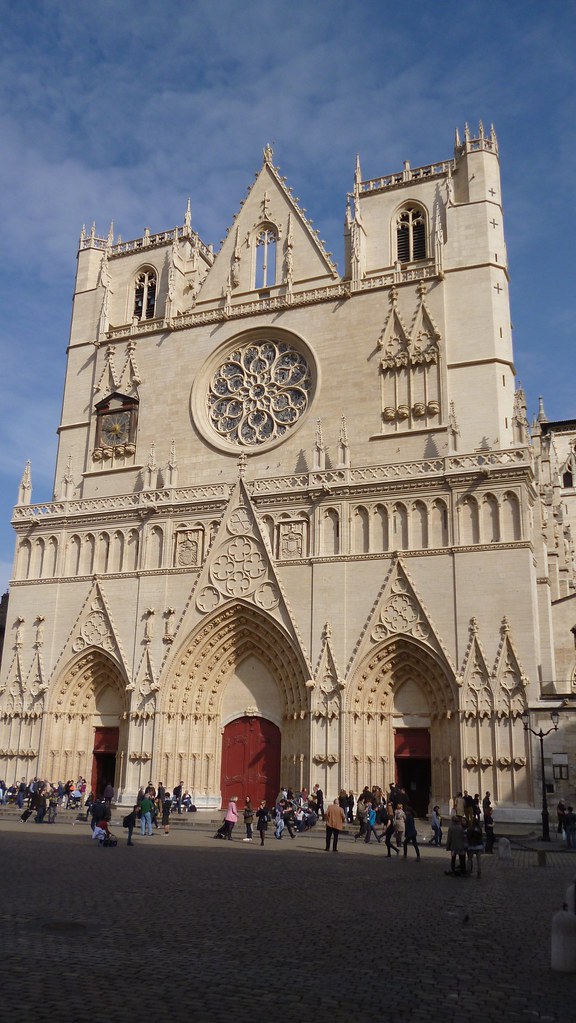

 The façade is partly made up of blocks from ancient Roman monuments. It is also designed with over 300 medallions which tell different episodes from the Old and New Testaments.
The façade is partly made up of blocks from ancient Roman monuments. It is also designed with over 300 medallions which tell different episodes from the Old and New Testaments. 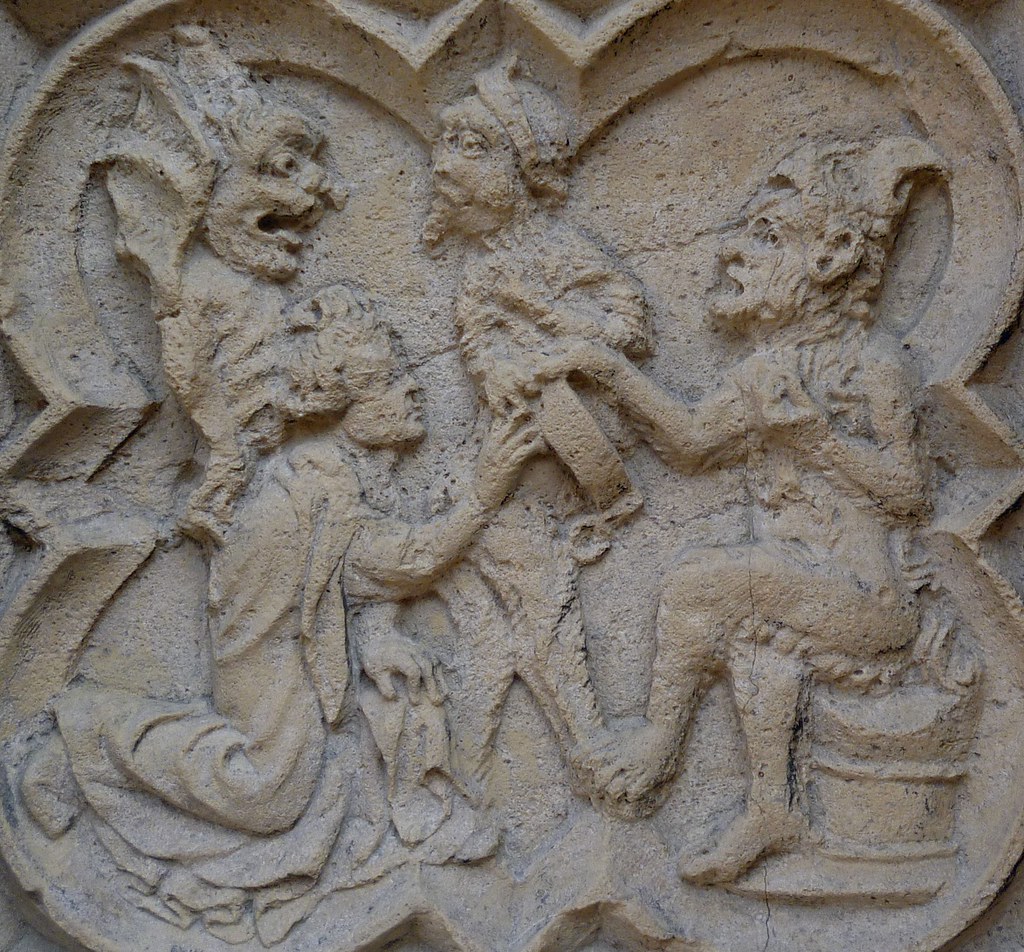
 In the 16th century, the Baron of Adrets, a Calvinist, destroyed all the statues of the saints in the niches of the façade and beheaded all of the angels of the three portals.
In the 16th century, the Baron of Adrets, a Calvinist, destroyed all the statues of the saints in the niches of the façade and beheaded all of the angels of the three portals. 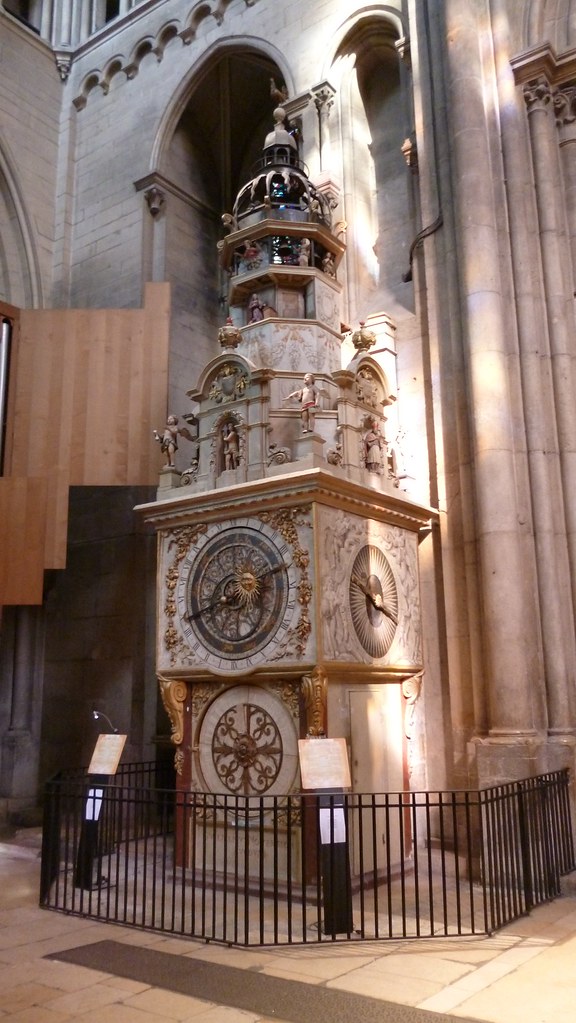 Inside, the church is quite famous for its astronomical clock which shows the date, the positions of the Moon, the Sun and Earth and the rising of stars above Lyon.
Inside, the church is quite famous for its astronomical clock which shows the date, the positions of the Moon, the Sun and Earth and the rising of stars above Lyon. 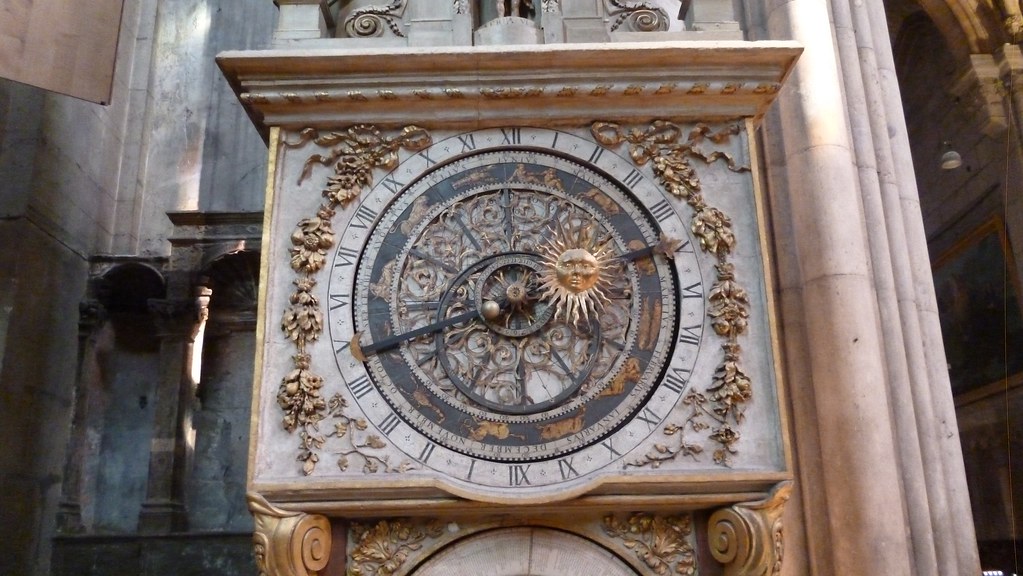
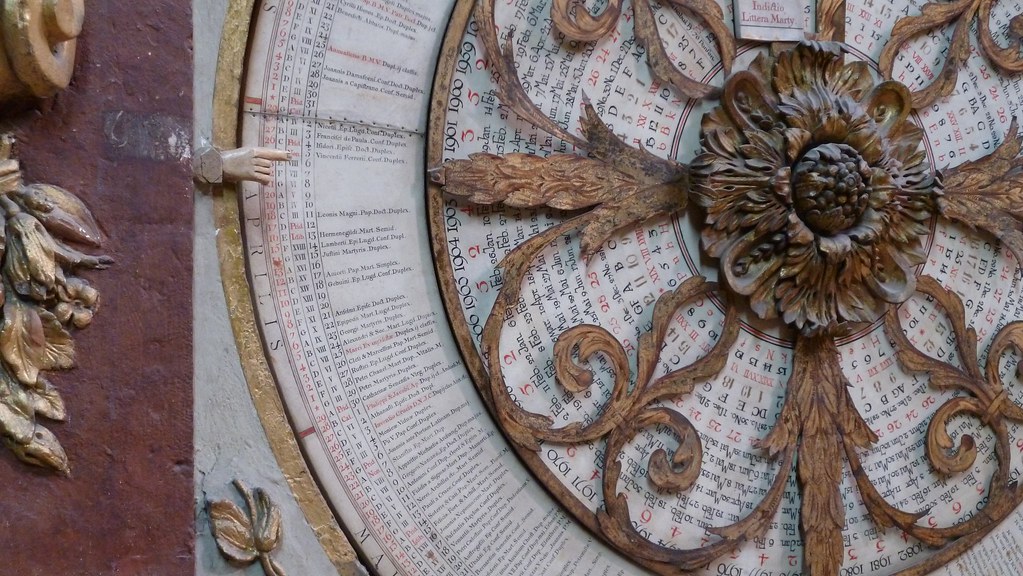 Originally from the 14th century, it was remodeled several times. Above the clock, a series of controllers are set in motion several times a day. There are animals and a scene depicting the Annunciation. In 1245 and 1274 the cathedral was the setting for the two Councils of Lyon. In the following century it was chosen for the consecration of Pope John XXII. In 1600 Henri IV married Marie de’ Medici here. More recently, in 1943, the Sixth Grand Pardon was celebrated here. The event is celebrated approximately once every century, when Corpus Christi coincides, on June 24th, with the feast day of Saint John the Baptist, to whom the church is dedicated.
Originally from the 14th century, it was remodeled several times. Above the clock, a series of controllers are set in motion several times a day. There are animals and a scene depicting the Annunciation. In 1245 and 1274 the cathedral was the setting for the two Councils of Lyon. In the following century it was chosen for the consecration of Pope John XXII. In 1600 Henri IV married Marie de’ Medici here. More recently, in 1943, the Sixth Grand Pardon was celebrated here. The event is celebrated approximately once every century, when Corpus Christi coincides, on June 24th, with the feast day of Saint John the Baptist, to whom the church is dedicated. 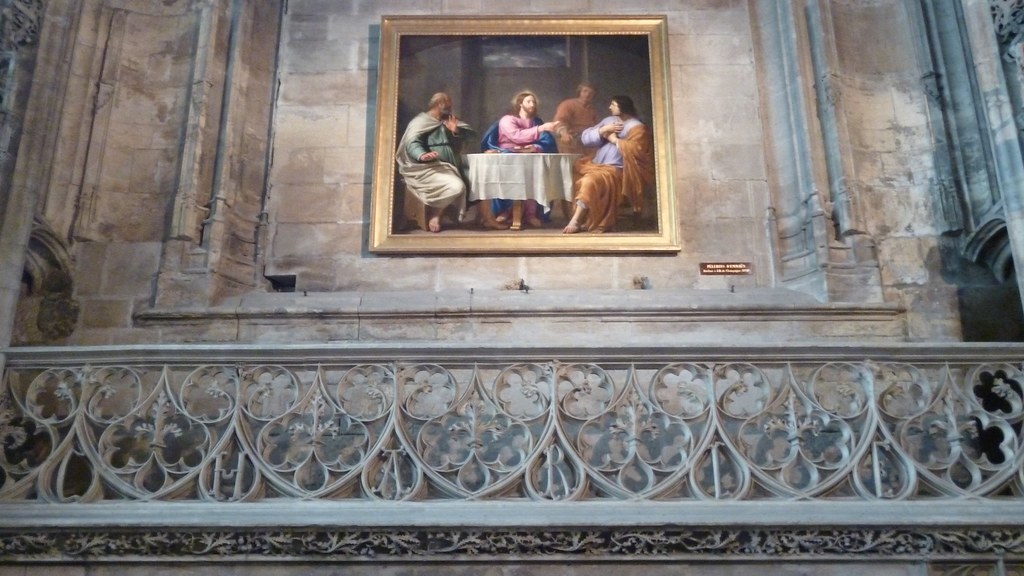
 The chapel of the Bourbons (the name of the archbishop who ordered its construction), late Gothic, was built between the late 15th and early 16th century.
The chapel of the Bourbons (the name of the archbishop who ordered its construction), late Gothic, was built between the late 15th and early 16th century. 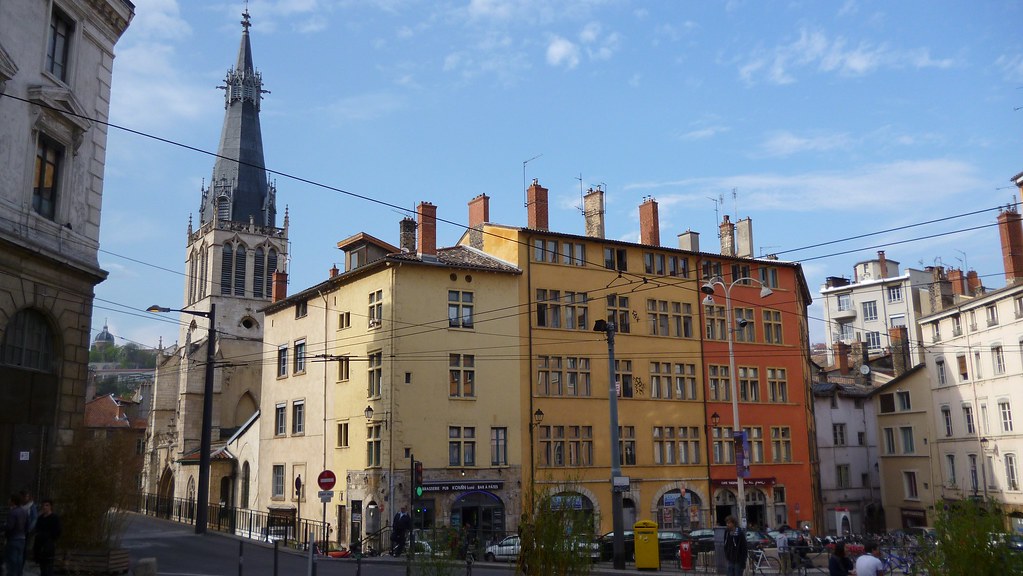 Nearby, next to the Place St-Paul is one of the oldest churches in Lyon, the Church of Saint-Paul.
Nearby, next to the Place St-Paul is one of the oldest churches in Lyon, the Church of Saint-Paul.  The octagonal shaped lantern tower has been classified as a historical monument since 1920 and was recently renovated in 2002. Sadly, it was not open to the public when I went to visit.
The octagonal shaped lantern tower has been classified as a historical monument since 1920 and was recently renovated in 2002. Sadly, it was not open to the public when I went to visit. 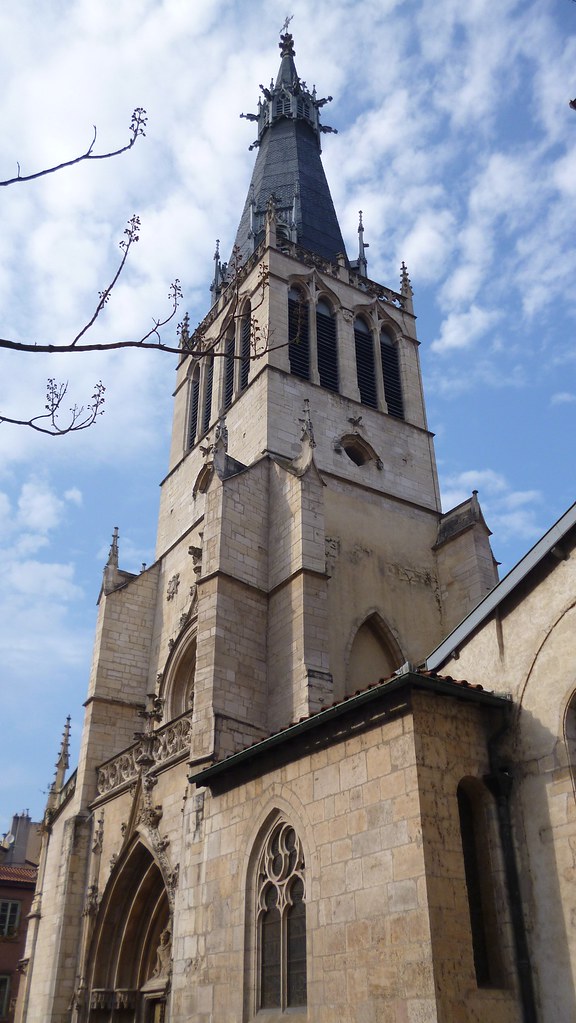
 Above the door is the tympanum depicting Paul’s conversion on the road to Damascus.
Above the door is the tympanum depicting Paul’s conversion on the road to Damascus. 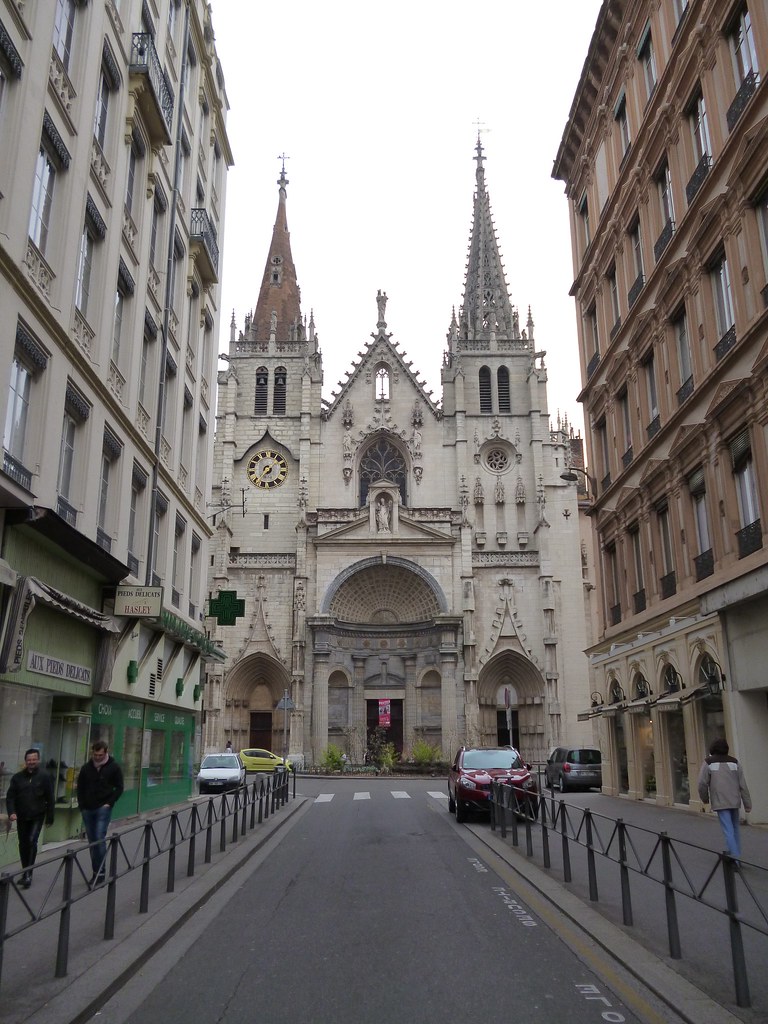 Tradition has it that the present Église St-Nizier, much of which dates from the 15th century, was built on the site of Lyon’s first church. On the outside, the nave is supported by double flying butresses which can be seen clearly from rue de la Fromagerie. The spires on the belltowers are one of the outstanding features of the Lyon urban landscape.
Tradition has it that the present Église St-Nizier, much of which dates from the 15th century, was built on the site of Lyon’s first church. On the outside, the nave is supported by double flying butresses which can be seen clearly from rue de la Fromagerie. The spires on the belltowers are one of the outstanding features of the Lyon urban landscape. 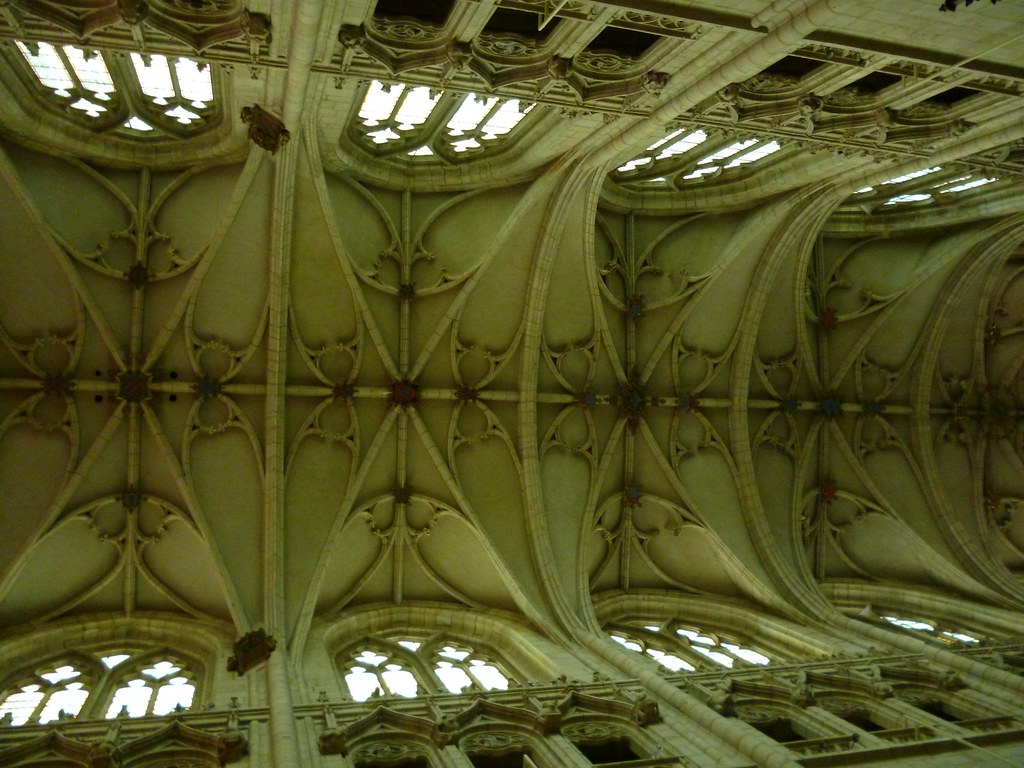
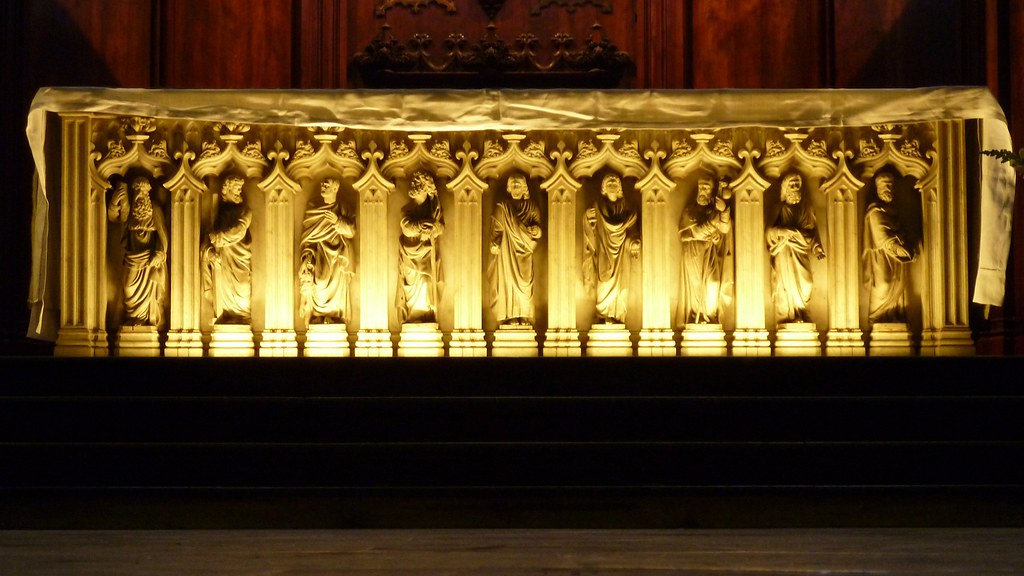 The interior is very dark and nearly impossible to take photos in. I managed to get these pictures of the nave vaulting and the altar.
The interior is very dark and nearly impossible to take photos in. I managed to get these pictures of the nave vaulting and the altar. 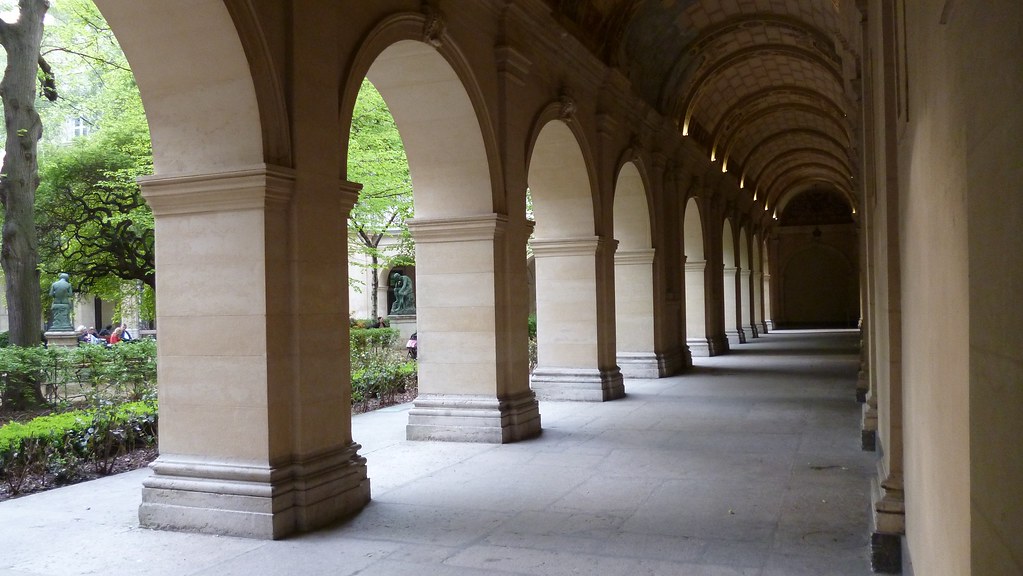
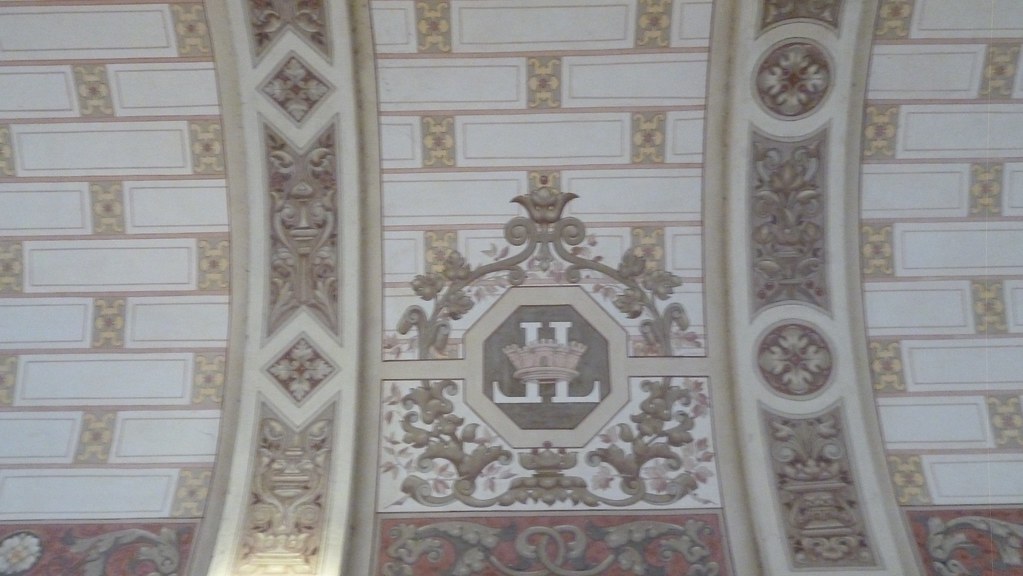 The Musée des beaux-arts ranks among the finest musuems in France. From the Place des Terreaux, enter the gardens in the former cloisters, where galleries are surmounted by terraces. Tall loggias crown the corner pavilions on the south side.
The Musée des beaux-arts ranks among the finest musuems in France. From the Place des Terreaux, enter the gardens in the former cloisters, where galleries are surmounted by terraces. Tall loggias crown the corner pavilions on the south side. 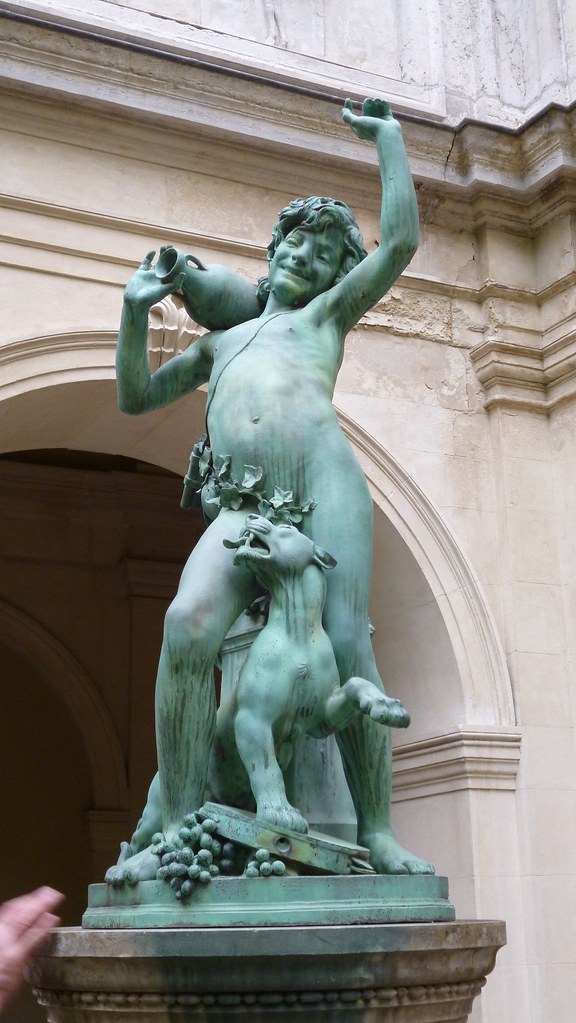
 The statues in the garden include The Shadow by Rodin and Carpeaux at Work by Bourdelle. The museum’s splendid collections, carefully displayed, have been further enriched by the donation of 35 famous Impressionist and modern paintings from Jacqueline Delubac’s private collection.
The statues in the garden include The Shadow by Rodin and Carpeaux at Work by Bourdelle. The museum’s splendid collections, carefully displayed, have been further enriched by the donation of 35 famous Impressionist and modern paintings from Jacqueline Delubac’s private collection. 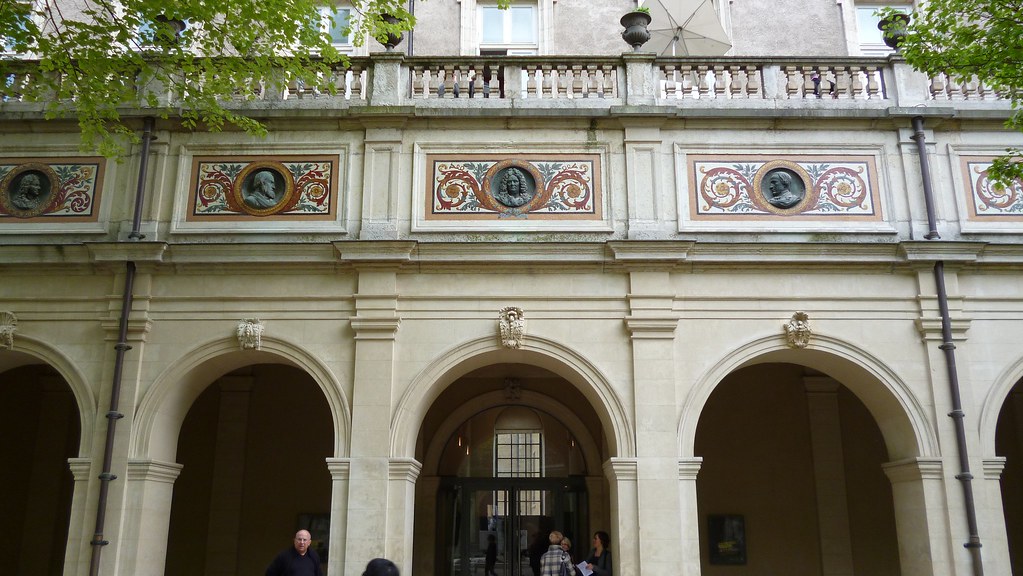 The Fine Arts Gallery presents an exceptional overview of art through the centuries, throughout the world. Its collections are organized into five separate departments: paintings, sculpture, antiquities, objets d’art and medals.
The Fine Arts Gallery presents an exceptional overview of art through the centuries, throughout the world. Its collections are organized into five separate departments: paintings, sculpture, antiquities, objets d’art and medals. 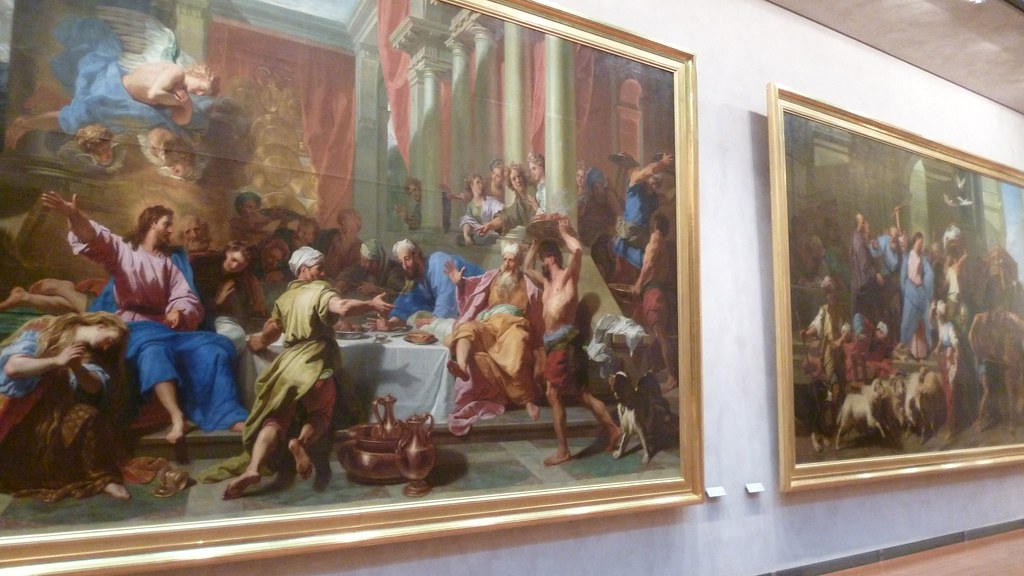
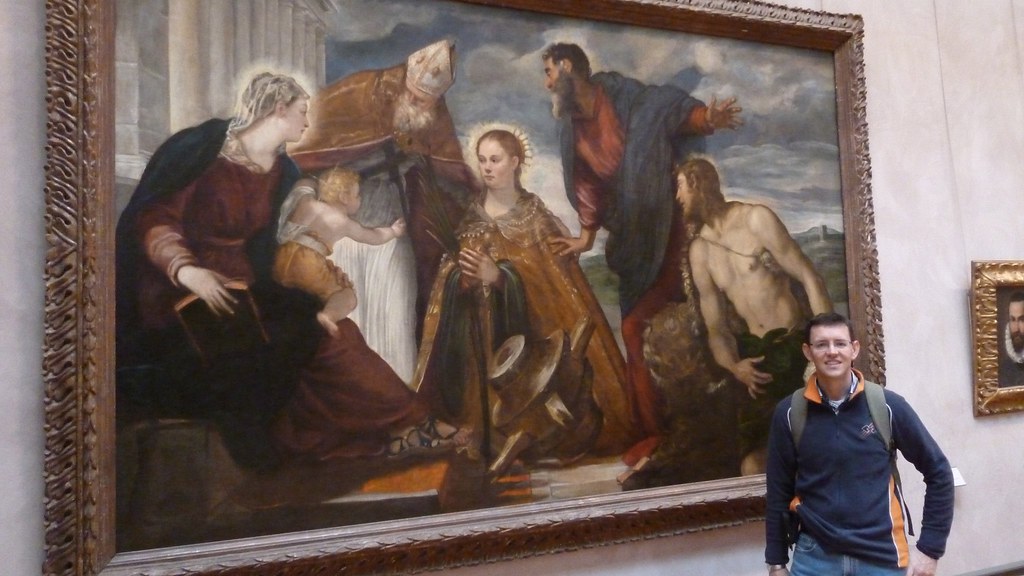
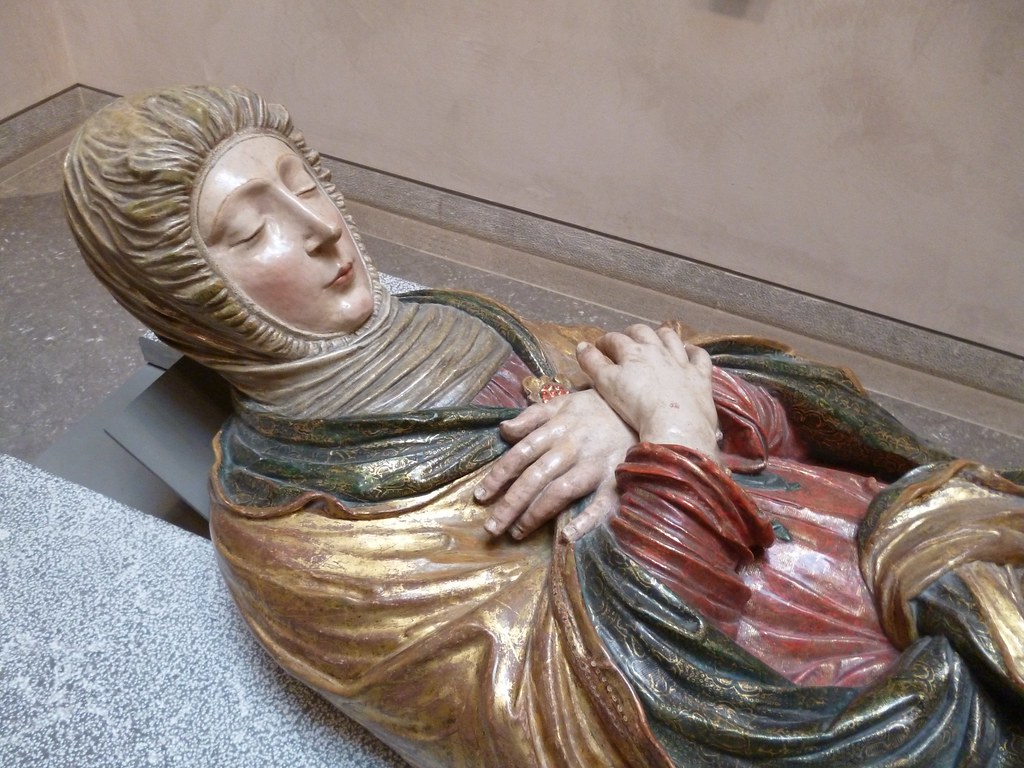 My two-day pass that I purchased from the Lyon tourist office allowed me to visit the museum as many times as I liked.
My two-day pass that I purchased from the Lyon tourist office allowed me to visit the museum as many times as I liked.
Since I was in Lyon for four days, I purchased a two-day pass that allowed me to use the public transportation system and access to all the museums at any time. It was so convenient not having to worry about ticket prices. Lyon, which is listed as a Town of Art and History, offers different tours conducted by guide-lecturers approved by the Ministry of Culture and Communication. 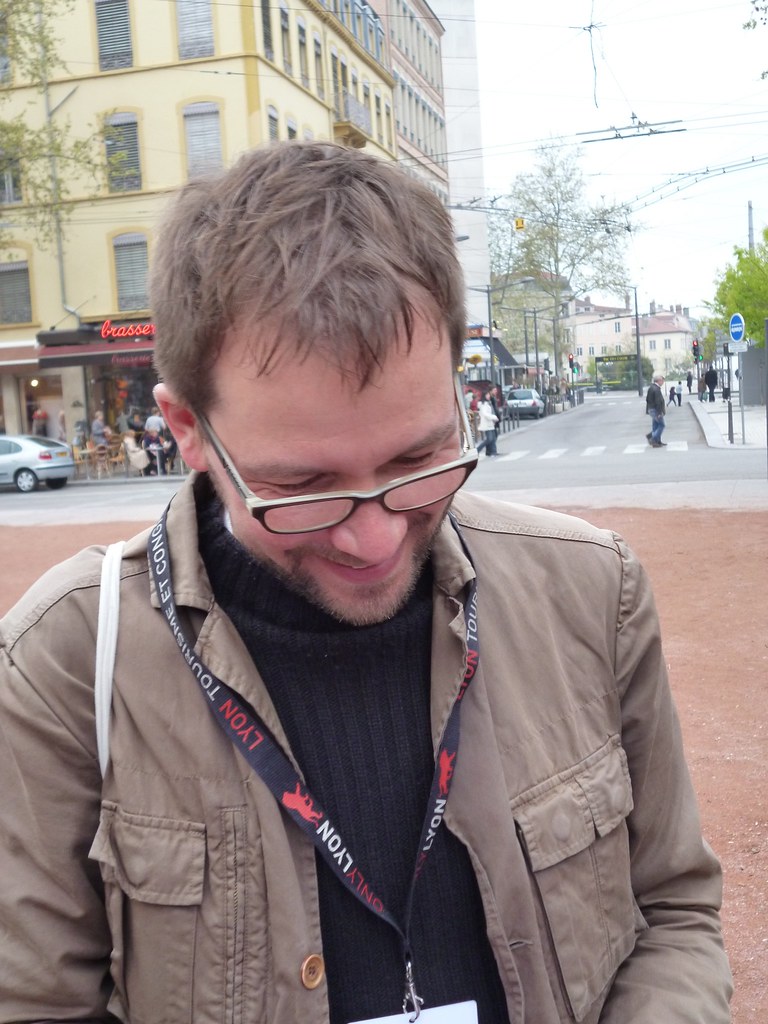 With that in mind, I purchased tickets for an English-speaking tour of Vieux Lyon with a very knowledgable guide named Jérôme. The first tour was on Saturday morning and took a group of about 25 of us throughout the old quarter.
With that in mind, I purchased tickets for an English-speaking tour of Vieux Lyon with a very knowledgable guide named Jérôme. The first tour was on Saturday morning and took a group of about 25 of us throughout the old quarter. 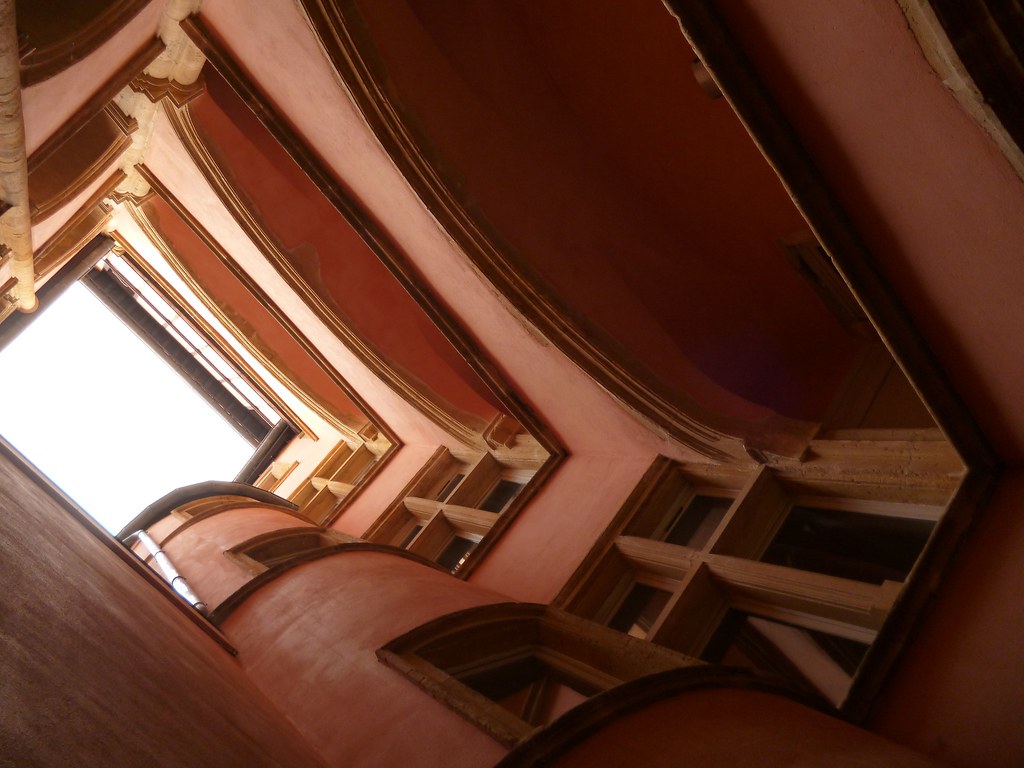

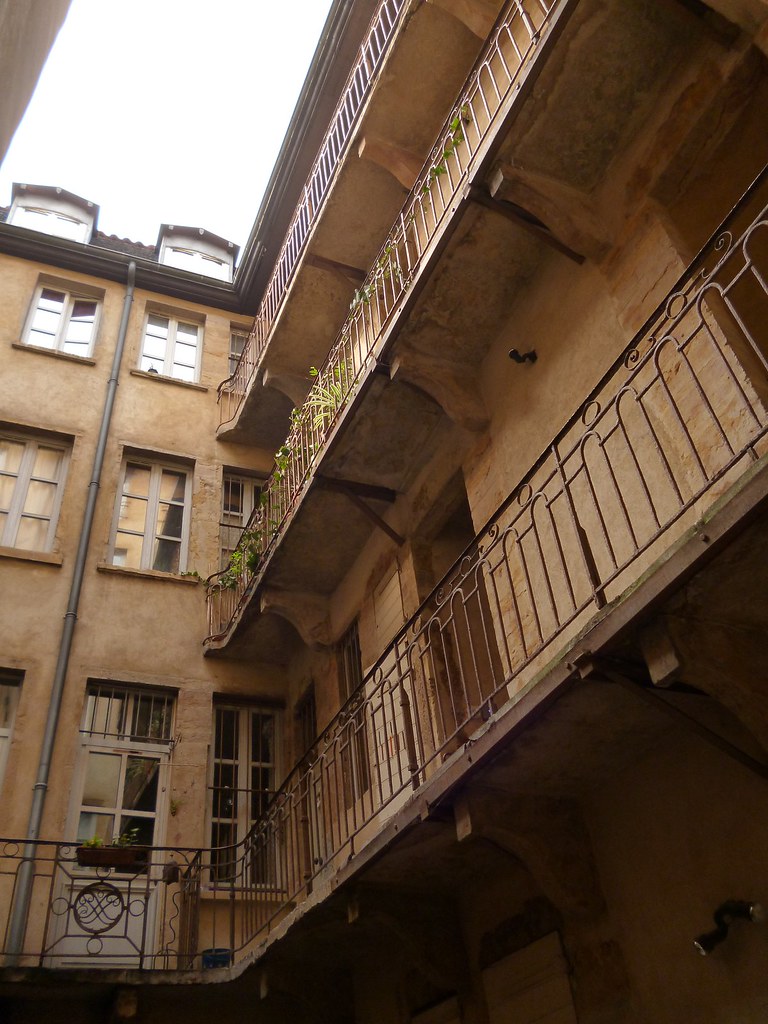 One of the main features of the old town is the numerous passages or alleyways known as traboules (from the Latin transambulare meaning “walking through”) especially between rue St-Jean, rue des Trois-Maries and quai Romain-Rolland, rue St-Georges and quai Fulchiron. Since there was not enough space to build an extensive network of streets, these passageways, all perpendicular to the Saône, were built to link the buildings together.
One of the main features of the old town is the numerous passages or alleyways known as traboules (from the Latin transambulare meaning “walking through”) especially between rue St-Jean, rue des Trois-Maries and quai Romain-Rolland, rue St-Georges and quai Fulchiron. Since there was not enough space to build an extensive network of streets, these passageways, all perpendicular to the Saône, were built to link the buildings together. 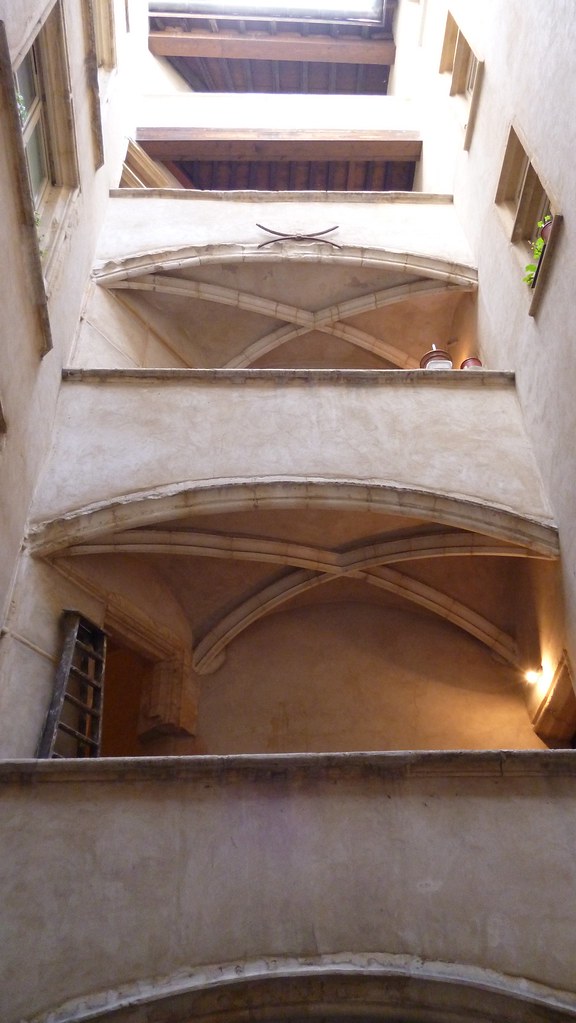 The first one I visited was the 16th century Hôtel de la Chamererie which was built for the cleric responsible for overseeing the cloisters of St-Jean Cathedral.
The first one I visited was the 16th century Hôtel de la Chamererie which was built for the cleric responsible for overseeing the cloisters of St-Jean Cathedral.  The arcading in the galleries of the Maison des Avocats is supported on massive columns and the outbuildings have a pink roughcast. Seen from the rue Bombarde, the house represents a fine example of 16th century Italian style arcitecture.
The arcading in the galleries of the Maison des Avocats is supported on massive columns and the outbuildings have a pink roughcast. Seen from the rue Bombarde, the house represents a fine example of 16th century Italian style arcitecture. 
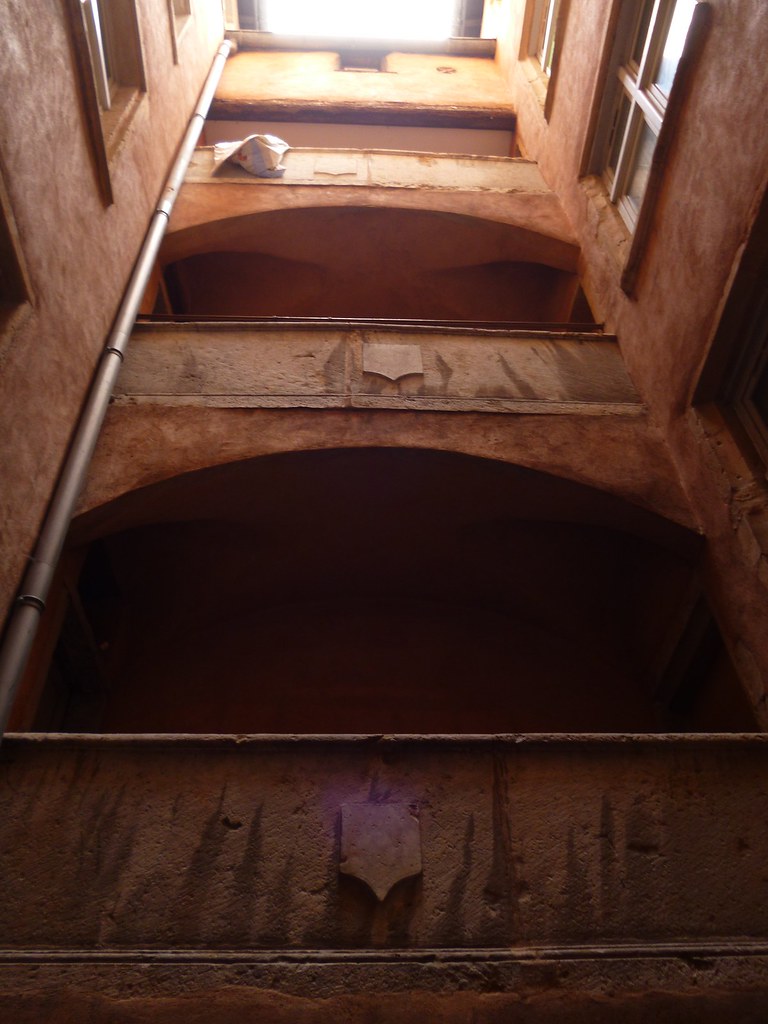 Further along the rue Juiverie is where during the late 14th century the Jews were expelled by wealthy Italian bankers who replaced many homes with luxurious mansions in the Renaissance style.
Further along the rue Juiverie is where during the late 14th century the Jews were expelled by wealthy Italian bankers who replaced many homes with luxurious mansions in the Renaissance style. 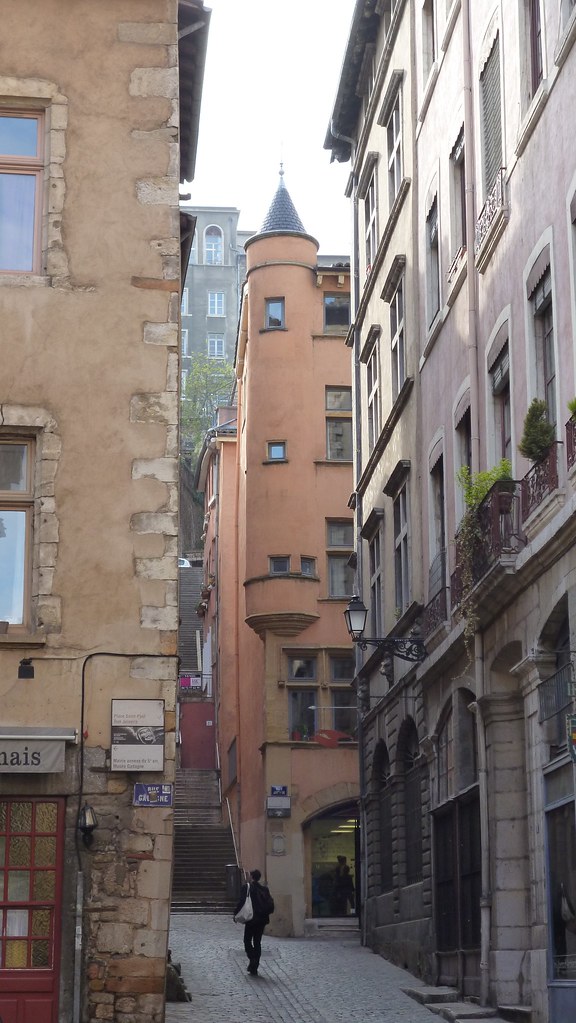 At number 22 is the Maison Baronat, which has a corbelled corner turret overlooking the Montée du Change. Another impressive sight are all of the montées, or rises, which consist of winding flights of steps or steeply sloping streets that climb the Fourvière hill, providing superb views down over the old town. This one below is called the Montée du Change and was nowhere nearly as steep as Montee du Garillan (224 steps) or Montee des Chazeaux (228 steps).
At number 22 is the Maison Baronat, which has a corbelled corner turret overlooking the Montée du Change. Another impressive sight are all of the montées, or rises, which consist of winding flights of steps or steeply sloping streets that climb the Fourvière hill, providing superb views down over the old town. This one below is called the Montée du Change and was nowhere nearly as steep as Montee du Garillan (224 steps) or Montee des Chazeaux (228 steps). 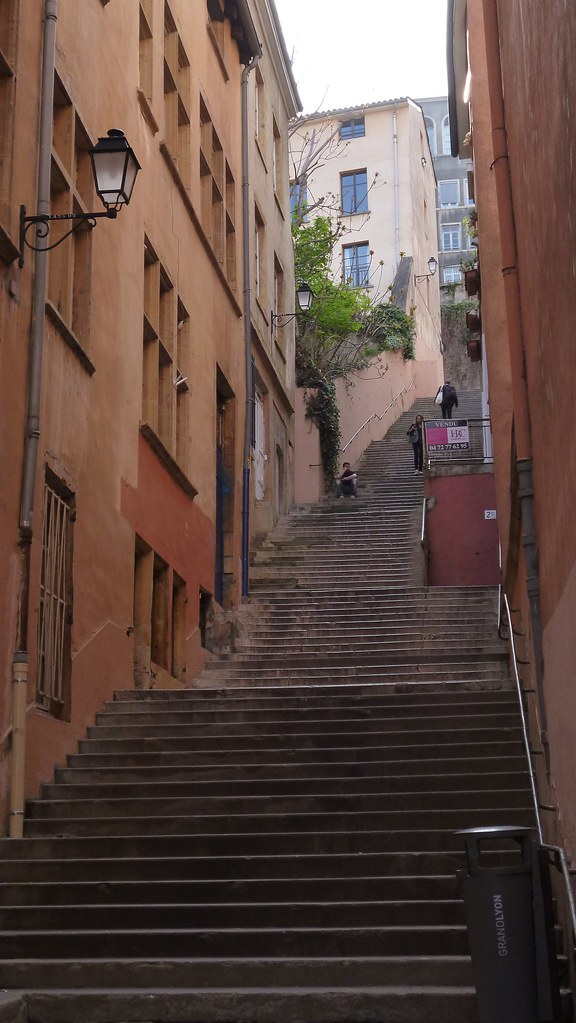
 The Hôtel Paterin, also known as the Henri IV house has a staircase in the courtyard with three tiers of arches, one above the other, supported by massive columns. It is quite impressive.
The Hôtel Paterin, also known as the Henri IV house has a staircase in the courtyard with three tiers of arches, one above the other, supported by massive columns. It is quite impressive. 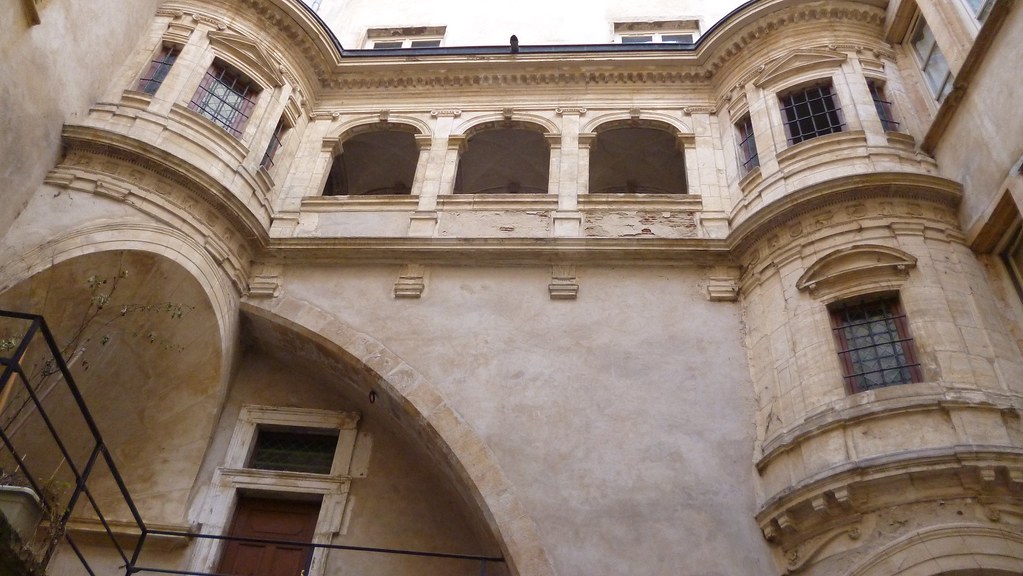 The courtyard in the Hôtel Bullioud contains the famous gallery designed by Philibert Delorme, a gem of French Renaissance arcitecture. It was built in 1536 on his return from Rome. Of the hundreds of traboules, it is impossible to write about each one.
The courtyard in the Hôtel Bullioud contains the famous gallery designed by Philibert Delorme, a gem of French Renaissance arcitecture. It was built in 1536 on his return from Rome. Of the hundreds of traboules, it is impossible to write about each one. 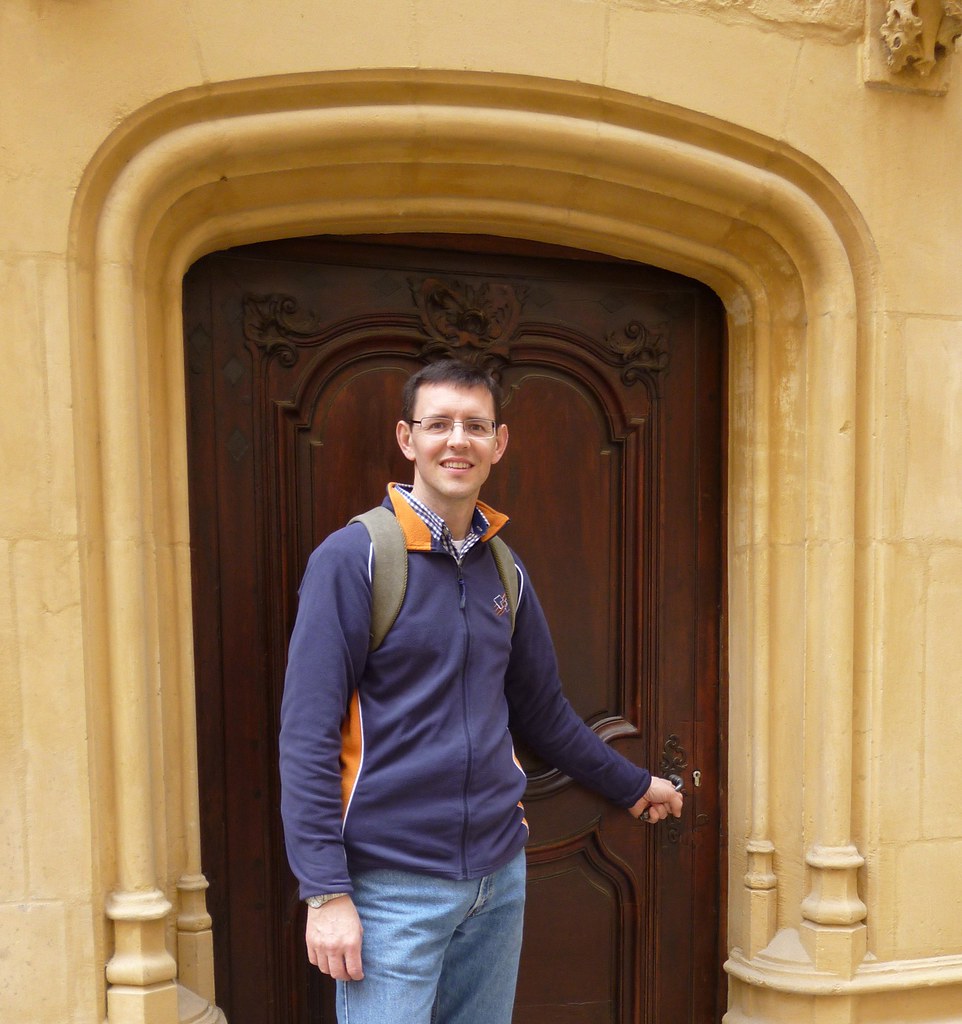

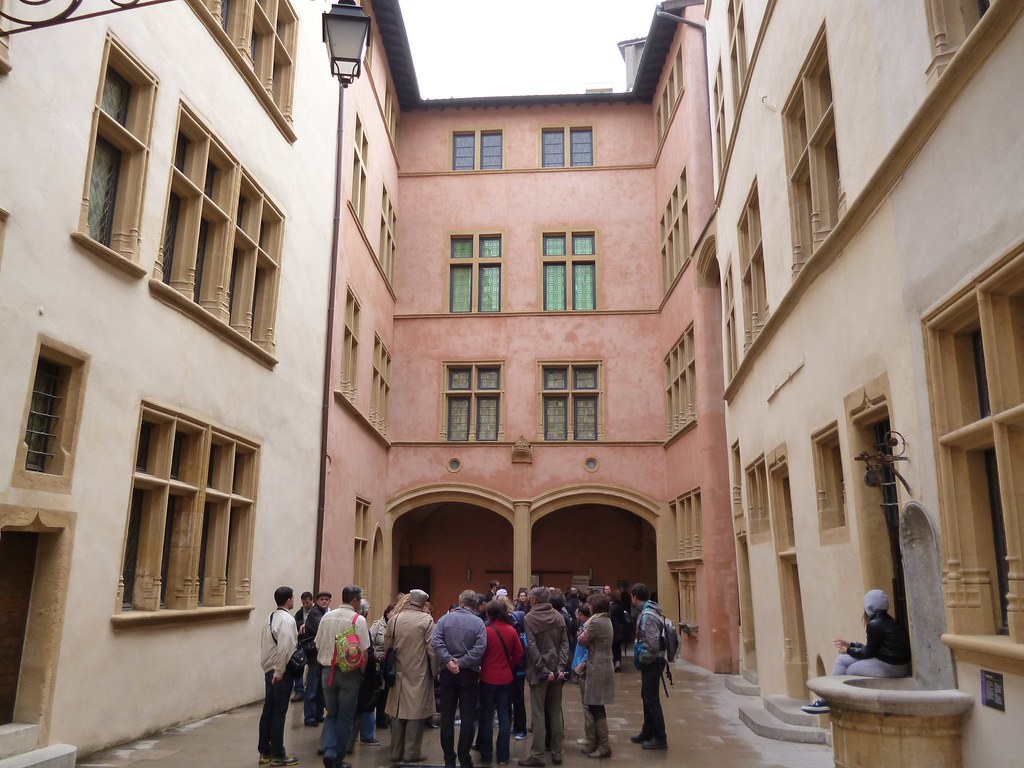
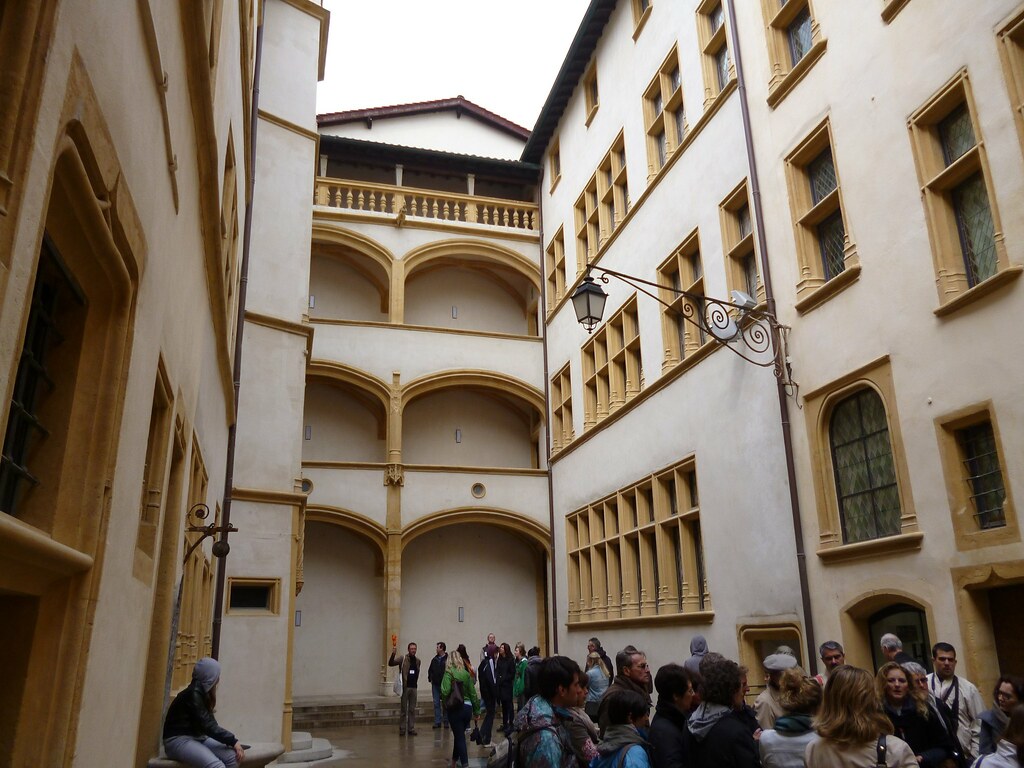 My favorite was located within the courtyard of the Musée Gadagne which is the largest Renaissance building in the old town.
My favorite was located within the courtyard of the Musée Gadagne which is the largest Renaissance building in the old town. 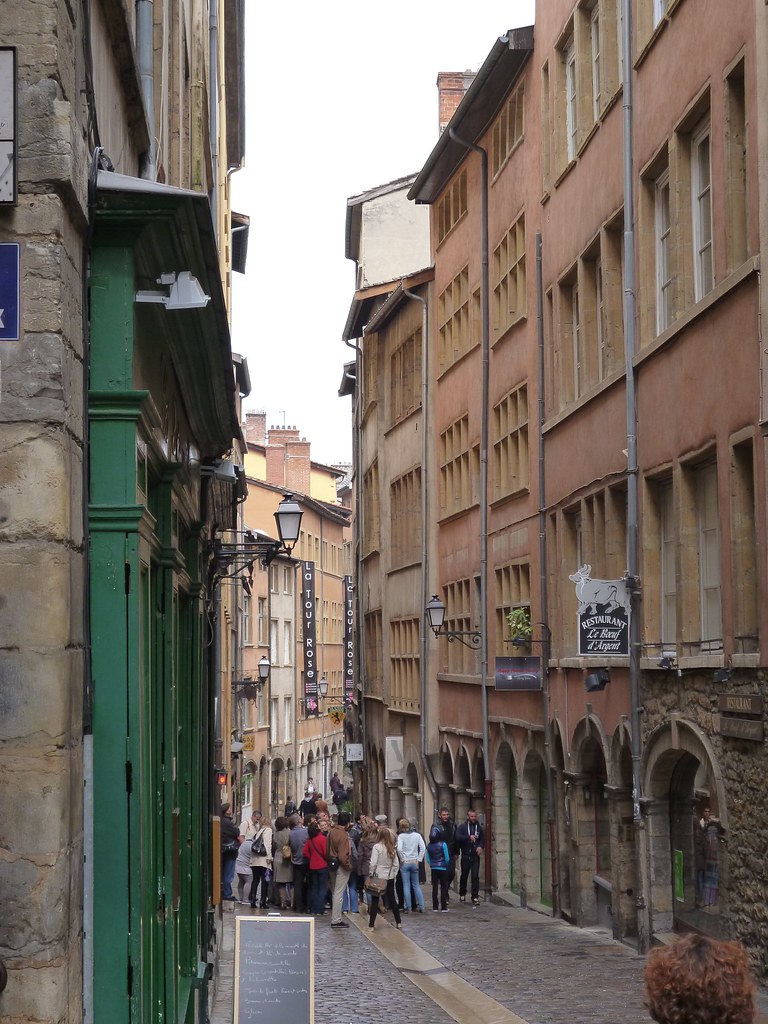
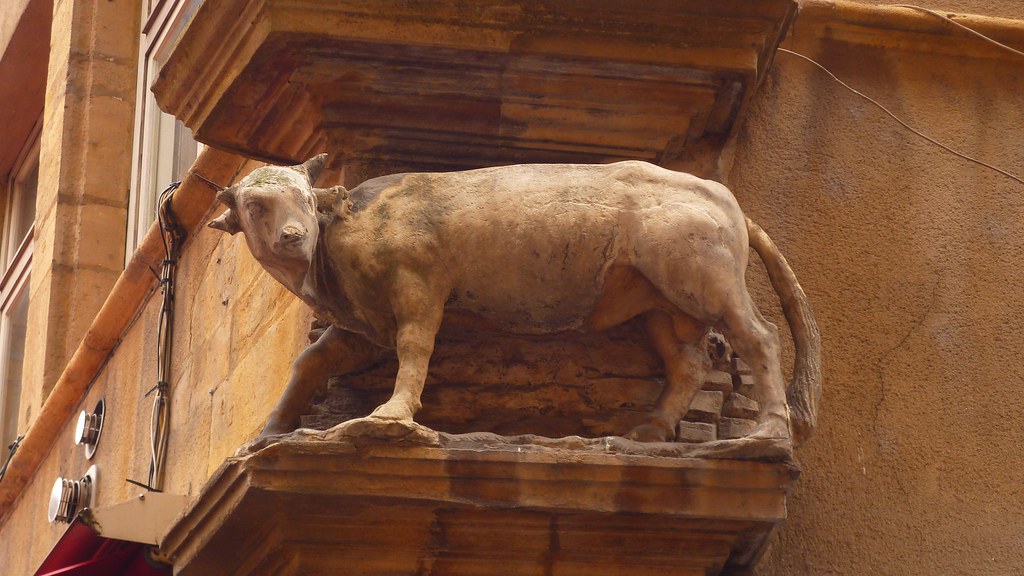 The rue de Bœuf owes its name to the statue of an ox (or more precisely a bull) at the corner of place Neuve-St-Jean, a work attributed to M. Hendricy. Nearby is the Maison du Crible at number 16 and dates from the 17th century. It has an ornate doorway with bosses and ringed columns topped by a pediment decorated with a small carving of the Adoration of the Magi.
The rue de Bœuf owes its name to the statue of an ox (or more precisely a bull) at the corner of place Neuve-St-Jean, a work attributed to M. Hendricy. Nearby is the Maison du Crible at number 16 and dates from the 17th century. It has an ornate doorway with bosses and ringed columns topped by a pediment decorated with a small carving of the Adoration of the Magi. 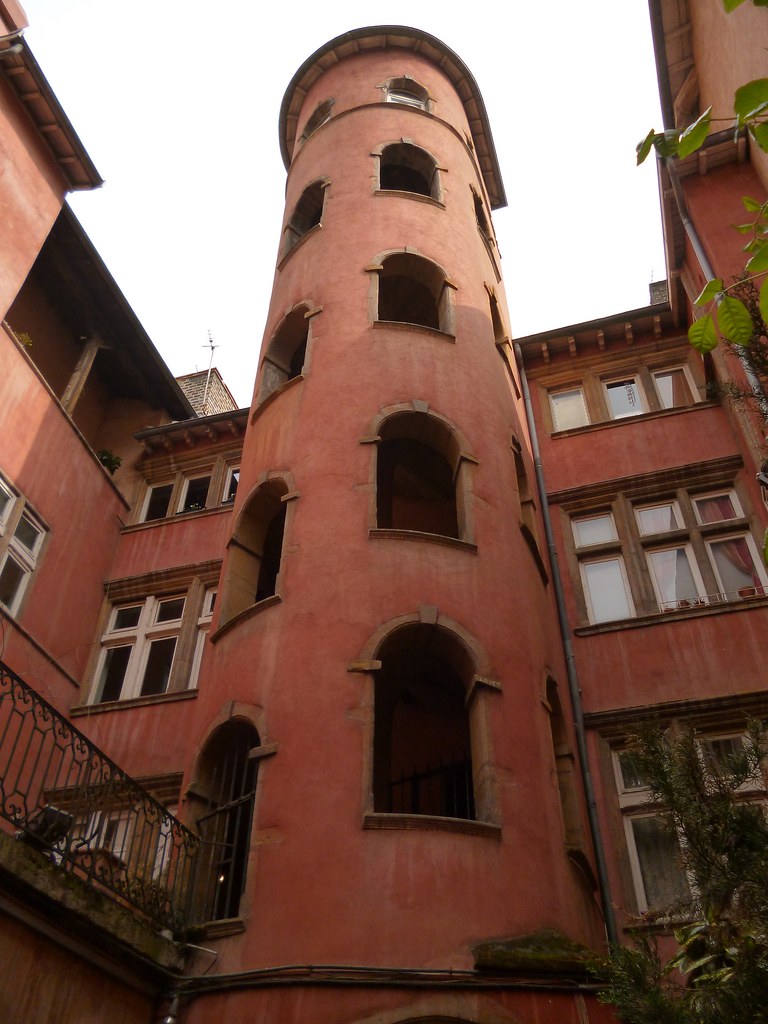 The alleyway with ogival vaulting supported on carved corbels leads to an inner courtyard in which the elegant round tower, with staggered openings, owes its name, Tour Rose to the color of its roughcast.
The alleyway with ogival vaulting supported on carved corbels leads to an inner courtyard in which the elegant round tower, with staggered openings, owes its name, Tour Rose to the color of its roughcast.
La place Bellecour is a large square in Lyon. In fact, it is the largest pedestrian square in Europe and makes a great starting point for visiting any part of Lyon. 
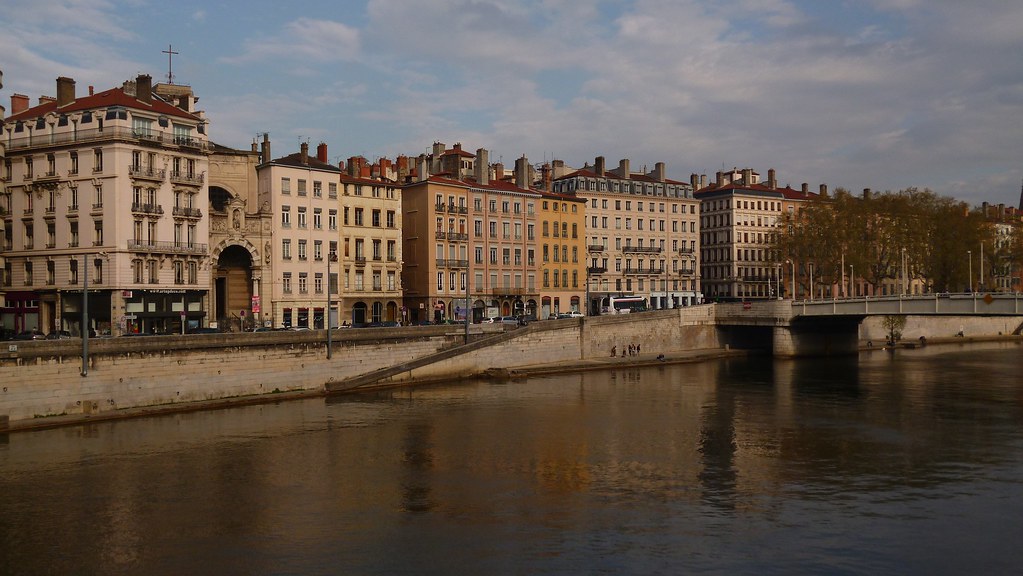
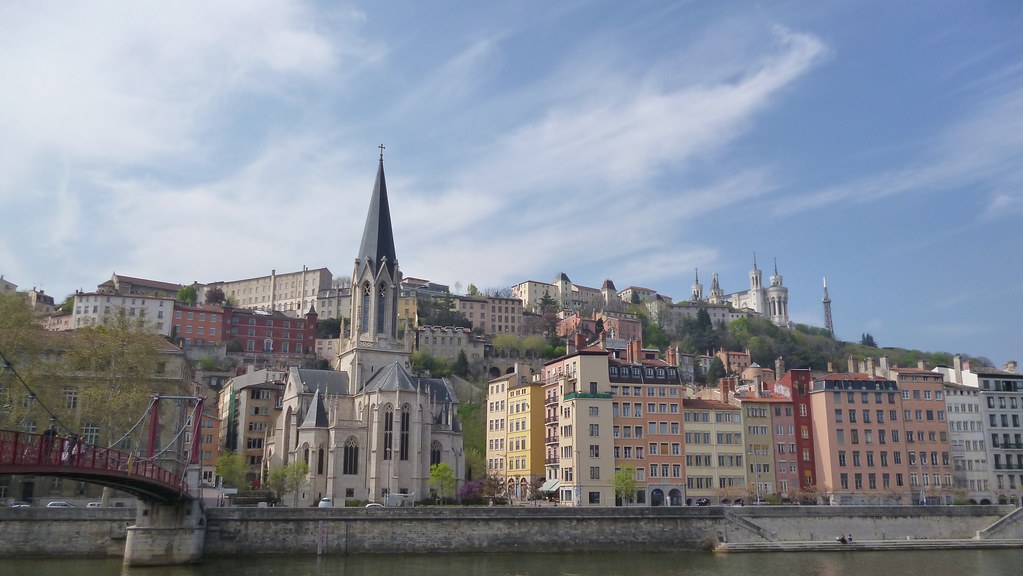 The town’s tourist office is located here and lies between La Saône and Le Rhône, forming the focal center of the city.
The town’s tourist office is located here and lies between La Saône and Le Rhône, forming the focal center of the city. 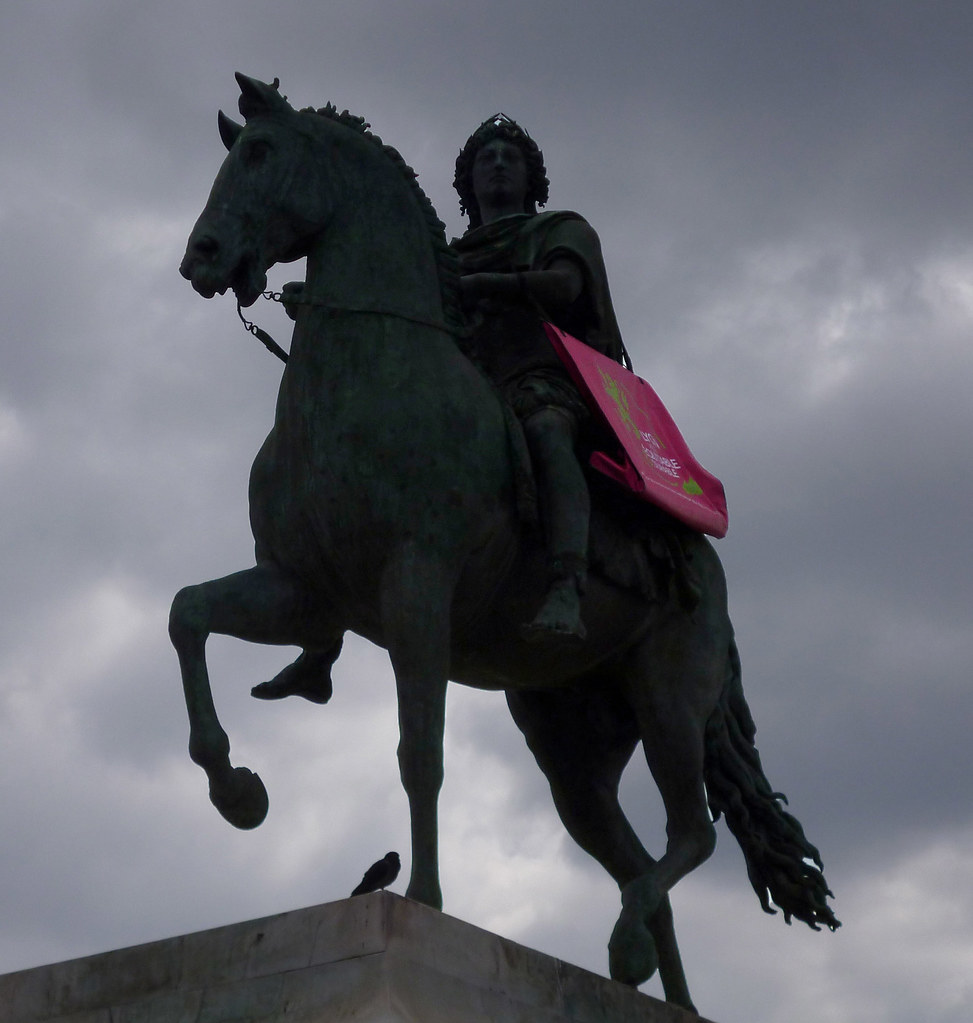
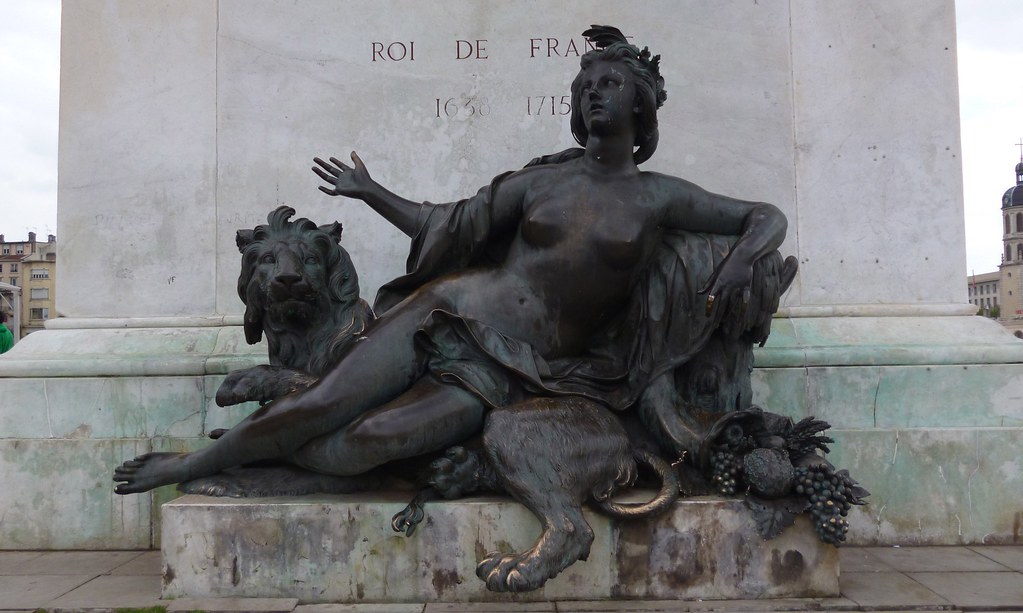
 In the center of the square, there is an equestrian statue of Louis XIV, made by François-Frédéric Lemot. It is accompanied, at the base, by two allegorical statues of La Saône and Le Rhône, created by brothers Nicolas and Guillaume Costou in 1720. Only meters away is the Place Antonin-Poncet designed by landscaper Michel Bourne in 1990.
In the center of the square, there is an equestrian statue of Louis XIV, made by François-Frédéric Lemot. It is accompanied, at the base, by two allegorical statues of La Saône and Le Rhône, created by brothers Nicolas and Guillaume Costou in 1720. Only meters away is the Place Antonin-Poncet designed by landscaper Michel Bourne in 1990. 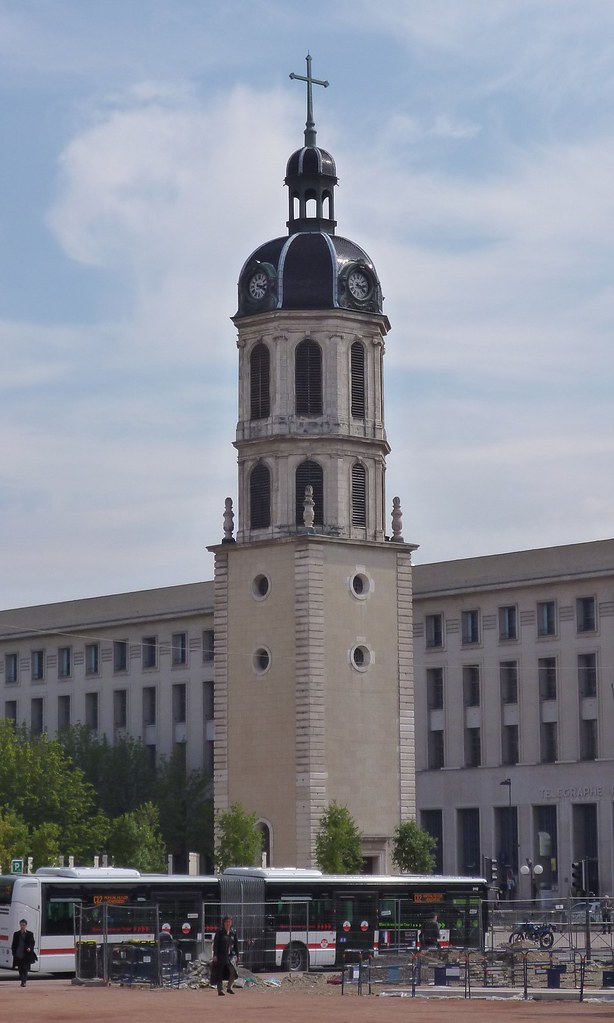 On the Place Antonin-Poncet, there is the bell tower from the old Hôpital de la Charité. The original hospital, built in 1622 by Martellange, was destroyed in 1934. The bell tower is all that remains. As one walks from la place Bellecour along the rue de la République, one eventually reaches another famous square in the north of the Presqu'île called the Place des Terreaux surrounded by cafés, restaurants, luxury shops, department stores, banks, government buildings, and cultural institutions.
On the Place Antonin-Poncet, there is the bell tower from the old Hôpital de la Charité. The original hospital, built in 1622 by Martellange, was destroyed in 1934. The bell tower is all that remains. As one walks from la place Bellecour along the rue de la République, one eventually reaches another famous square in the north of the Presqu'île called the Place des Terreaux surrounded by cafés, restaurants, luxury shops, department stores, banks, government buildings, and cultural institutions. 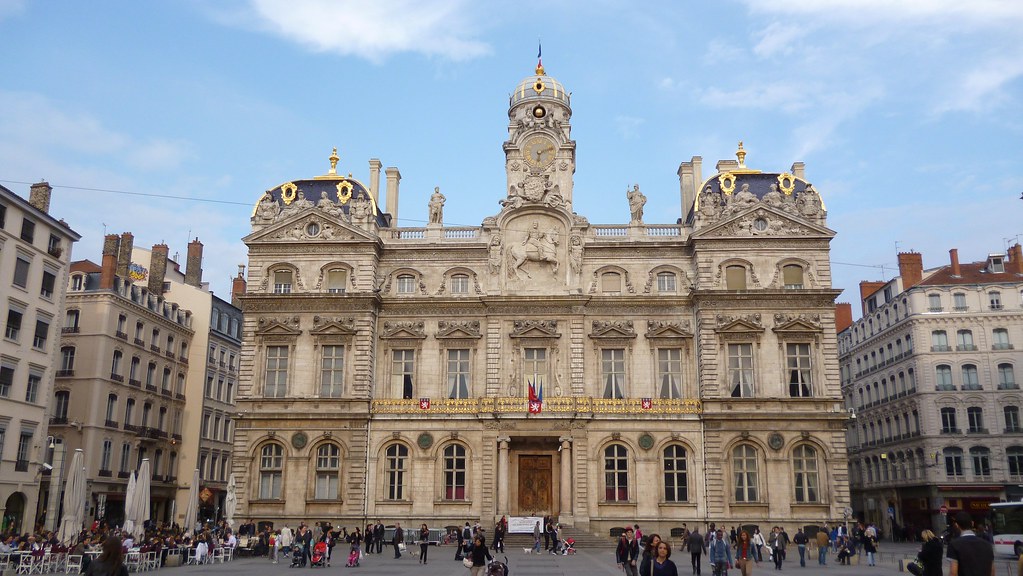 Perhaps the most famous of these is the Hôtel de Ville built between 1645 and 1651 by Simon Maupin and, following a fire in 1674, the building was restored and modified, including its facade, by Jules Hardouin-Mansart and his pupil Robert de Cotte.
Perhaps the most famous of these is the Hôtel de Ville built between 1645 and 1651 by Simon Maupin and, following a fire in 1674, the building was restored and modified, including its facade, by Jules Hardouin-Mansart and his pupil Robert de Cotte. 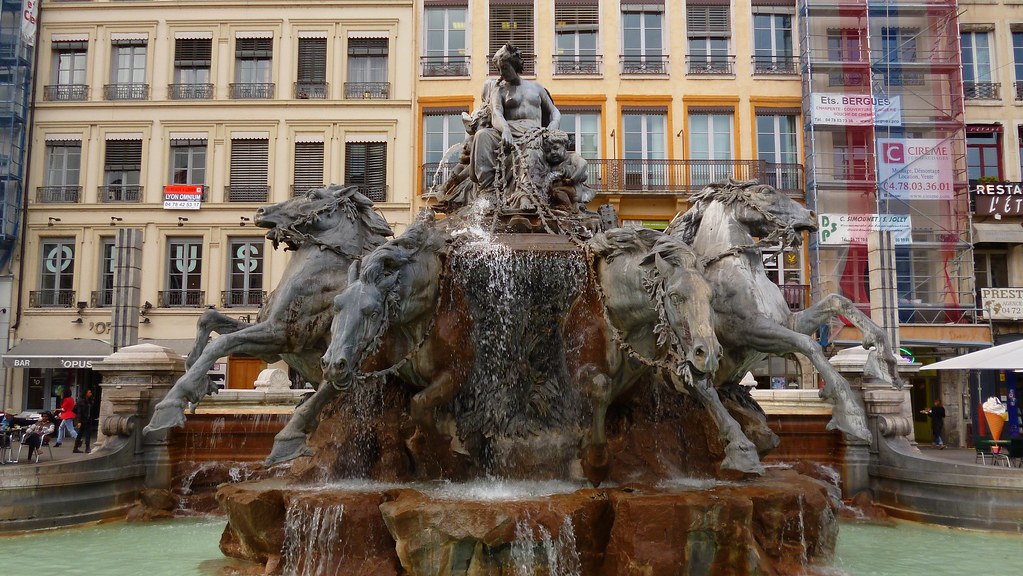 On the south side of the square is the Musée des Beaux-Arts and in the middle of the square is an allegorical fountain called 'Char triomphant de la Garonne', made by Frédéric-Auguste Bartholdi and inaugurated in 1891. It was originally made for the city of Bordeaux and represents the Garonne River and its four tributaries jumping into the ocean, all of which are symbolized by a woman leading a Quadriga chariot pulled by four horses.
On the south side of the square is the Musée des Beaux-Arts and in the middle of the square is an allegorical fountain called 'Char triomphant de la Garonne', made by Frédéric-Auguste Bartholdi and inaugurated in 1891. It was originally made for the city of Bordeaux and represents the Garonne River and its four tributaries jumping into the ocean, all of which are symbolized by a woman leading a Quadriga chariot pulled by four horses. 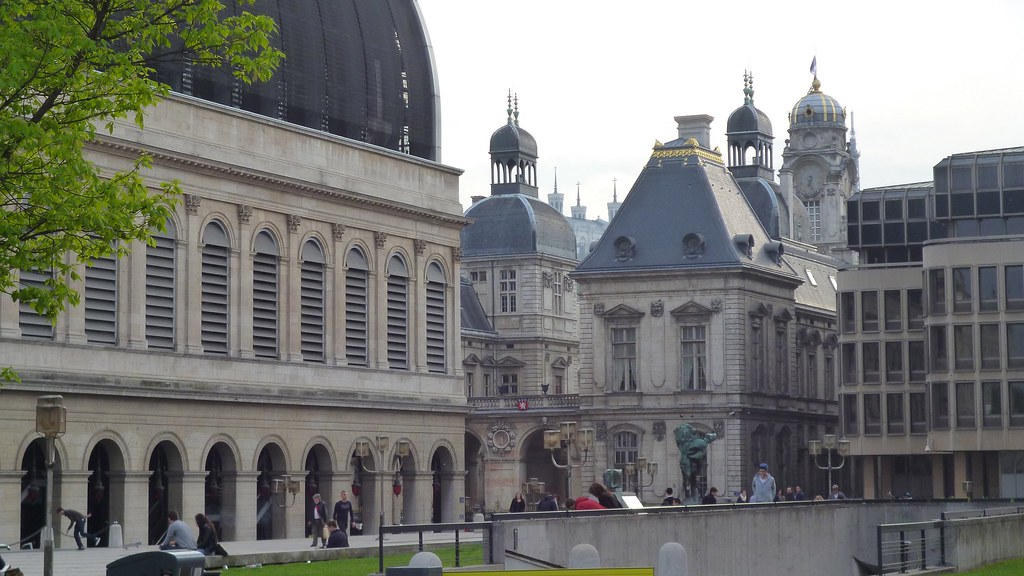
 Also not far from the Place des Terreaux is the Hôtel-Dieu, a functioning hospital since 1454 as well as the Opéra National de Lyon.
Also not far from the Place des Terreaux is the Hôtel-Dieu, a functioning hospital since 1454 as well as the Opéra National de Lyon. 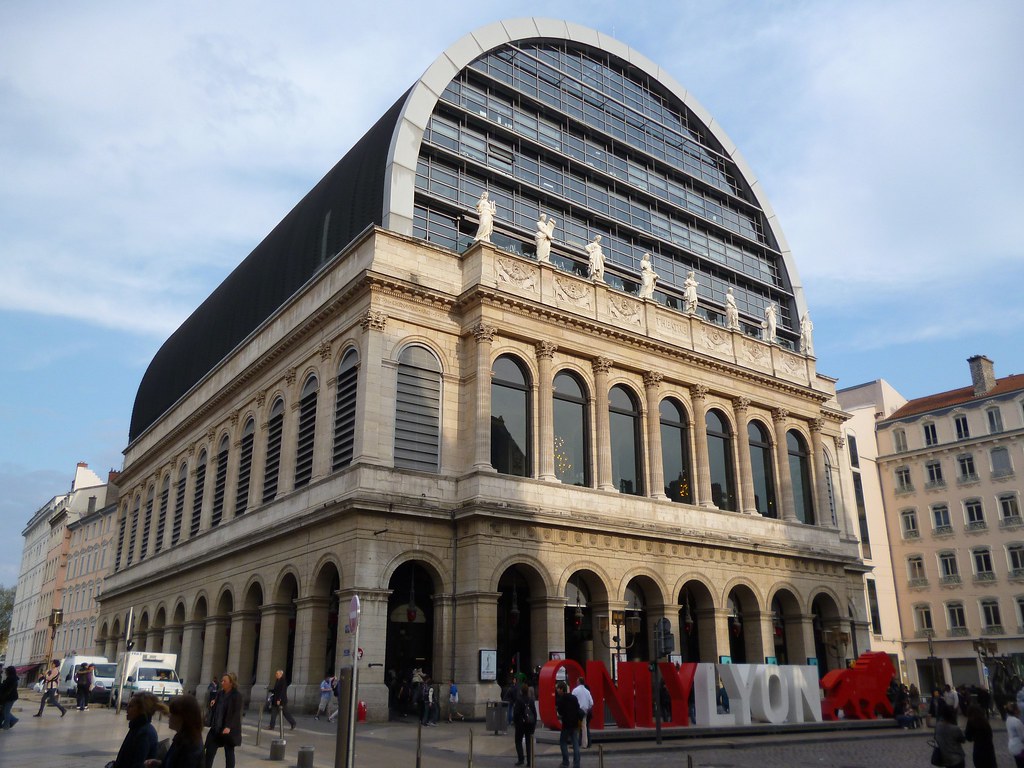 The original opera house was re-designed by the distinguished French architect, Jean Nouvel between 1985 and 1993 and is named after him.
The original opera house was re-designed by the distinguished French architect, Jean Nouvel between 1985 and 1993 and is named after him. 
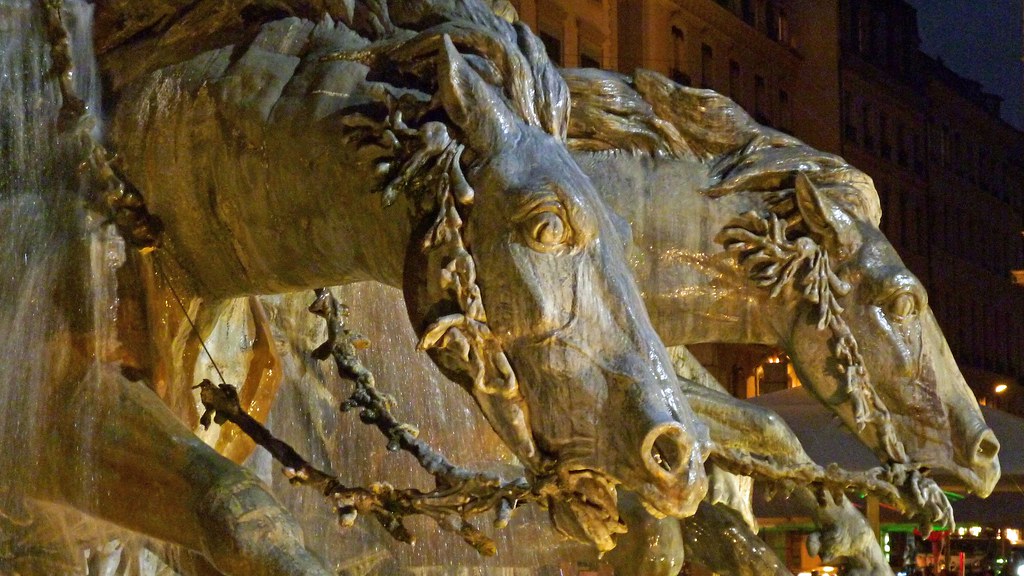
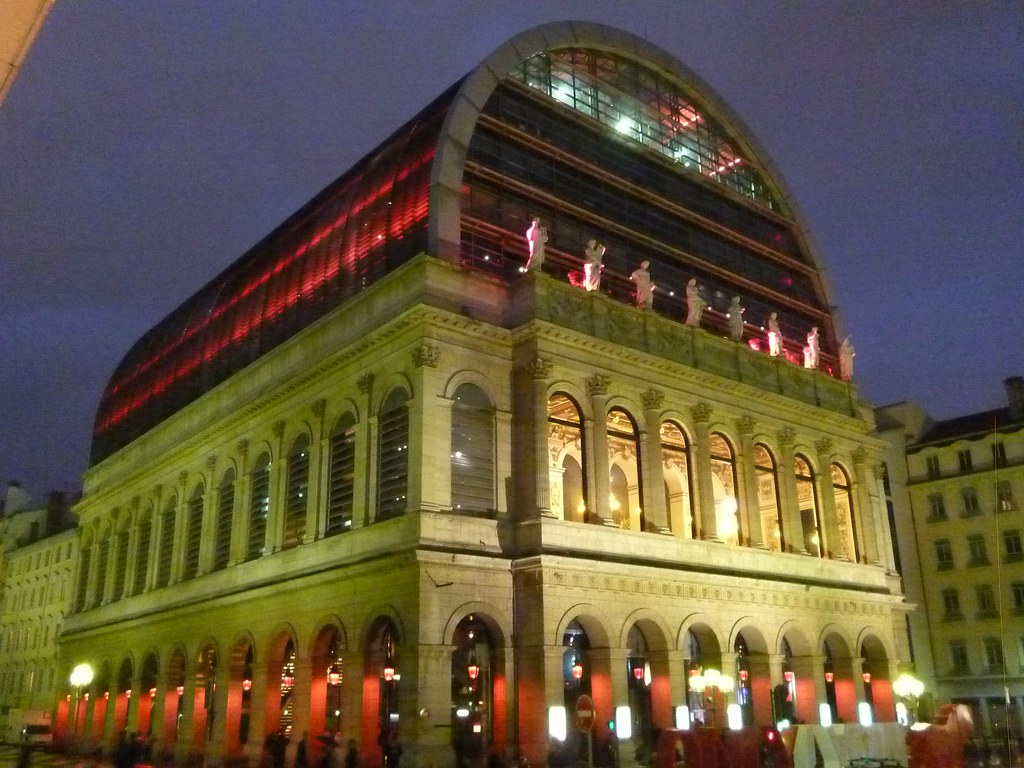 A highlight of any trip to Lyon is to see the town lit up at night. Another experience that everyone should try is to visit an authentic bouchon, a type of restaurant that serves traditional Lyonnaise cuisine, such as sausages, duck pâté or roast pork. The atmosphere is delightful with tables for two to four set close to one another.
A highlight of any trip to Lyon is to see the town lit up at night. Another experience that everyone should try is to visit an authentic bouchon, a type of restaurant that serves traditional Lyonnaise cuisine, such as sausages, duck pâté or roast pork. The atmosphere is delightful with tables for two to four set close to one another. 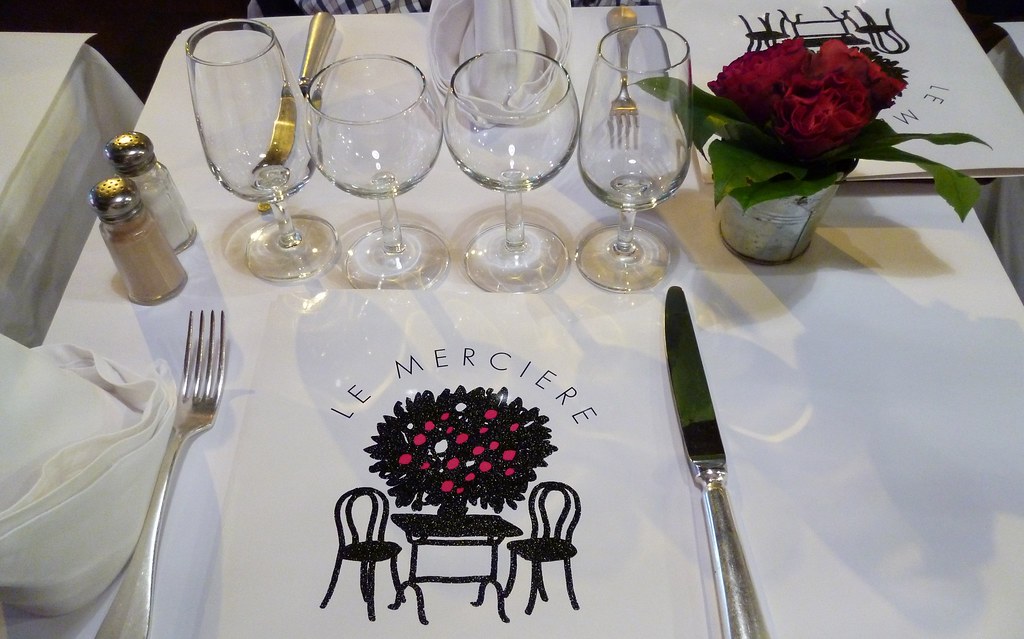
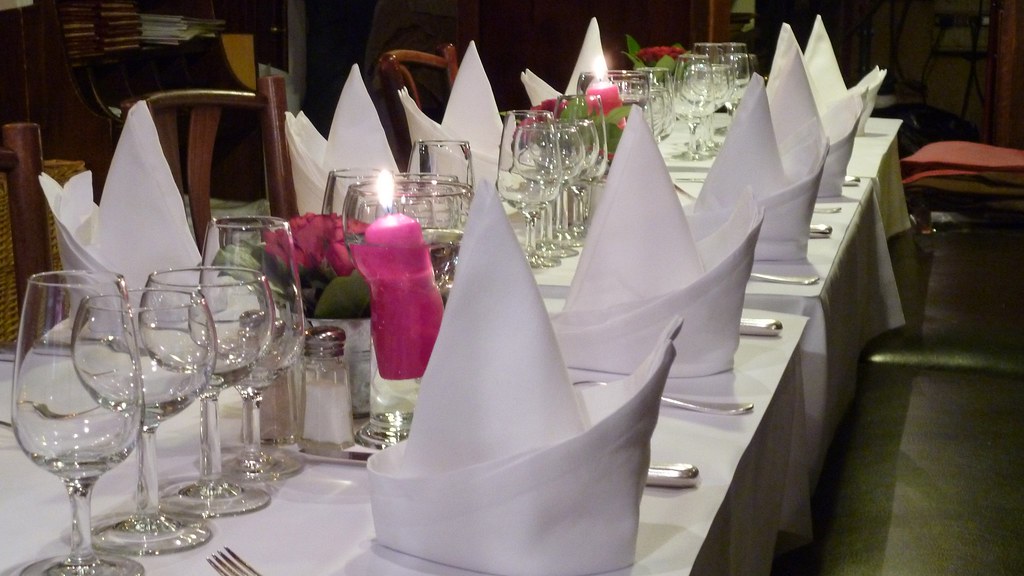 During the evening of my first night in Lyon, I ate an extraordinary meal at a local bouchon called “Le Mercière”. The pictures above and below are of the table setting and food that I had which included an amuse bouche of white beans, lentils, pork pâté, and potato salad served with bread and butter.
During the evening of my first night in Lyon, I ate an extraordinary meal at a local bouchon called “Le Mercière”. The pictures above and below are of the table setting and food that I had which included an amuse bouche of white beans, lentils, pork pâté, and potato salad served with bread and butter. 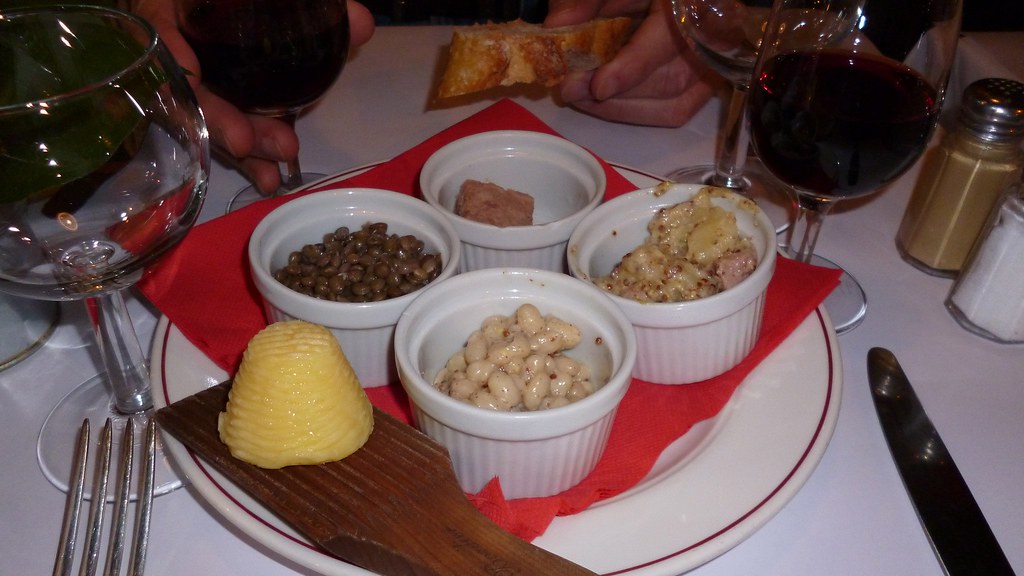
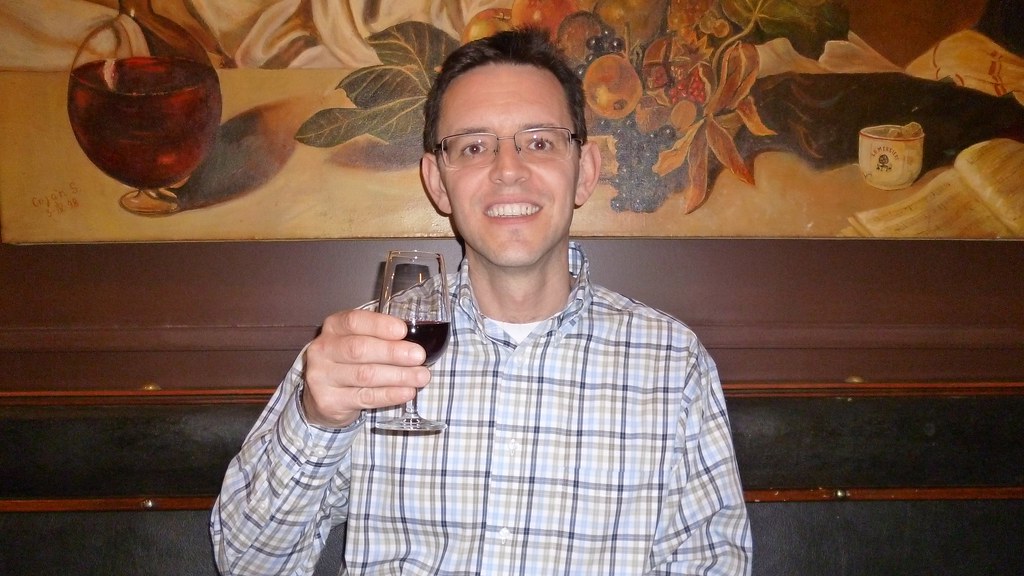 I also drank a nice bottle of red wine from 2009—a Brouilly Beaujolais.
I also drank a nice bottle of red wine from 2009—a Brouilly Beaujolais. 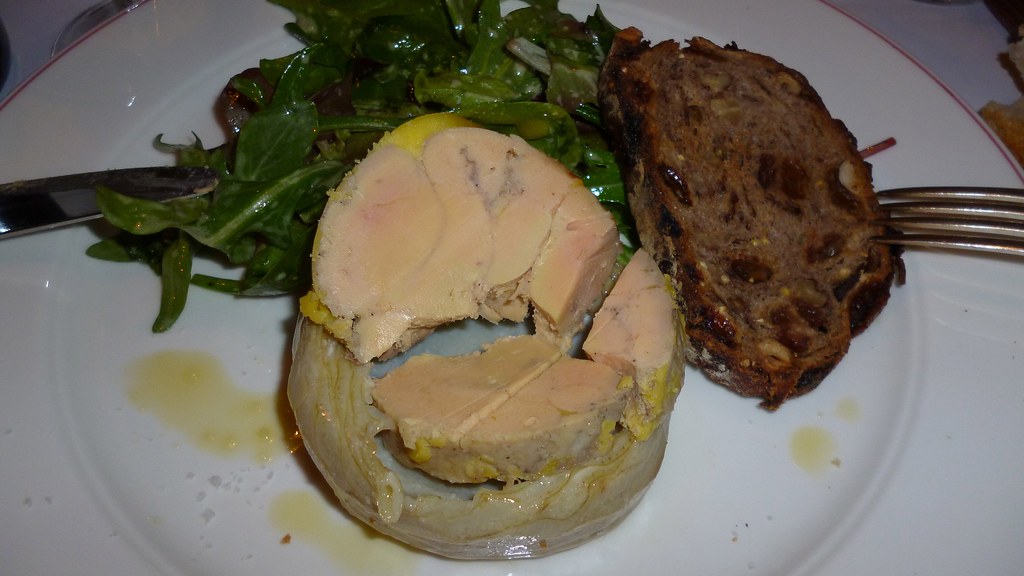 Of course, I didn’t eat alone. My friend had the “fond d’artichaut and foie gras mère Brazier” as his first course.
Of course, I didn’t eat alone. My friend had the “fond d’artichaut and foie gras mère Brazier” as his first course.  His second course was “pied de porc désossé et farci, sauce au Porto, purée ‘maison’ aux graton lyonnais”.
His second course was “pied de porc désossé et farci, sauce au Porto, purée ‘maison’ aux graton lyonnais”. 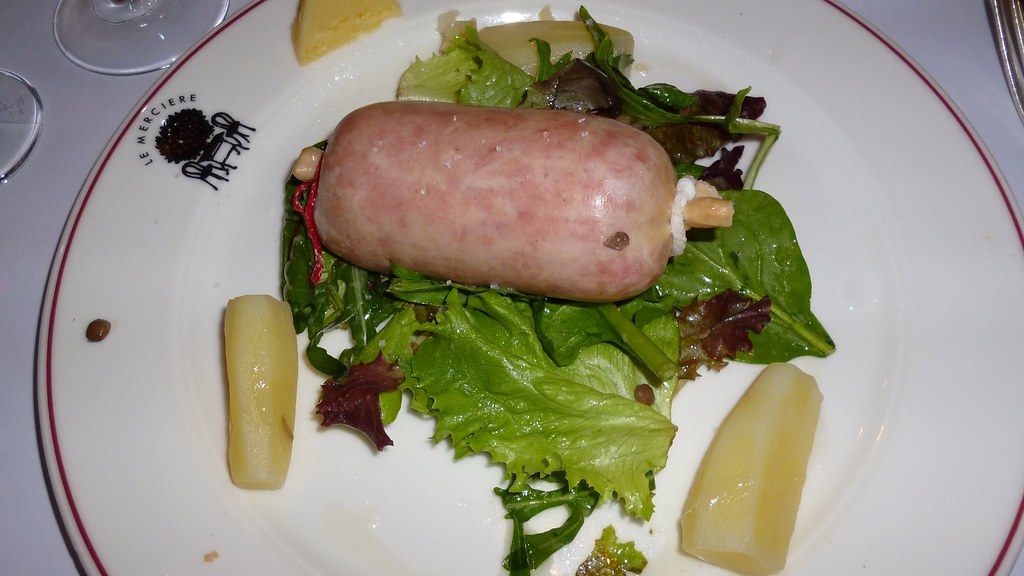
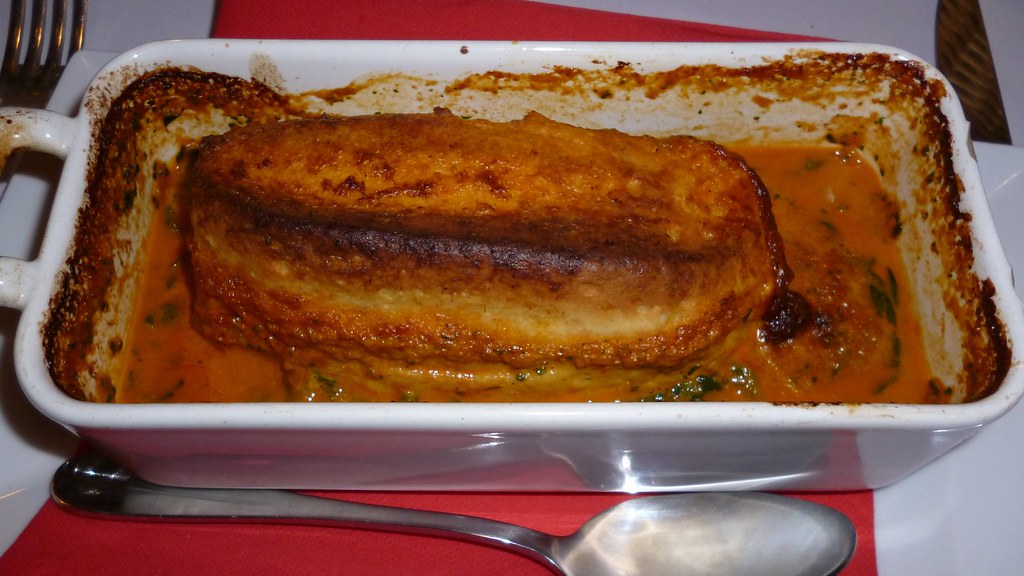 As for me, I had the “petit saucisson chaud lyonnais avec pommes vapeur” for my first course and the “quenelle de brochet avec sauce Nantua et épinards frais” for the second course. Afterward we had a cheese course which consisted of “fromage blanc à la crème” and “cervelle de canut”. For dessert we had “le gâteau Lyonnais” and “salade d’ananas à la menthe fraîche”. It was all so delicious but I must admit it was somewhat costly. I didn’t treat myself to such culinary delights the rest of the time I was in Lyon but instead chose to purchase sandwiches and bottled water when I was hungry or thirsty.
As for me, I had the “petit saucisson chaud lyonnais avec pommes vapeur” for my first course and the “quenelle de brochet avec sauce Nantua et épinards frais” for the second course. Afterward we had a cheese course which consisted of “fromage blanc à la crème” and “cervelle de canut”. For dessert we had “le gâteau Lyonnais” and “salade d’ananas à la menthe fraîche”. It was all so delicious but I must admit it was somewhat costly. I didn’t treat myself to such culinary delights the rest of the time I was in Lyon but instead chose to purchase sandwiches and bottled water when I was hungry or thirsty. 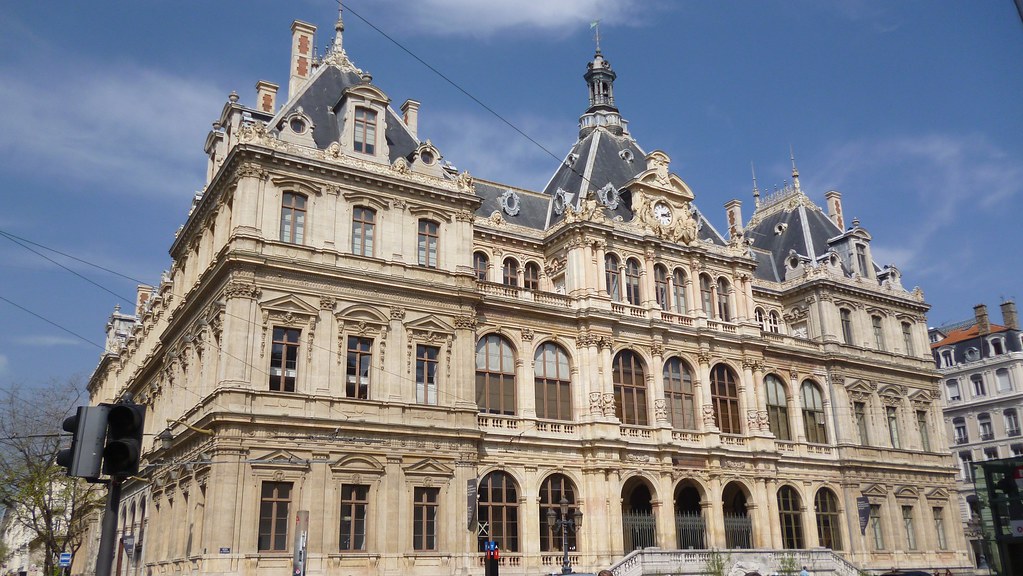 The Palais de la Bourse is another beautiful building I saw while I was in Lyon. Designed by architect René Dardel, it was built between 1856 and 1860. The building was inaugurated by Napoleon III and Empress Eugenie on 25 August 1860.
The Palais de la Bourse is another beautiful building I saw while I was in Lyon. Designed by architect René Dardel, it was built between 1856 and 1860. The building was inaugurated by Napoleon III and Empress Eugenie on 25 August 1860.
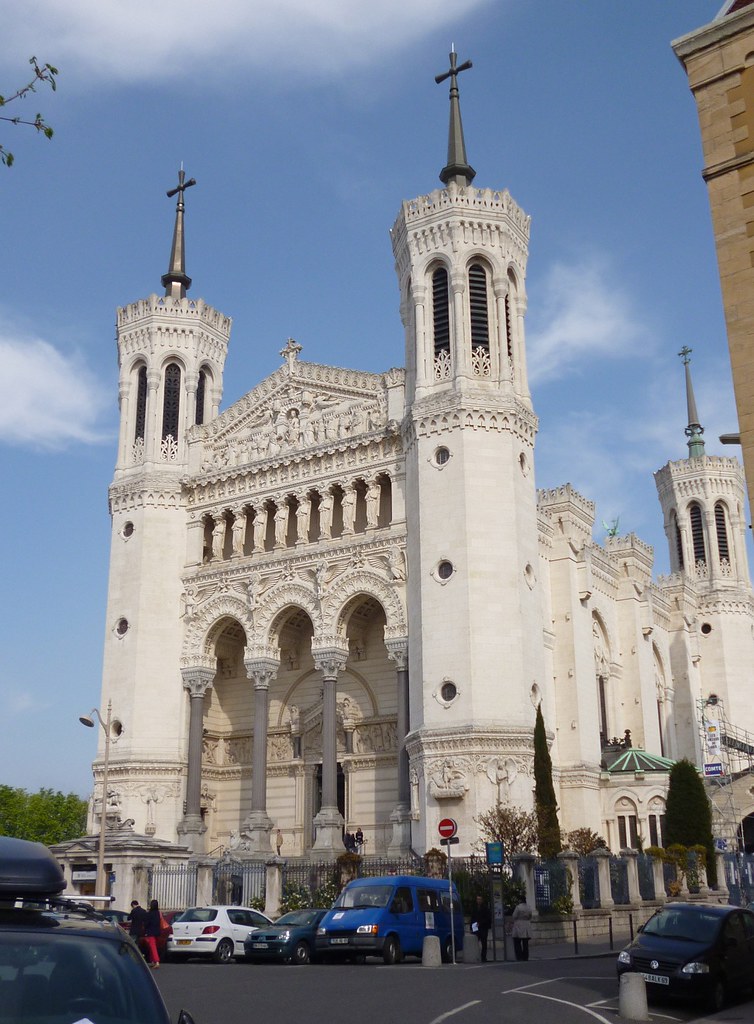 My trip to Lyon over the Easter holiday was amazing. I must say it is one of the most beautiful cities I’ve had the pleasure to visit. It felt like I was visiting a much cleaner and less crowded version of Paris. On Friday morning, I left Cherbourg for Saint-Lazare in Paris and switched trains at the Gare de Lyon where I hopped aboard a bullet train called the TGV, which got me to Lyon in just two hours. That’s pretty fast.
My trip to Lyon over the Easter holiday was amazing. I must say it is one of the most beautiful cities I’ve had the pleasure to visit. It felt like I was visiting a much cleaner and less crowded version of Paris. On Friday morning, I left Cherbourg for Saint-Lazare in Paris and switched trains at the Gare de Lyon where I hopped aboard a bullet train called the TGV, which got me to Lyon in just two hours. That’s pretty fast. 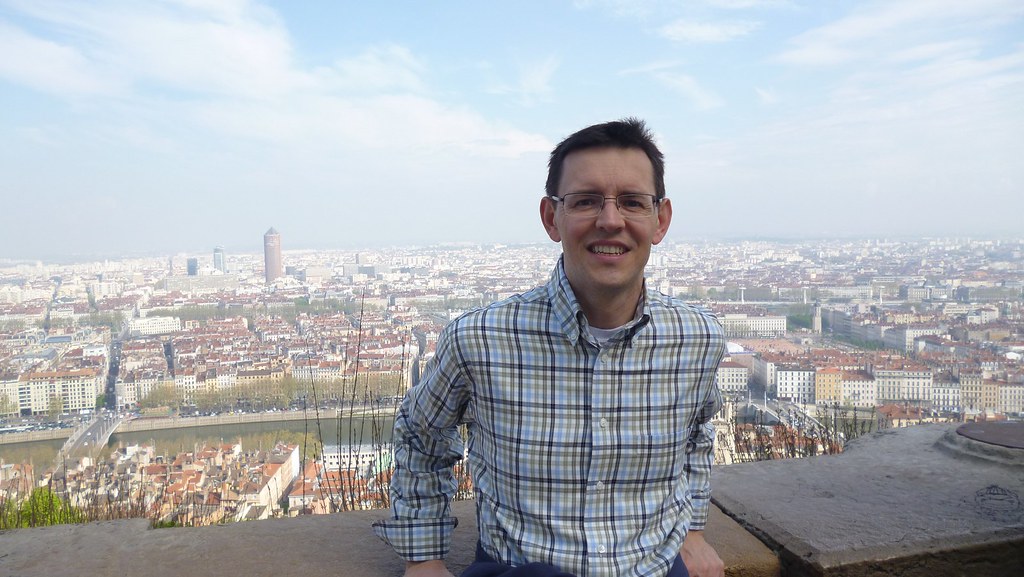 After visiting the Roman ruins above the city, I proceeded to visit one of the most popular places of pilgrimage built atop the hill of Fourvière, the basilica devoted to the Virgin Mary.
After visiting the Roman ruins above the city, I proceeded to visit one of the most popular places of pilgrimage built atop the hill of Fourvière, the basilica devoted to the Virgin Mary.  The Basilica of Notre-Dame de Fourvière was built between 1872 and 1884. In 1870, during the Franco-Prussian war, the citizens of Lyons prayed to the Virgin Mary for her protection and they made a promise to build an important sanctuary in her honor if the war did not touch the city.
The Basilica of Notre-Dame de Fourvière was built between 1872 and 1884. In 1870, during the Franco-Prussian war, the citizens of Lyons prayed to the Virgin Mary for her protection and they made a promise to build an important sanctuary in her honor if the war did not touch the city. 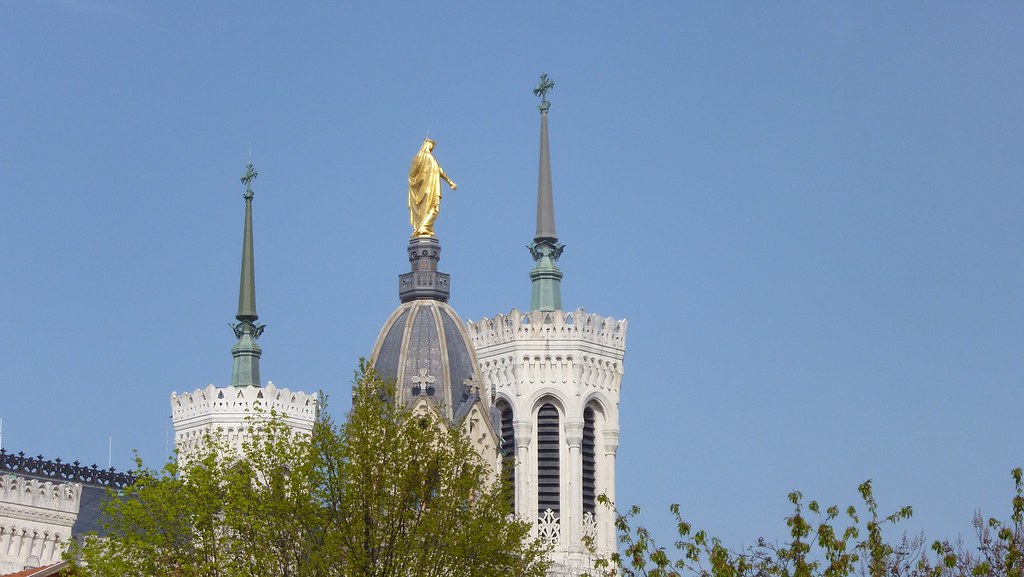
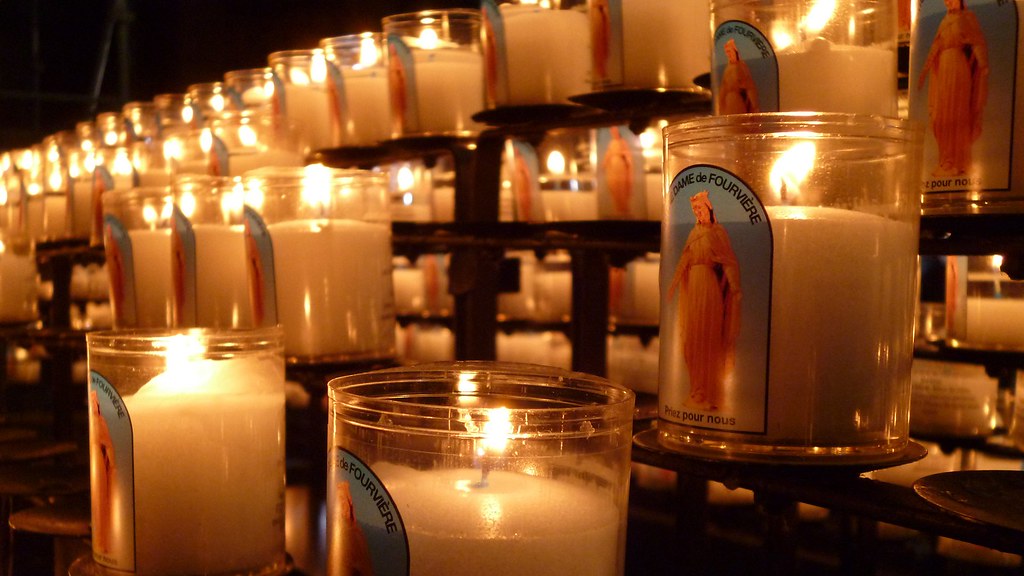 Their prayer was answered and, to thank her, the decision was taken to build Our Lady of Fourvière. The architect was Pierre Bossan who built a monument drawing upon Romanesque and Byzantine designs.
Their prayer was answered and, to thank her, the decision was taken to build Our Lady of Fourvière. The architect was Pierre Bossan who built a monument drawing upon Romanesque and Byzantine designs.  It has four main towers and a bell tower topped with a gilded statue of the Virgin Mary. It is actually two churches, one on top of the other.
It has four main towers and a bell tower topped with a gilded statue of the Virgin Mary. It is actually two churches, one on top of the other. 
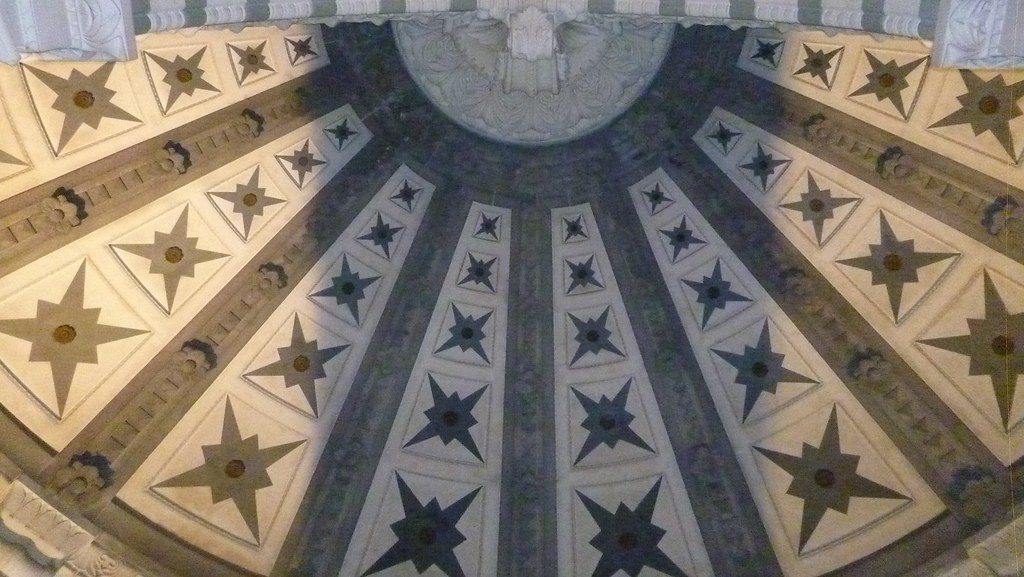
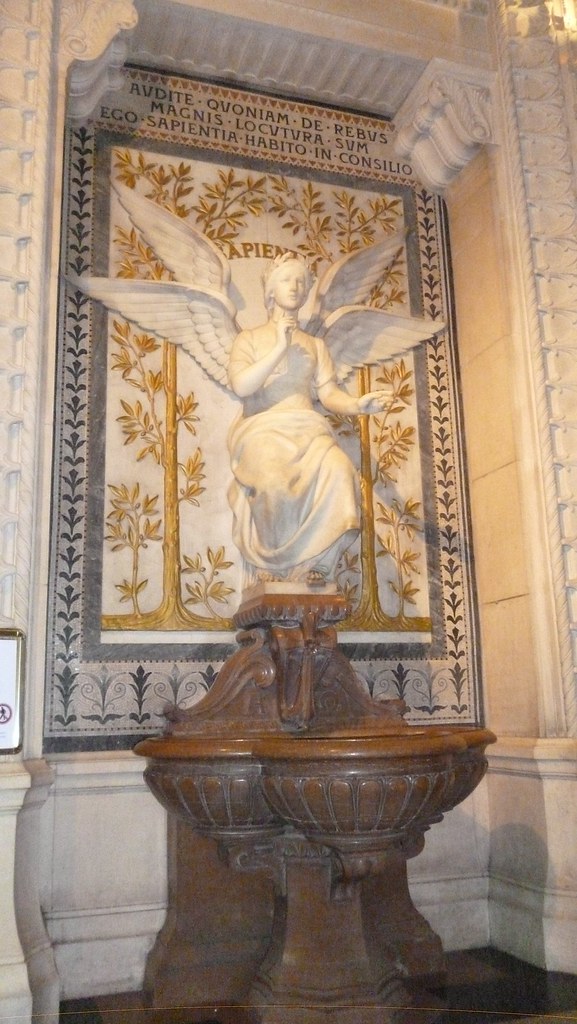 The lower sanctuary devoted to St-Joseph is simple in design while the upper sanctuary is ornate and features stunning mosaic wall panels and intricate, eclectic details carved in stone and marble in nearly every corner. Sadly, the interior was completely covered in scaffolding during my visit allowing less than a quarter of the church to be seen.
The lower sanctuary devoted to St-Joseph is simple in design while the upper sanctuary is ornate and features stunning mosaic wall panels and intricate, eclectic details carved in stone and marble in nearly every corner. Sadly, the interior was completely covered in scaffolding during my visit allowing less than a quarter of the church to be seen. 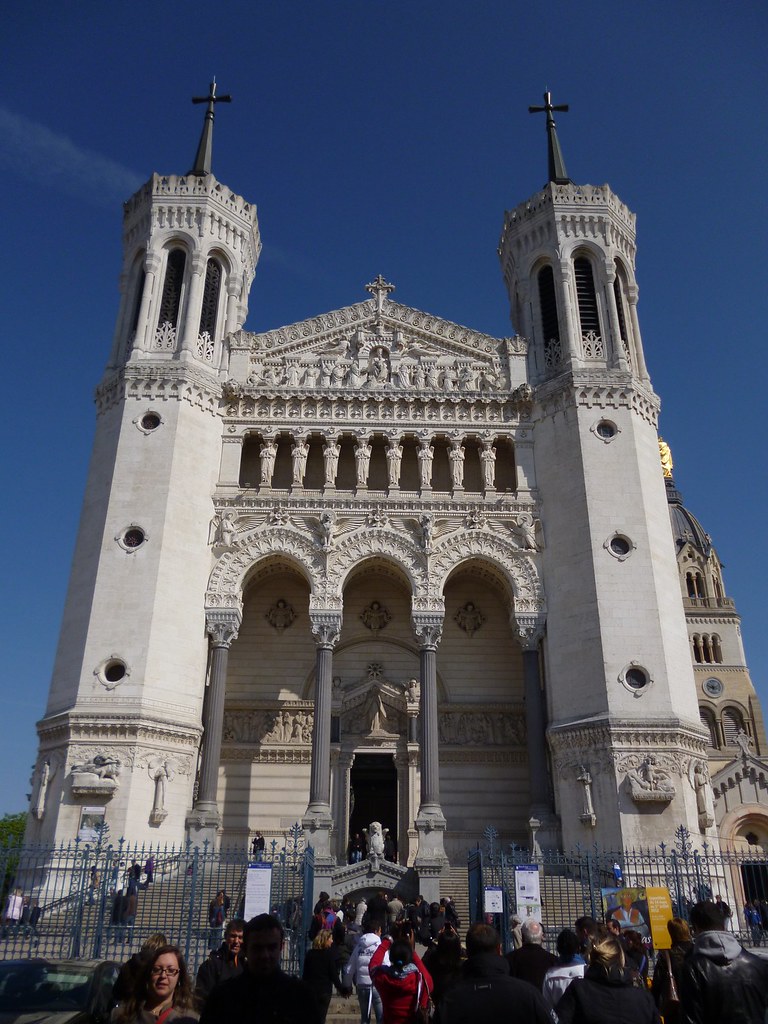 Oh well. I was still hugely impressed and hope to visit again one day when the restorations are complete.
Oh well. I was still hugely impressed and hope to visit again one day when the restorations are complete.  In front of the basilica is a statue of Pope John Paul II created by sculptor Elisabeth Cibot. It was unveiled in October 2011 to commemorate the pope’s visit to Lyon 25 years earlier.
In front of the basilica is a statue of Pope John Paul II created by sculptor Elisabeth Cibot. It was unveiled in October 2011 to commemorate the pope’s visit to Lyon 25 years earlier. 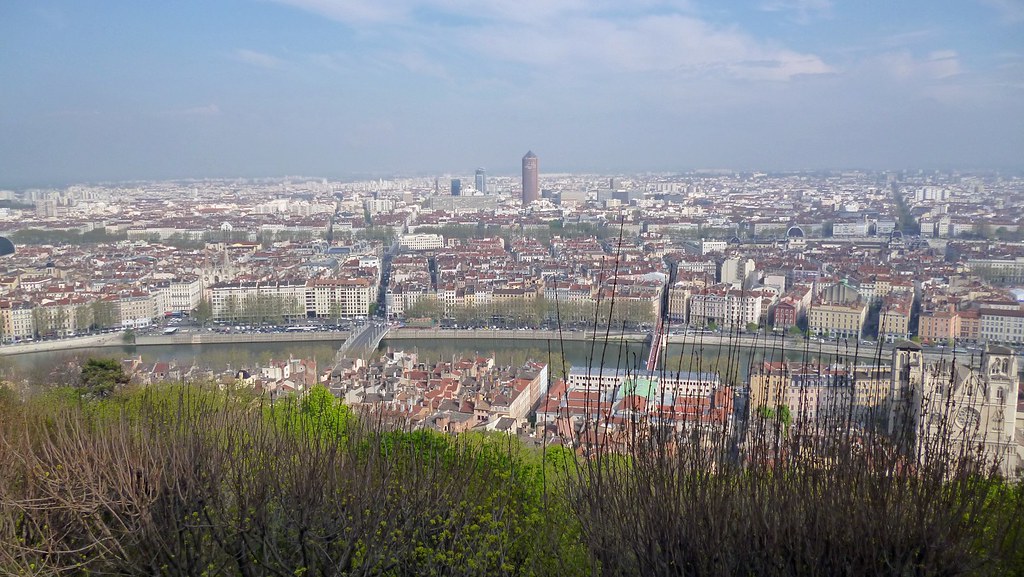 The esplanade beside the basilica offers spectacular views of the entire city below and on clear days, the Alps in the distance.
The esplanade beside the basilica offers spectacular views of the entire city below and on clear days, the Alps in the distance.